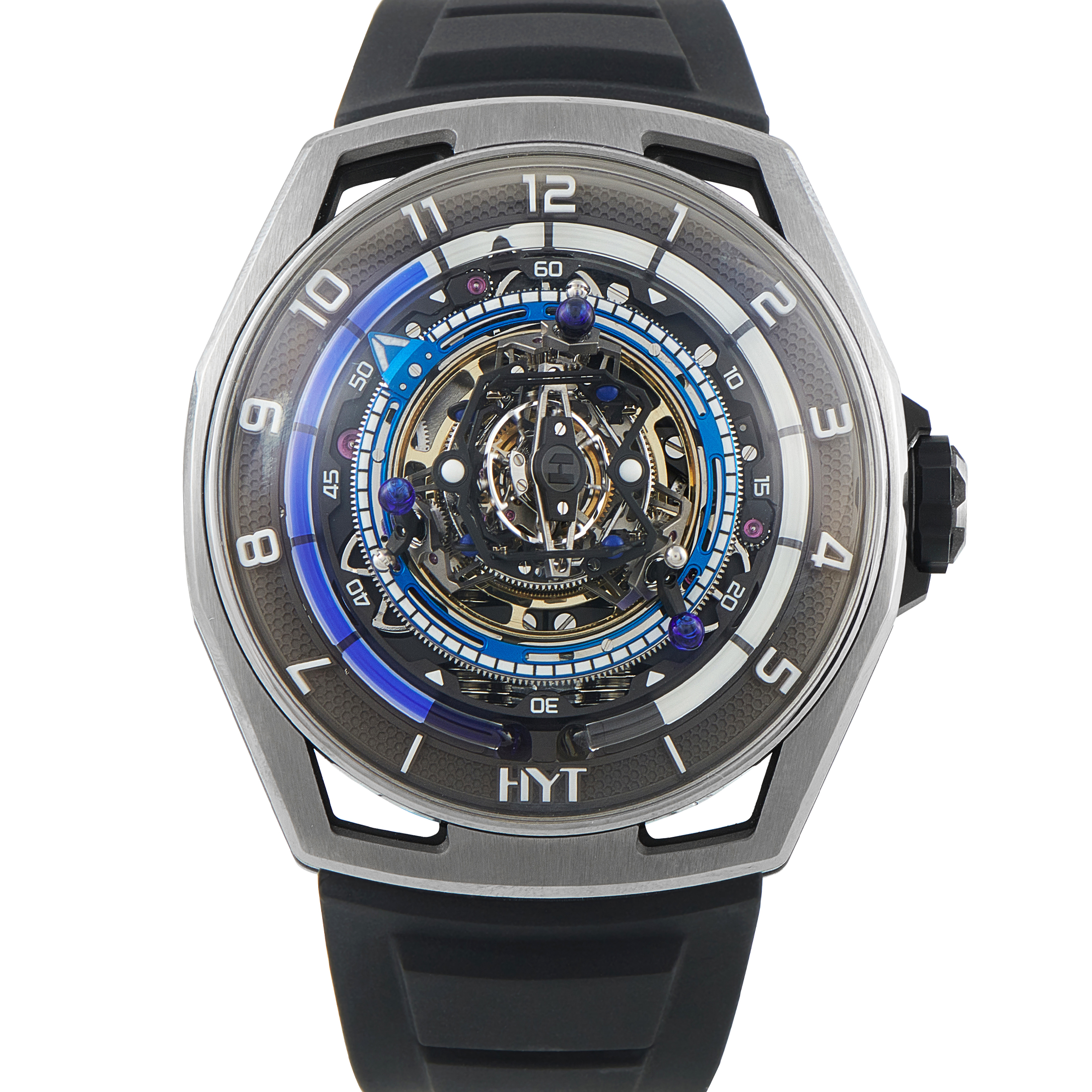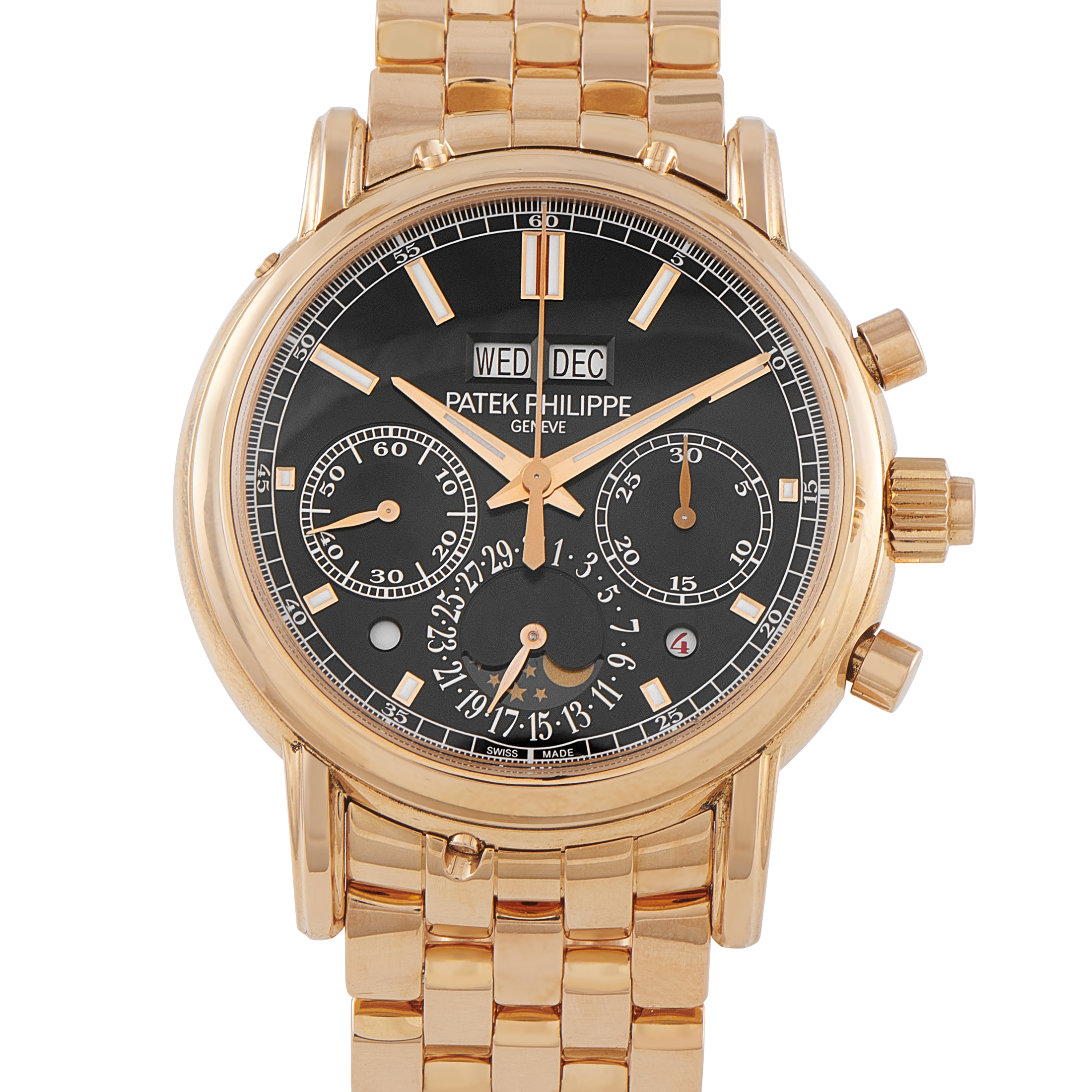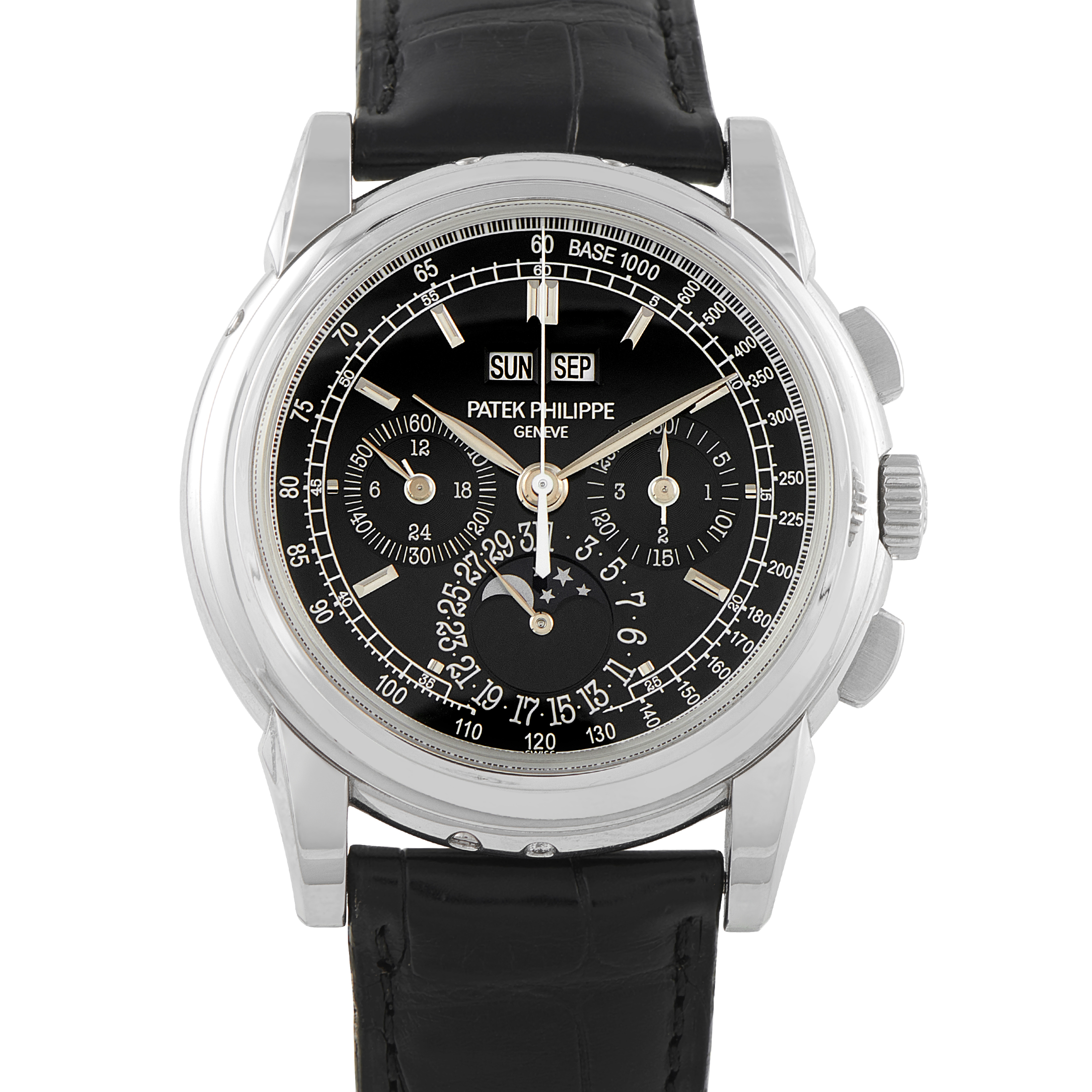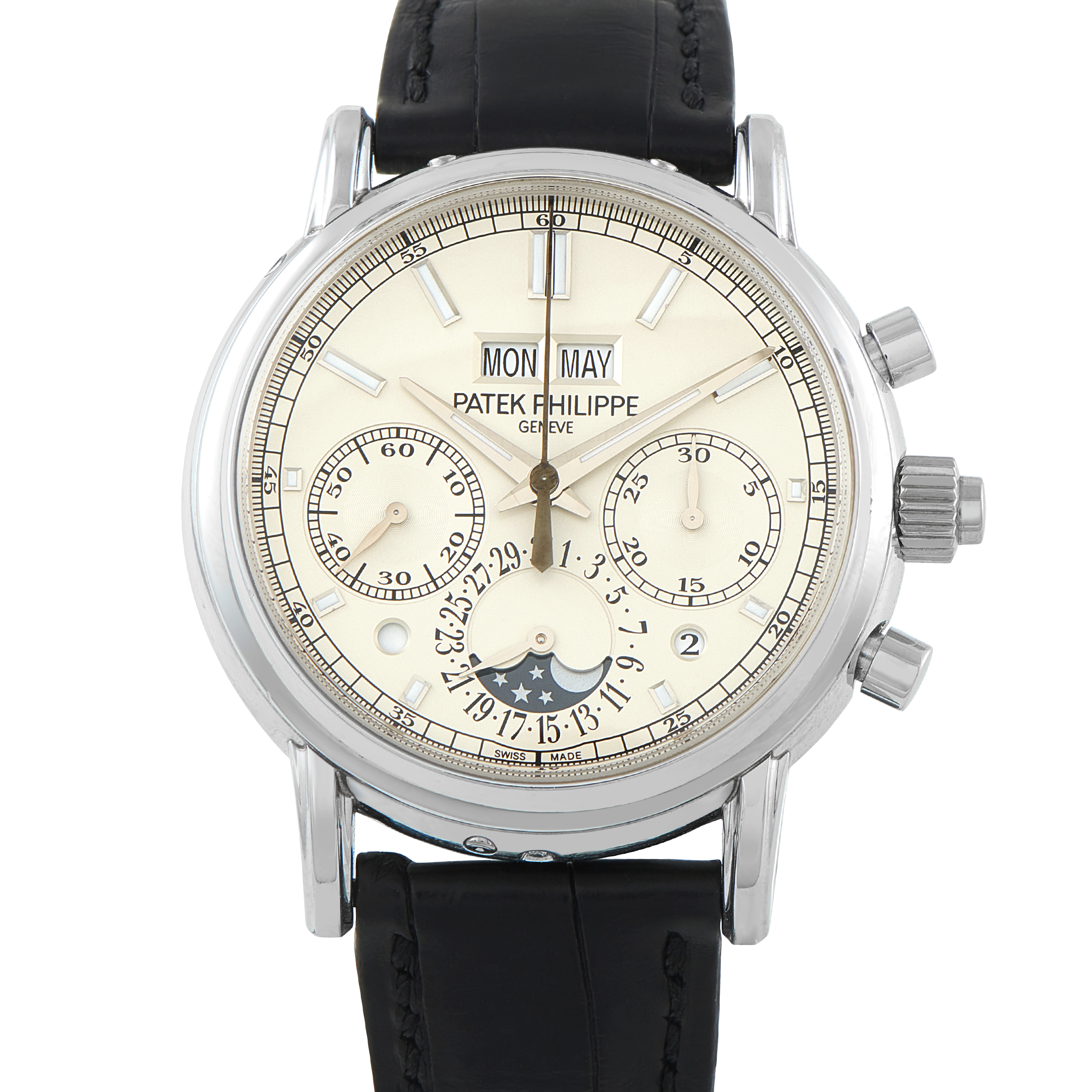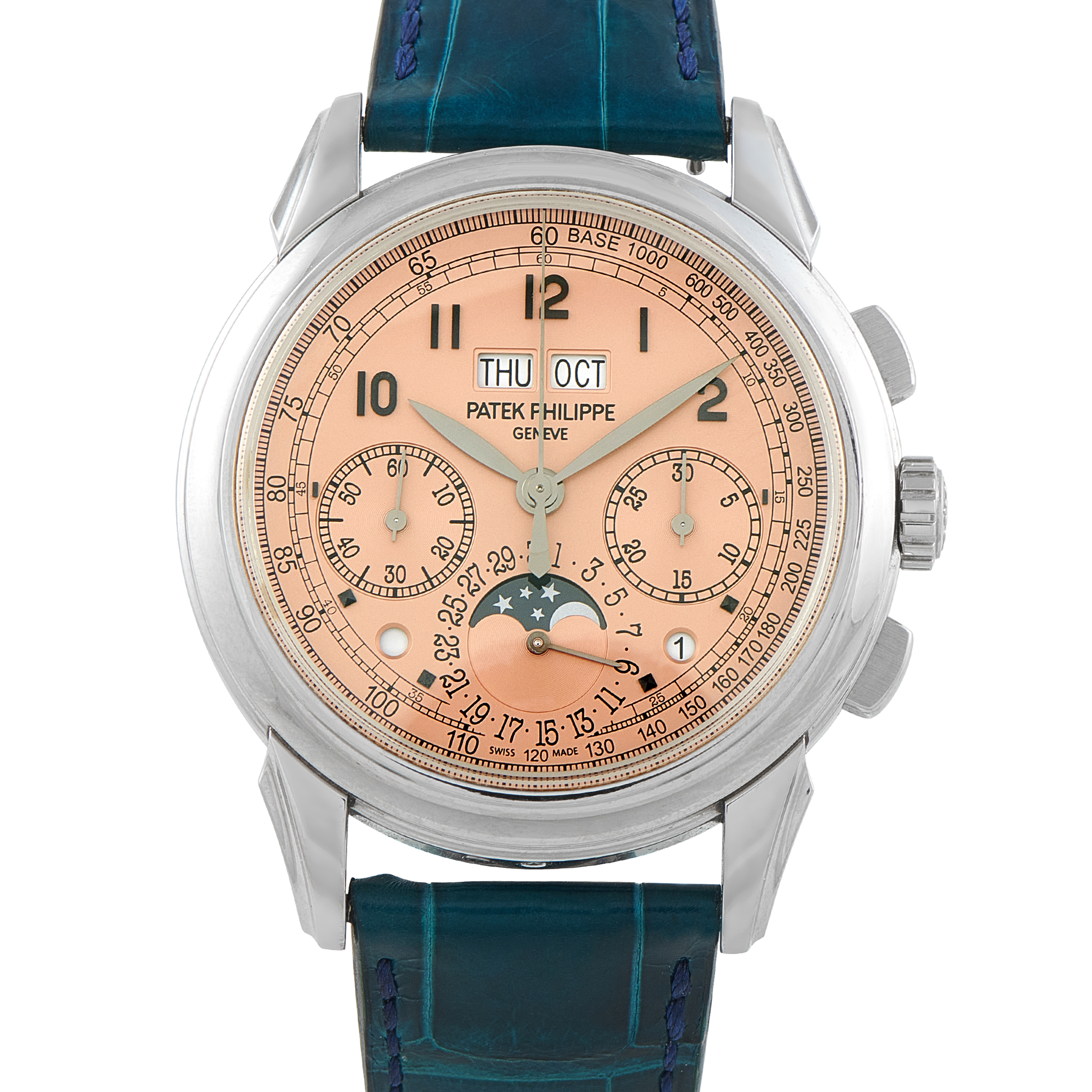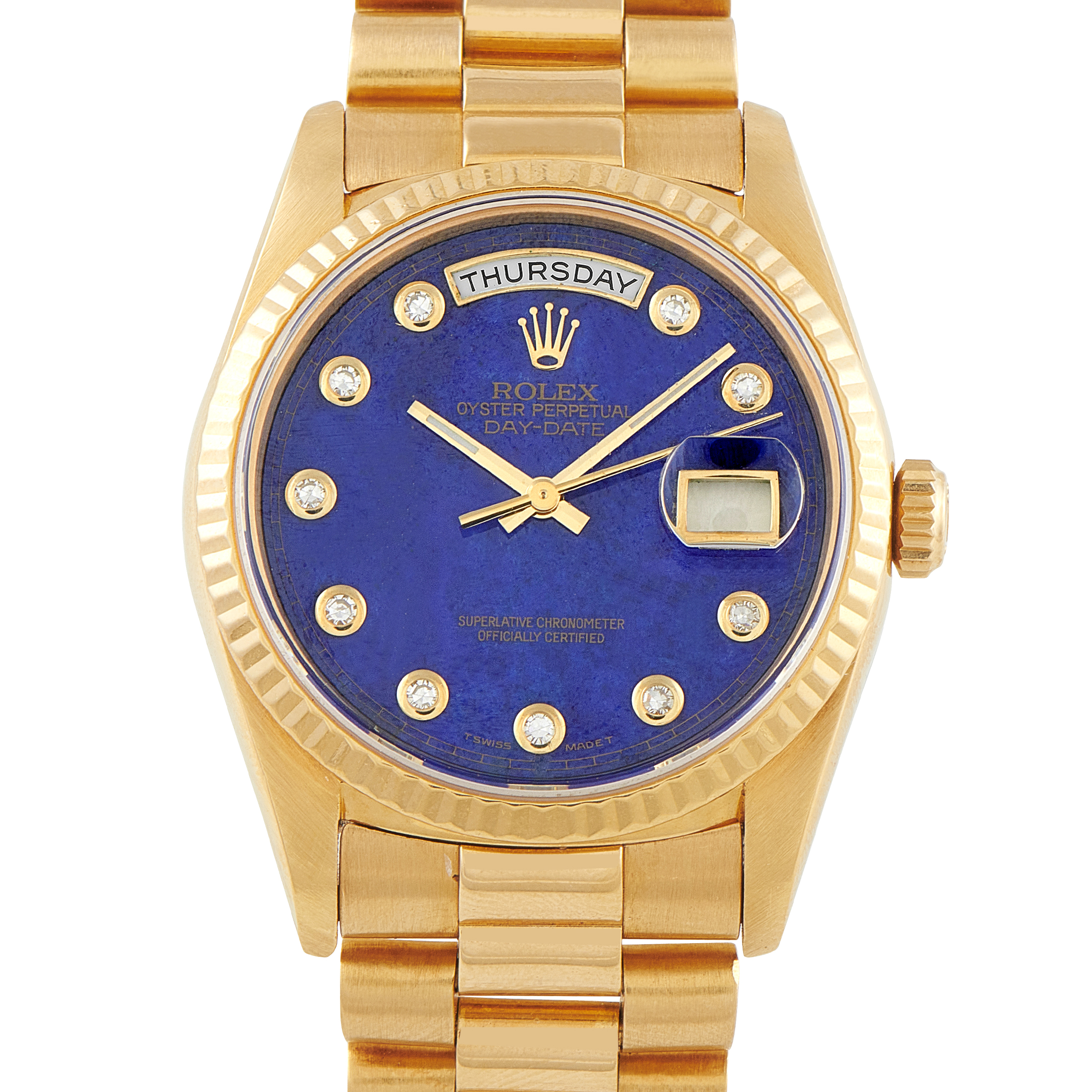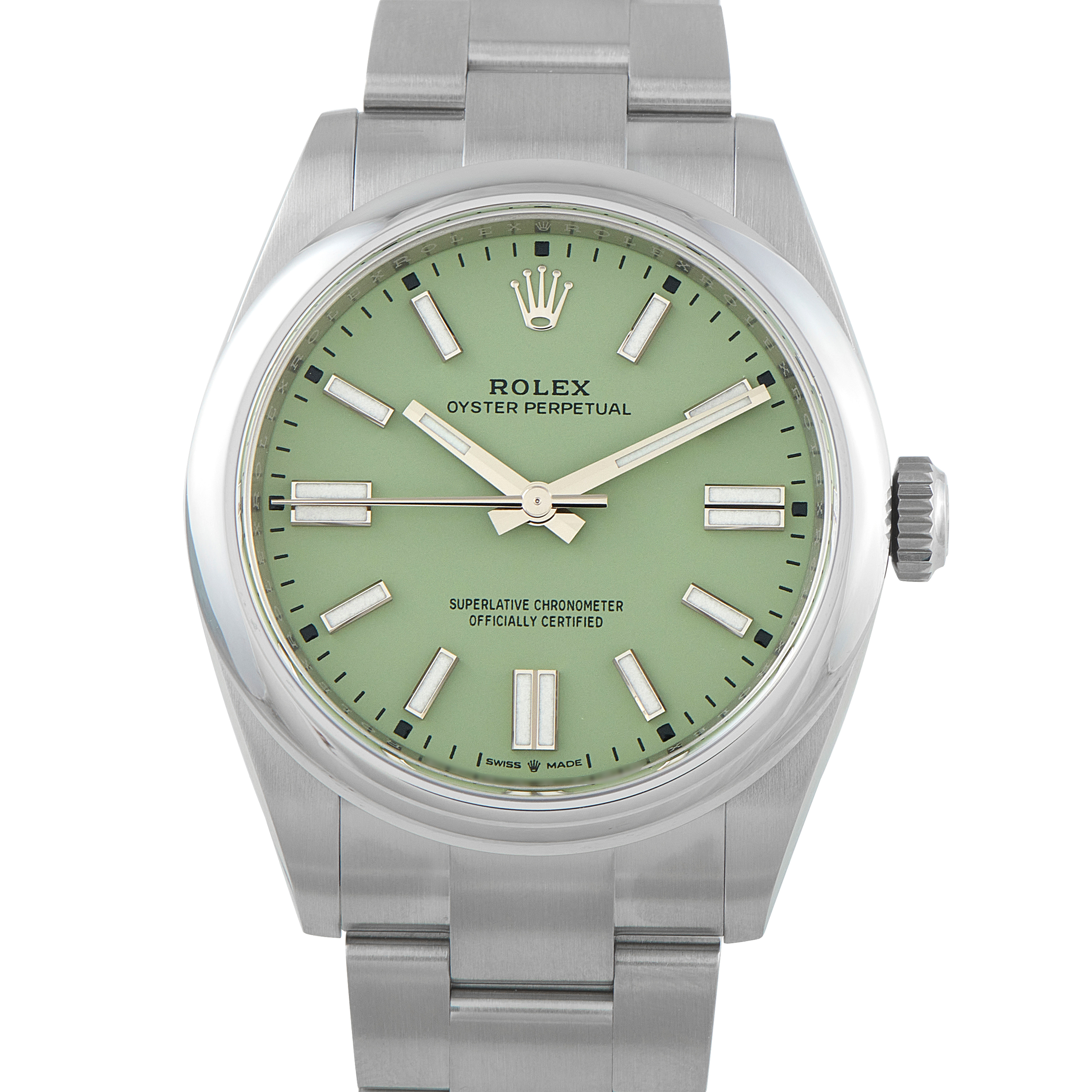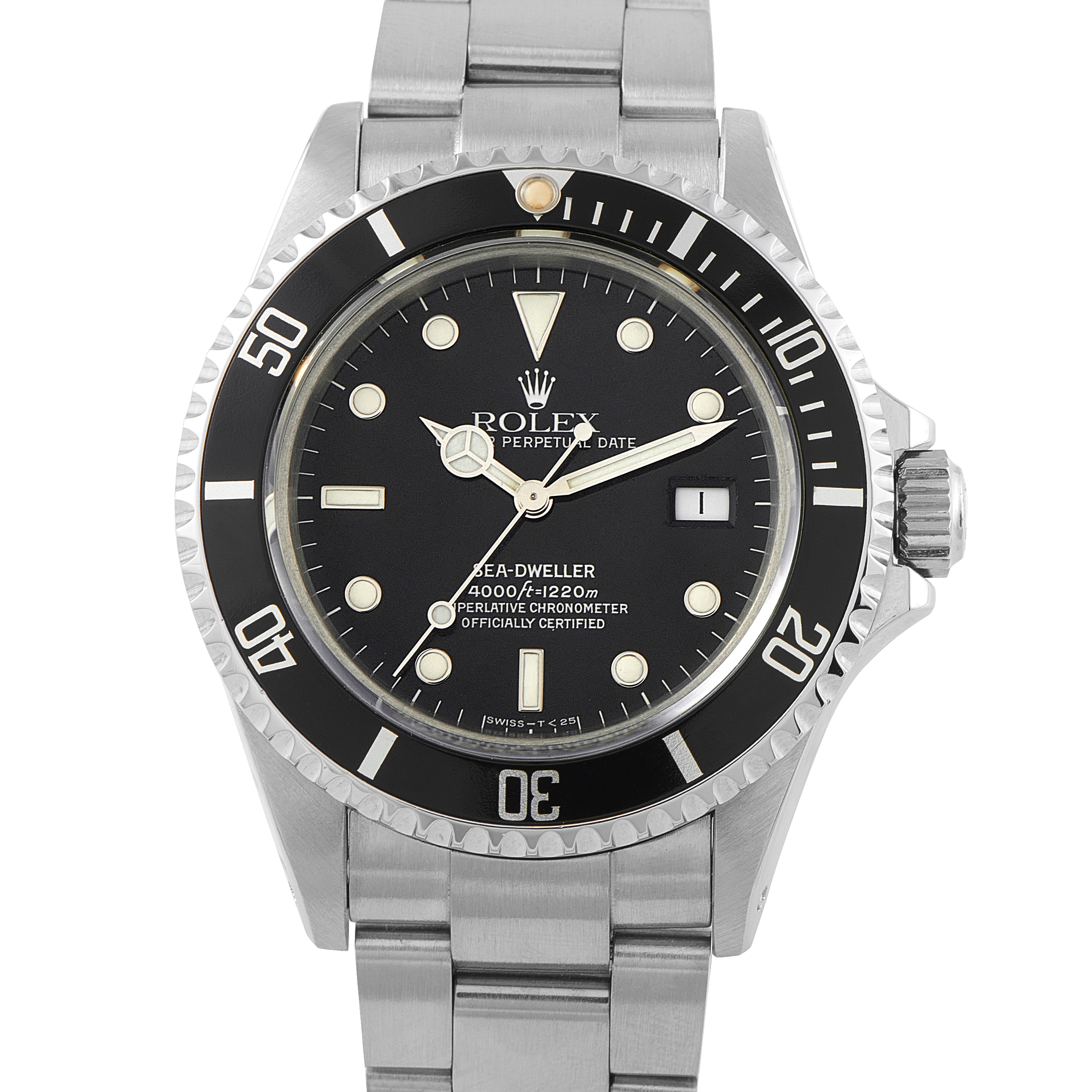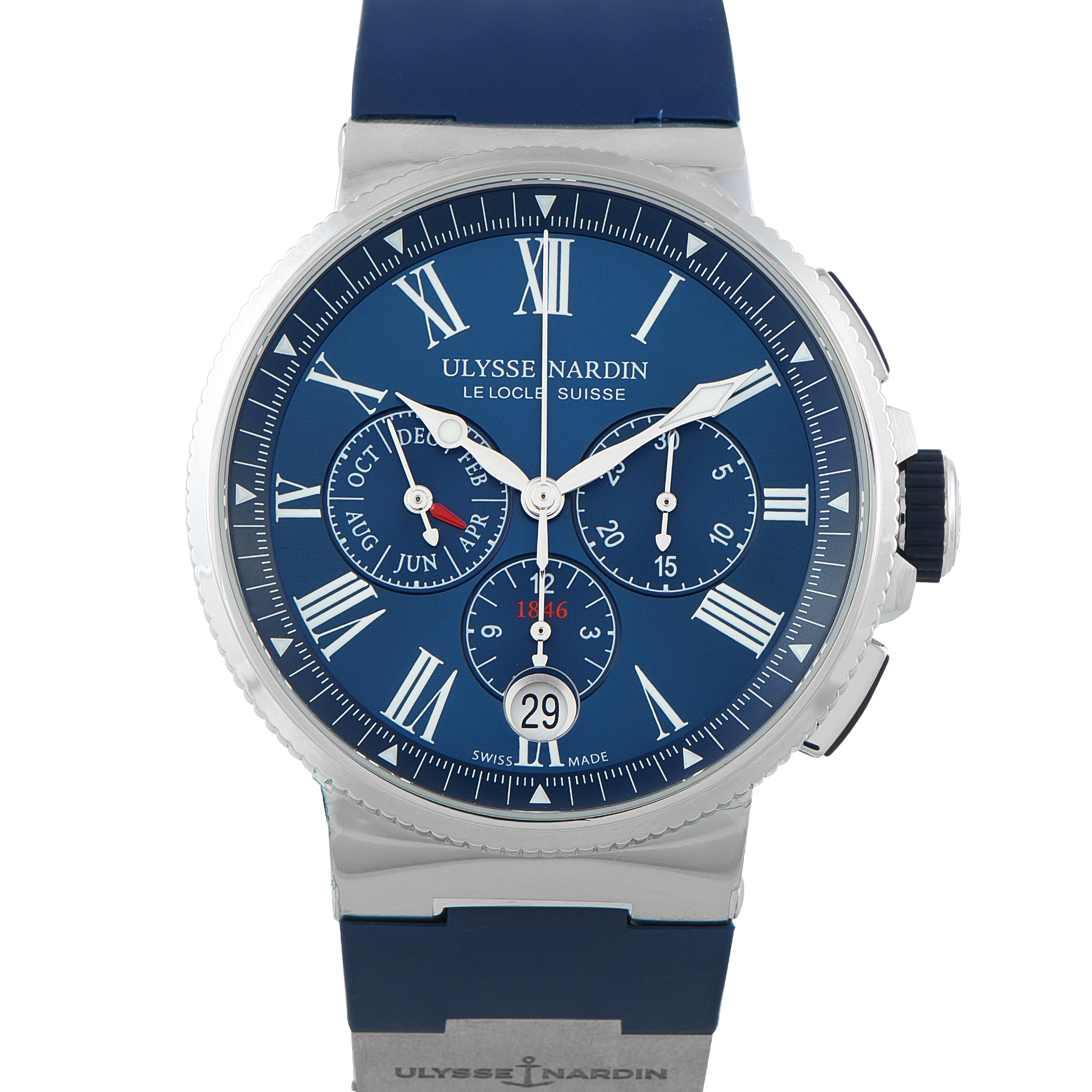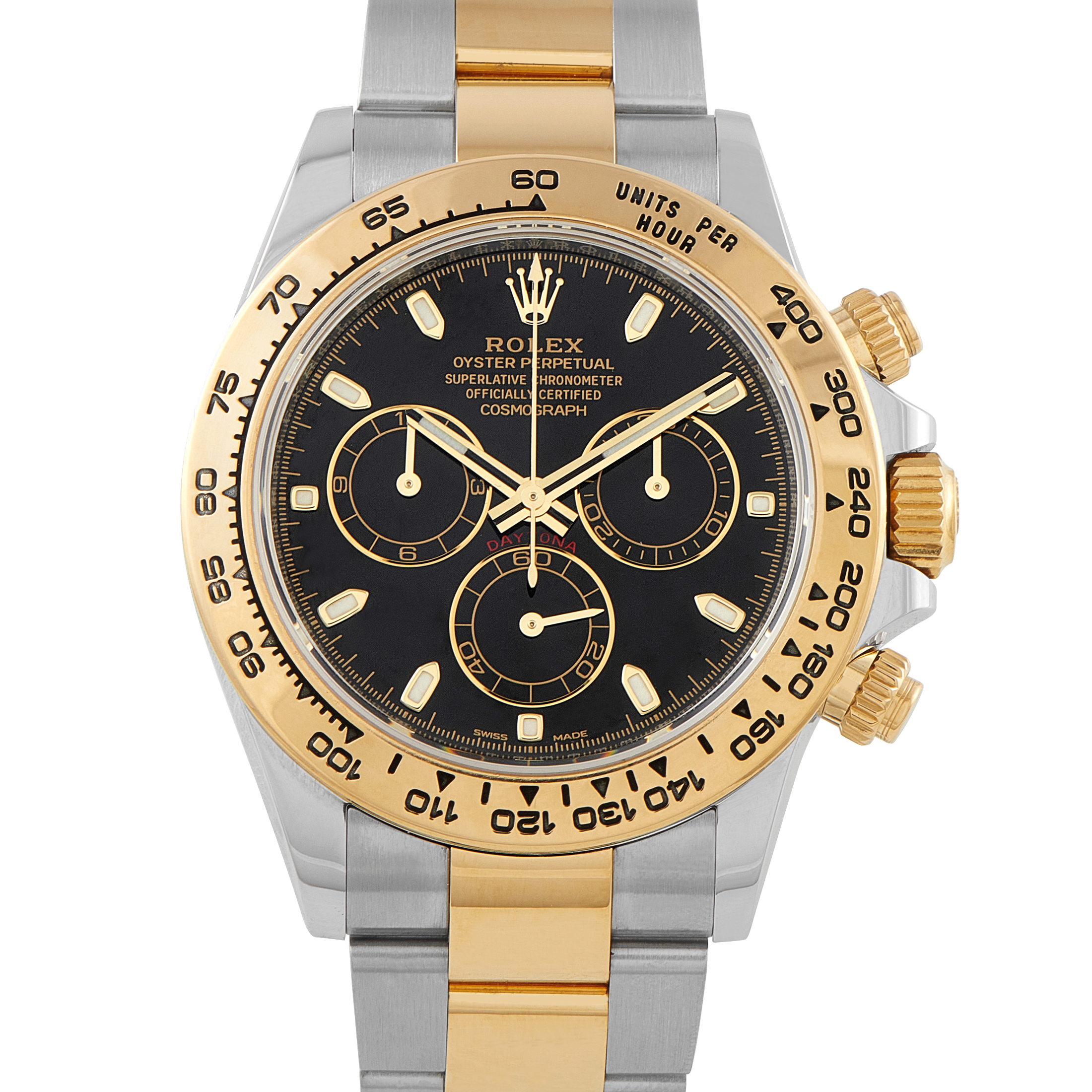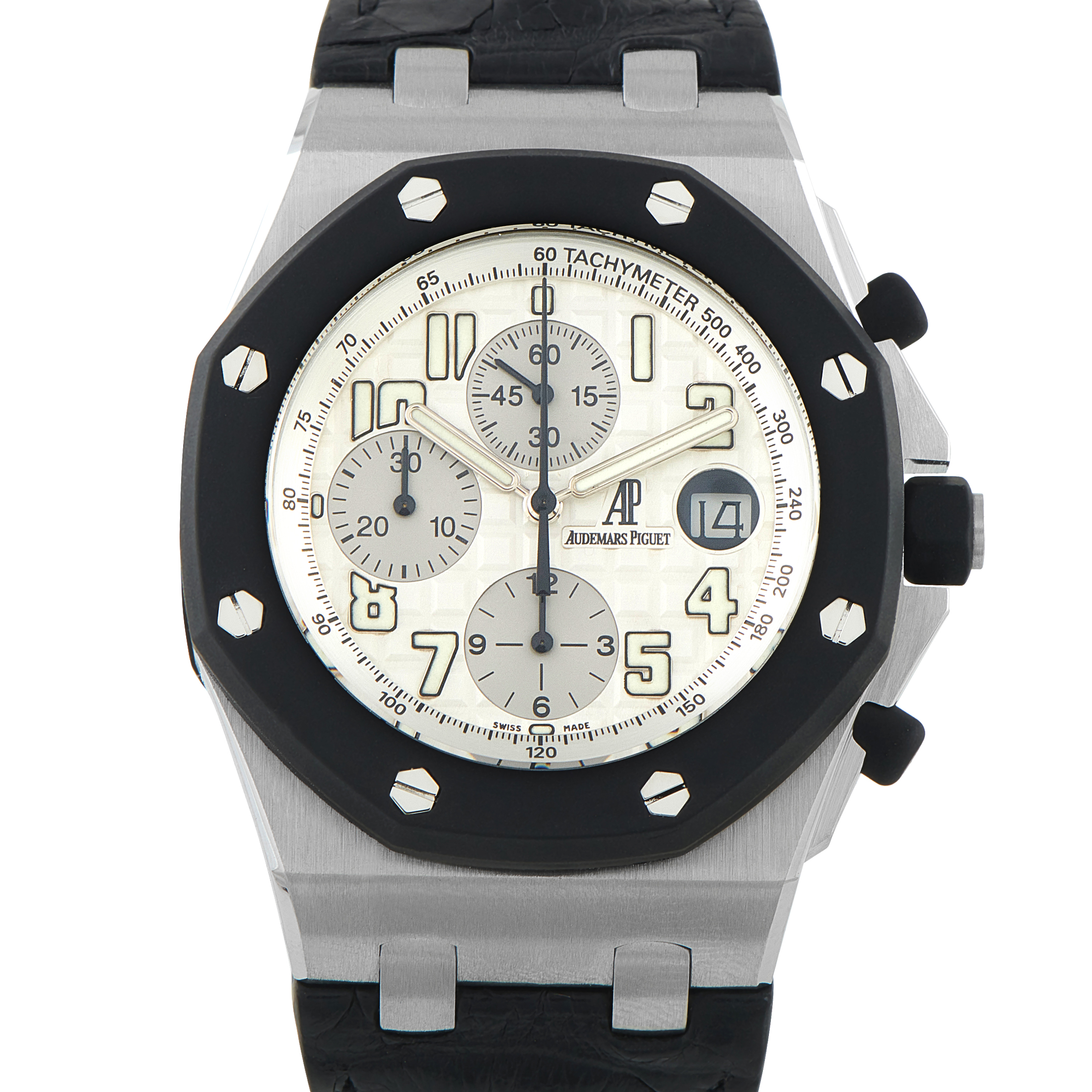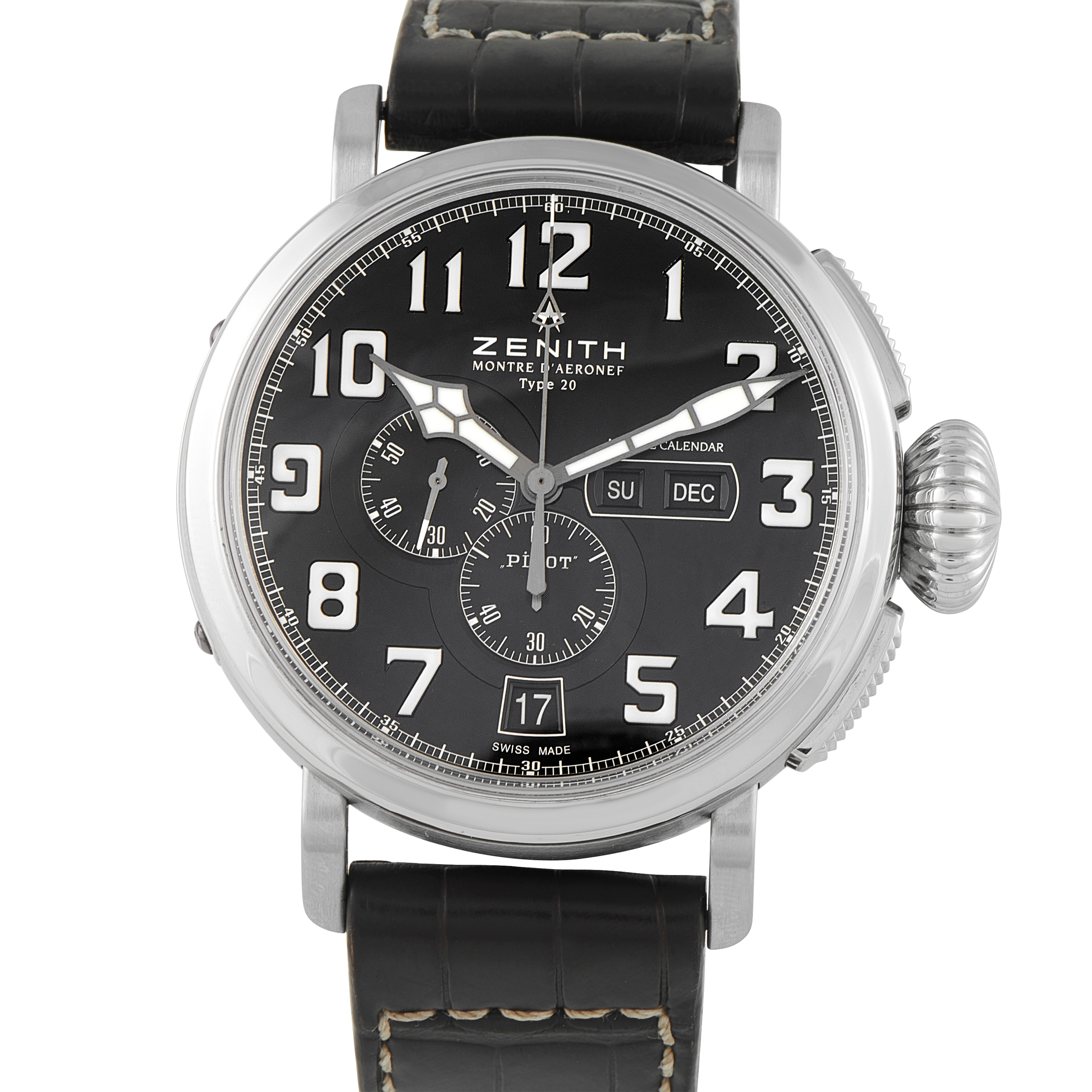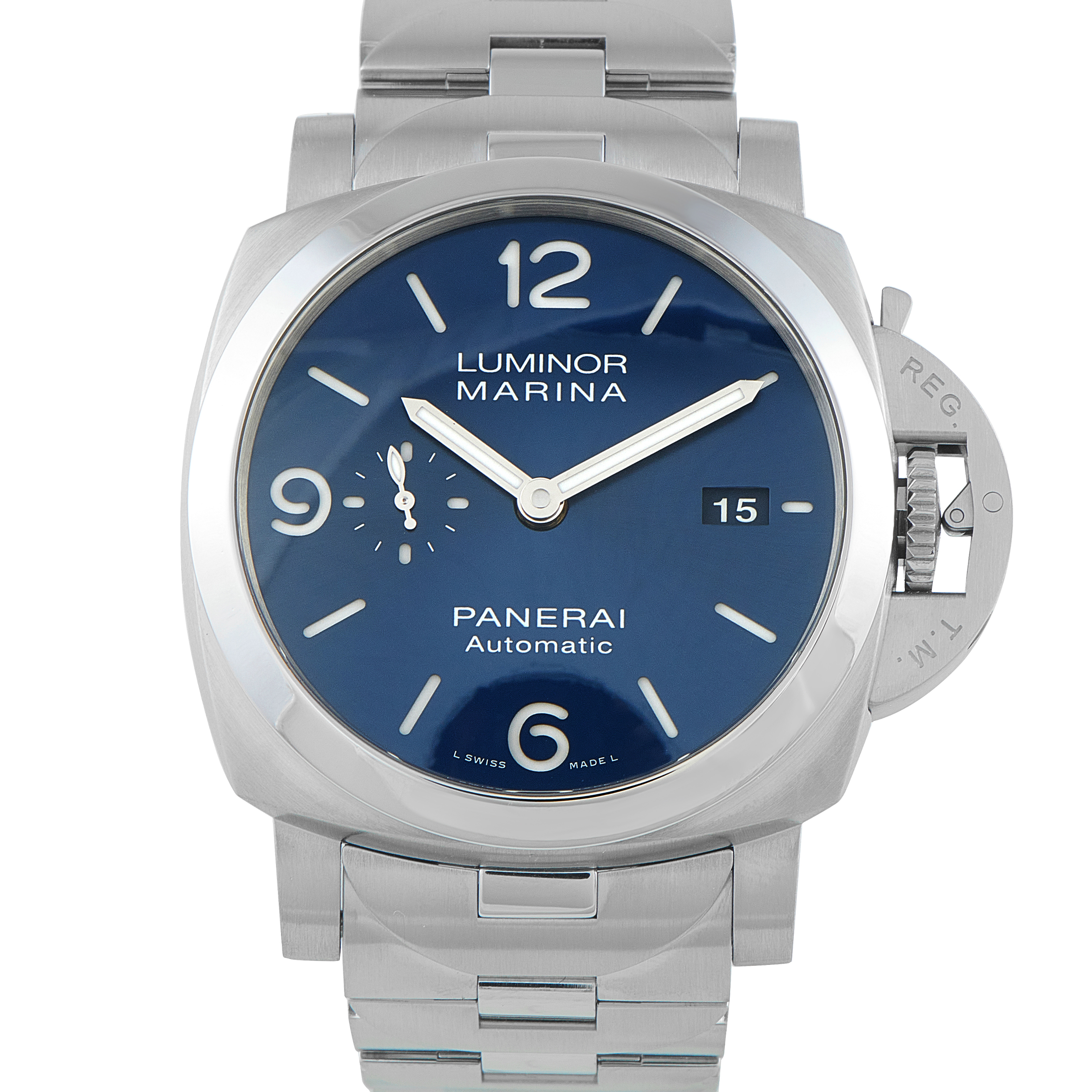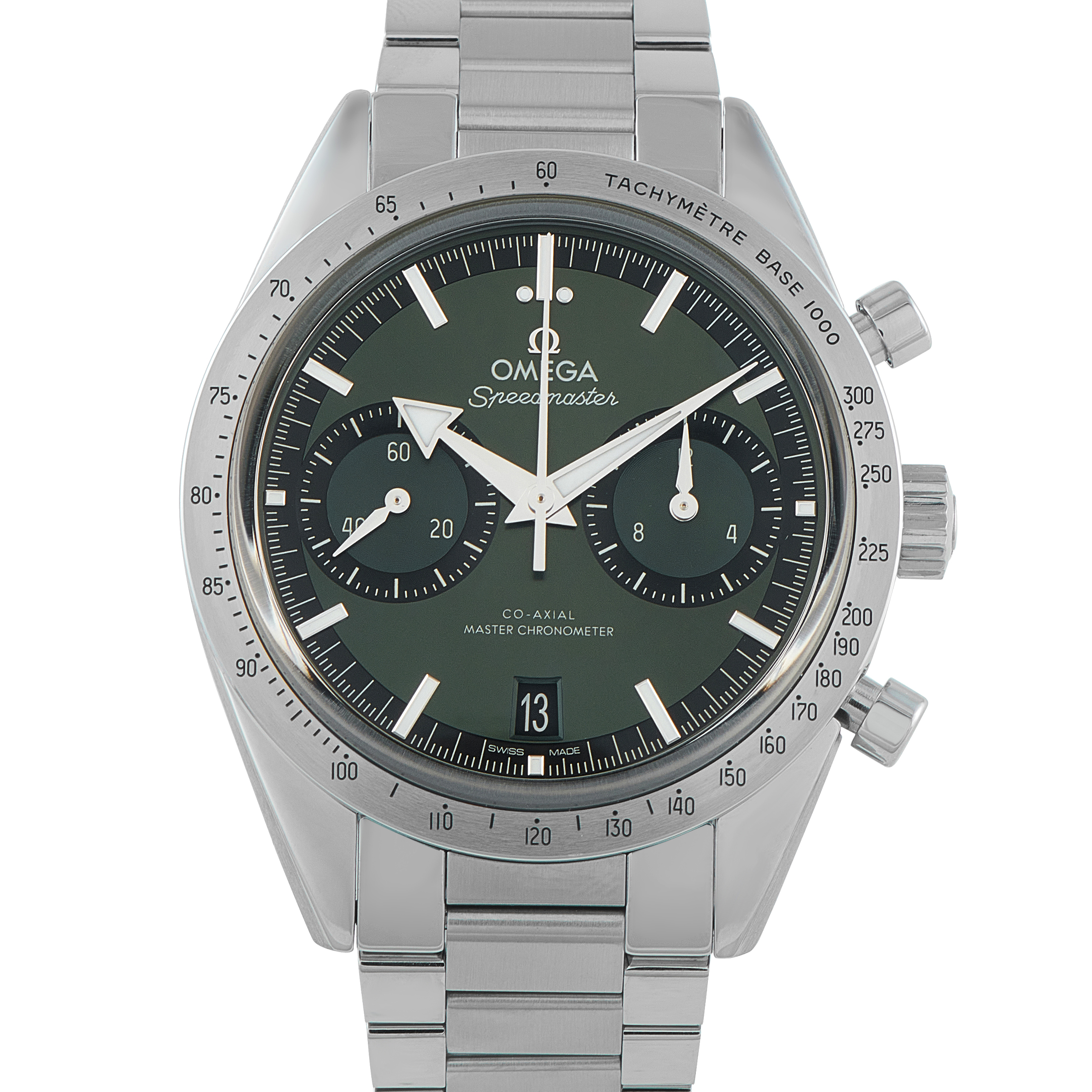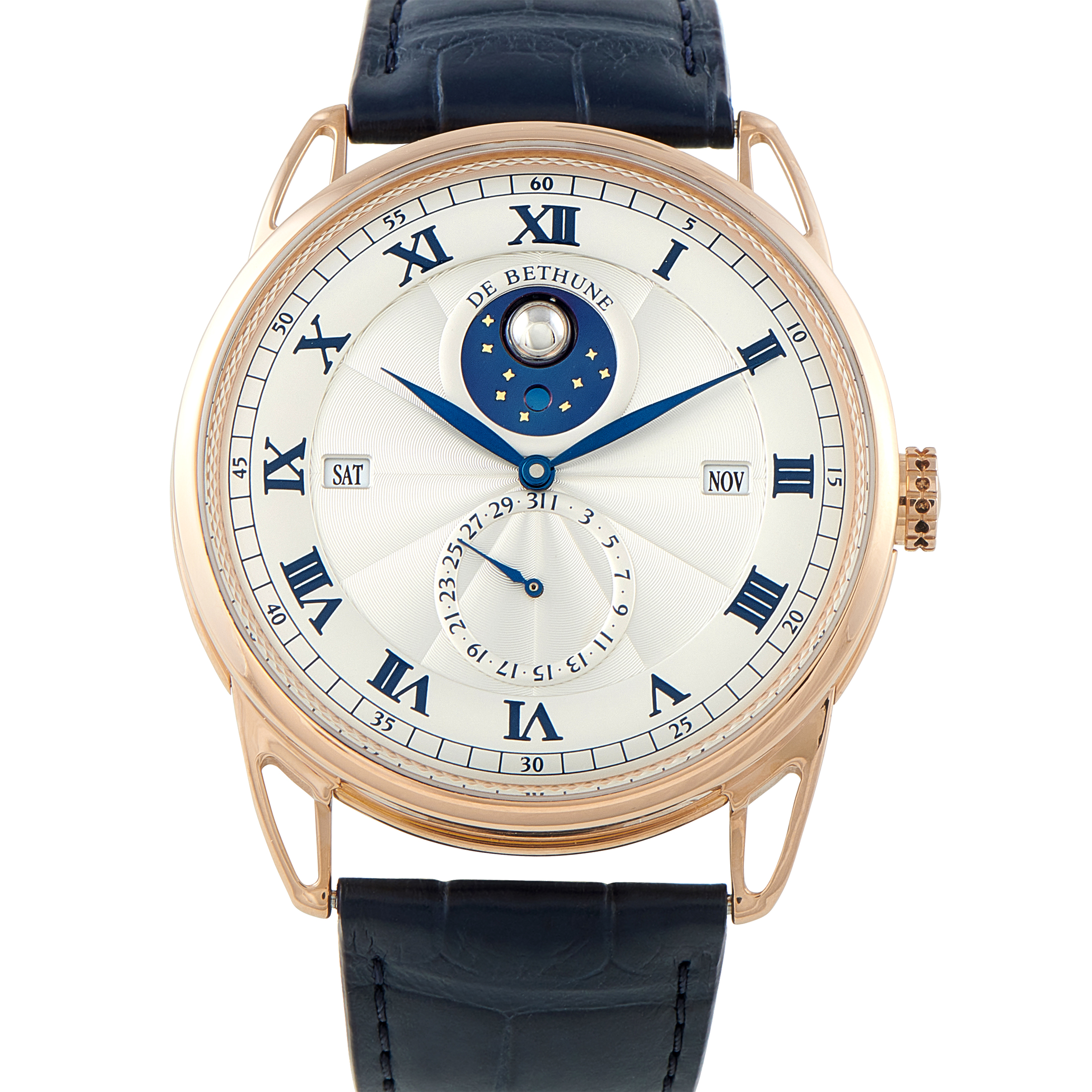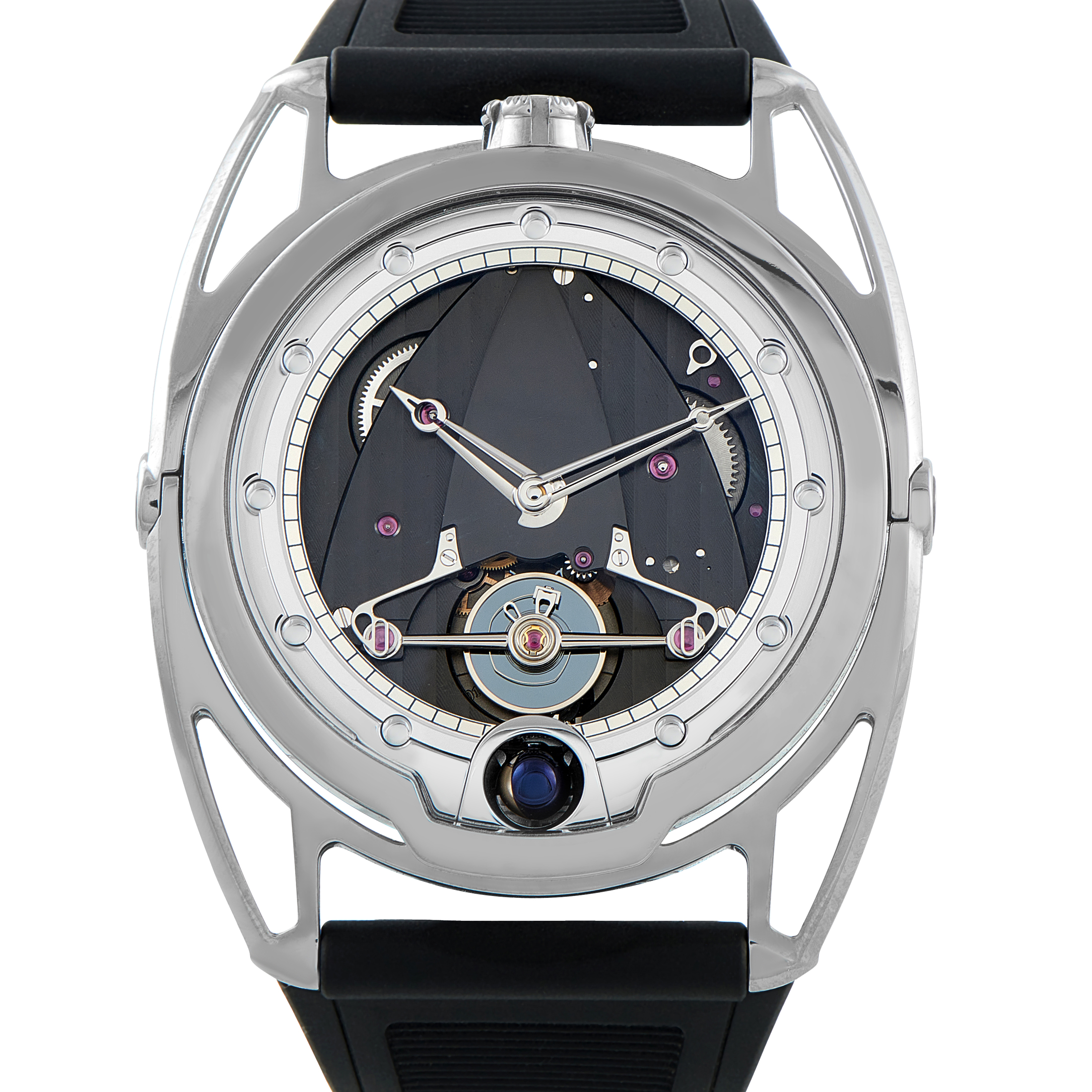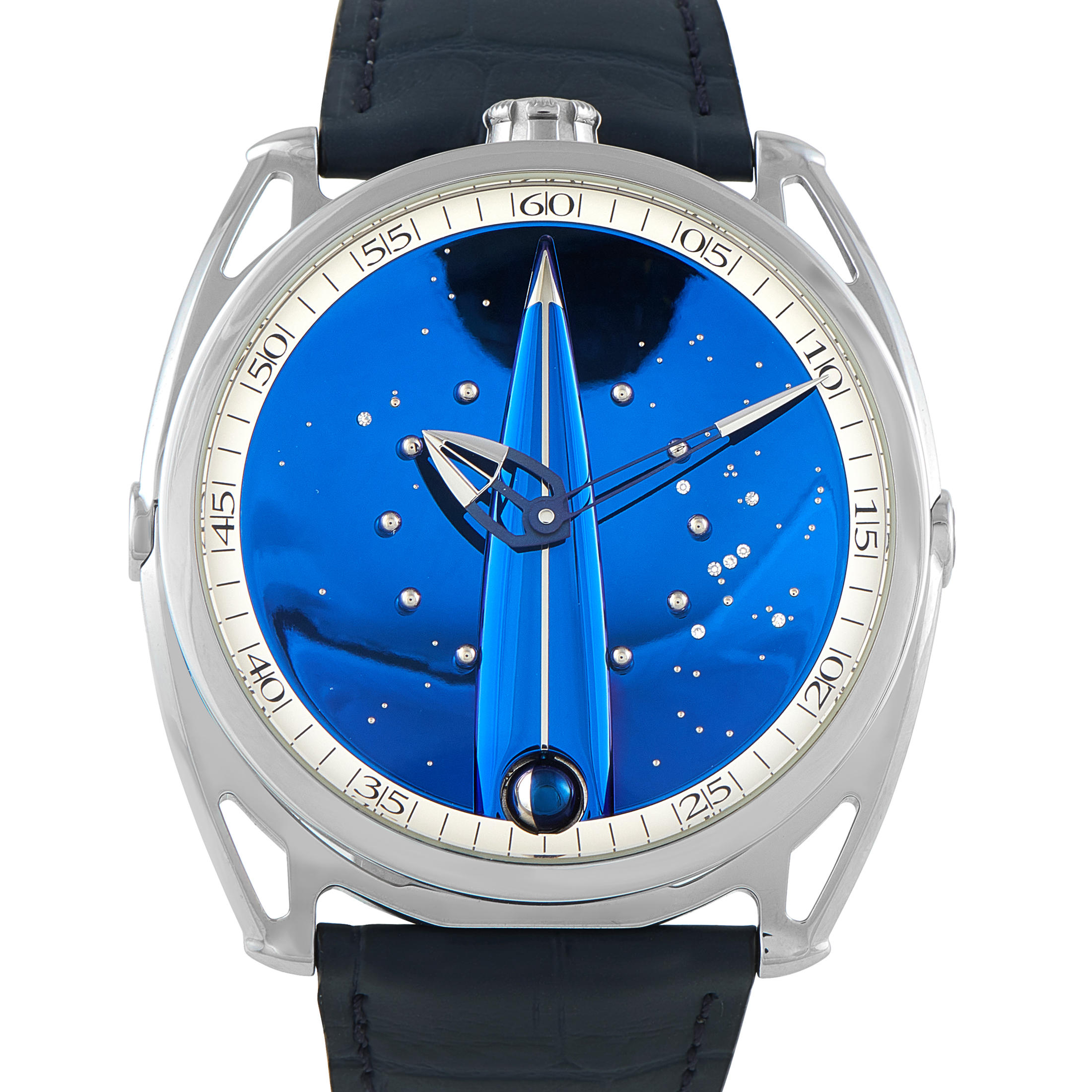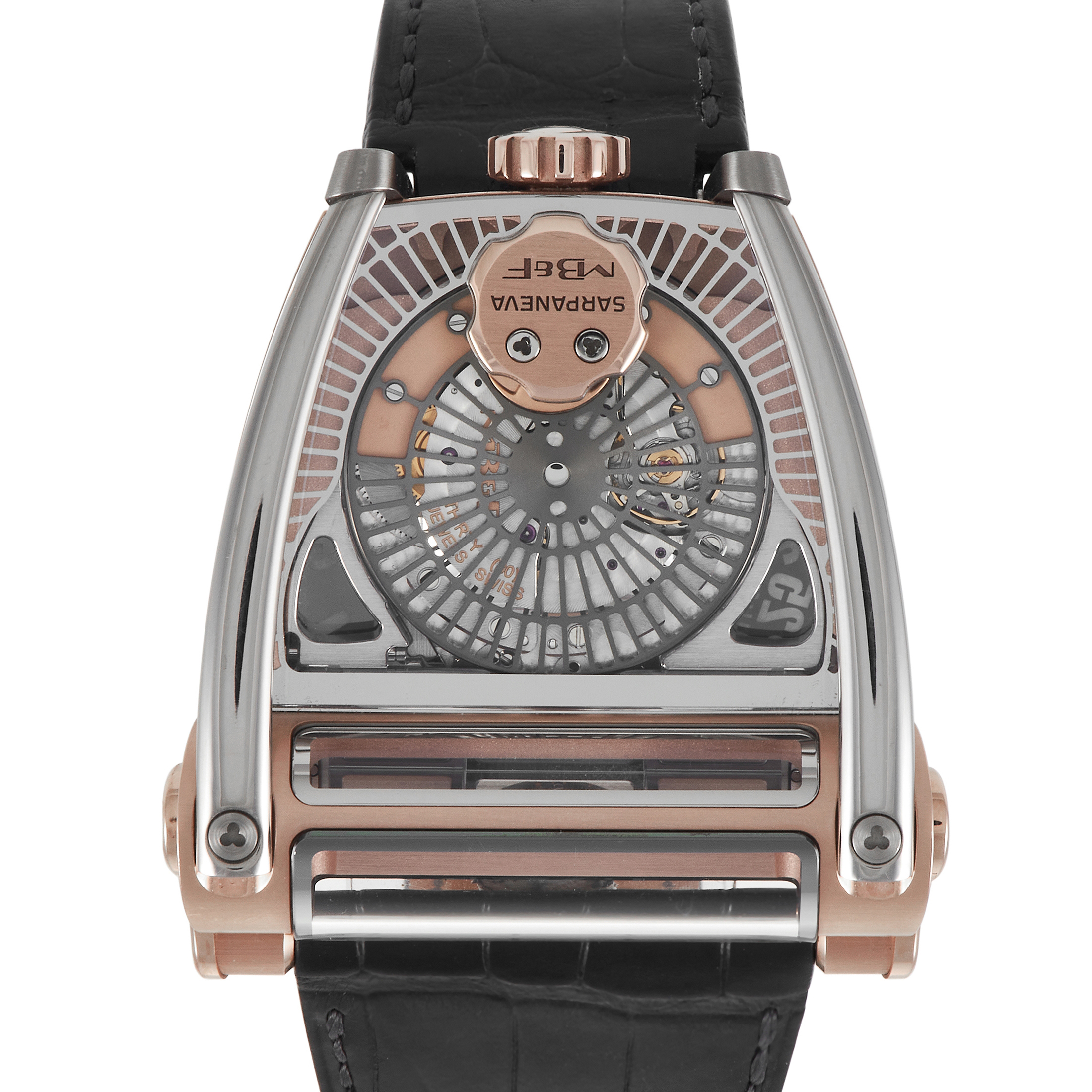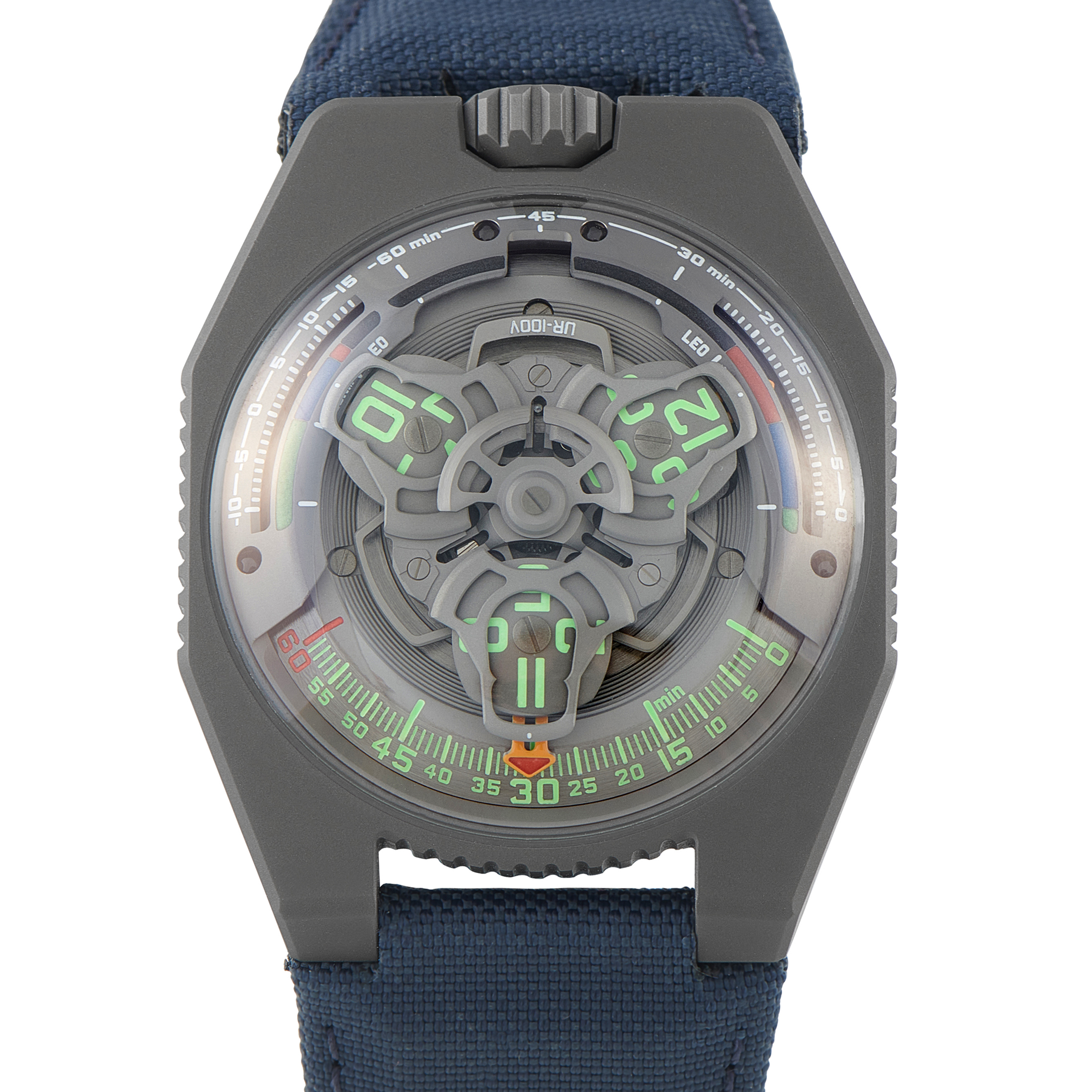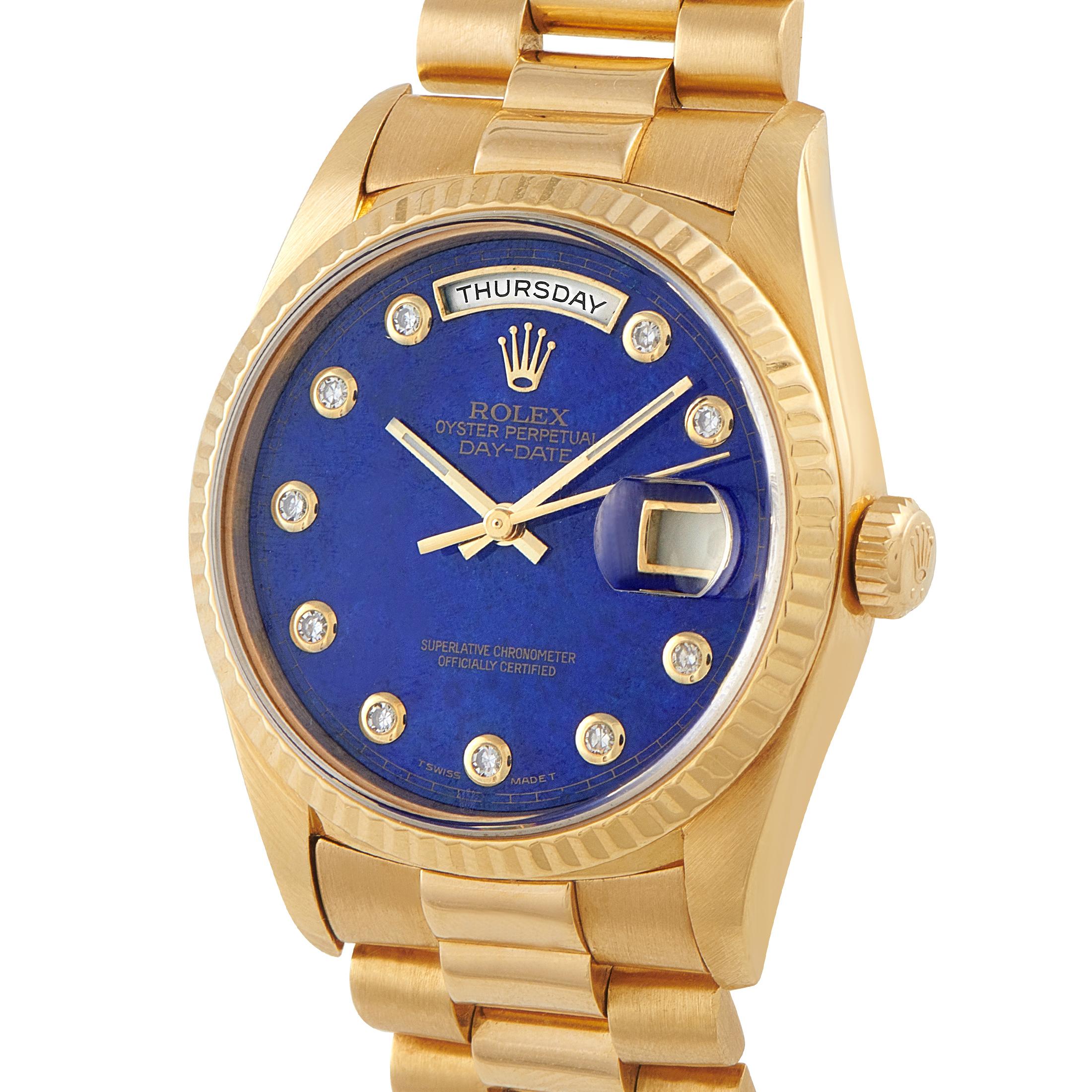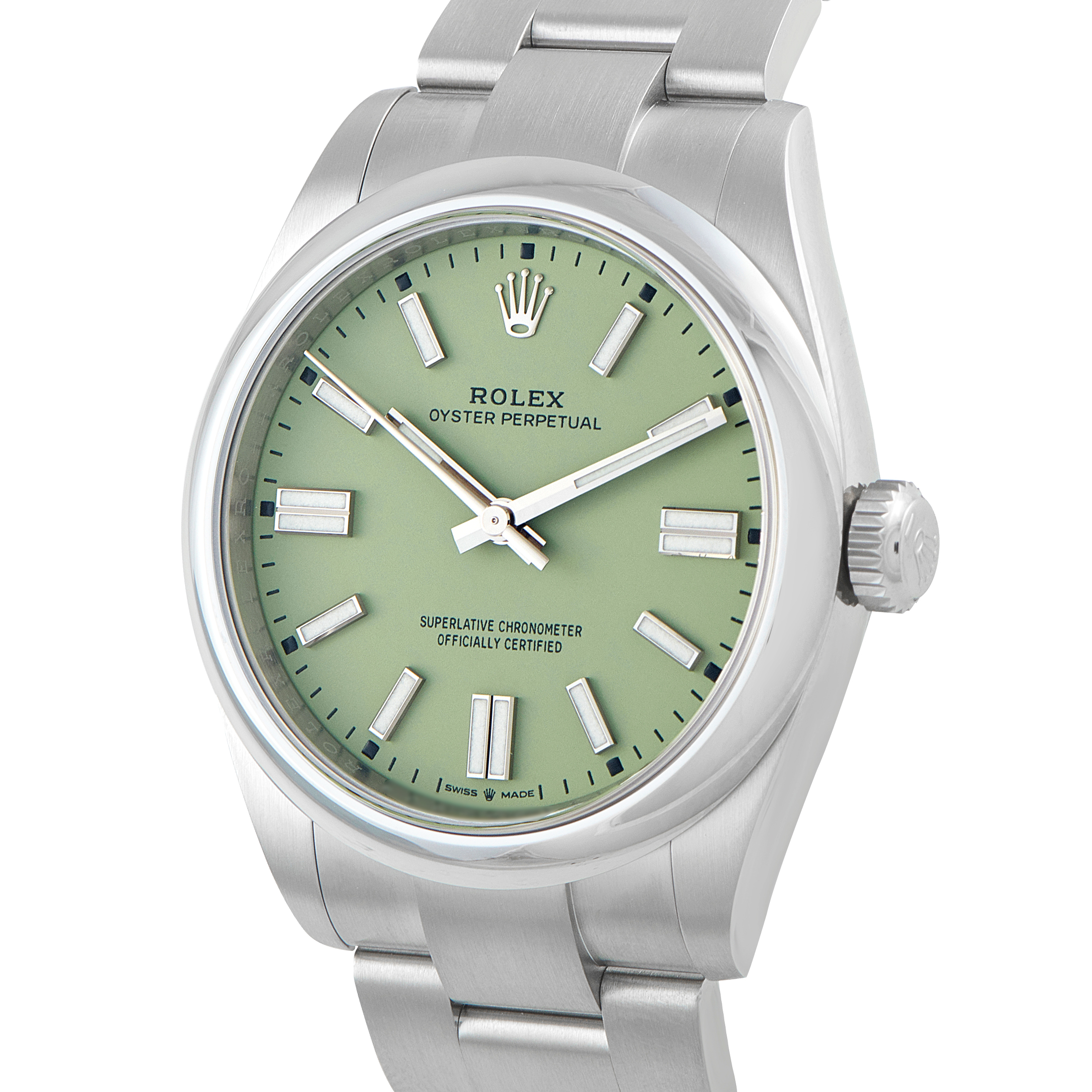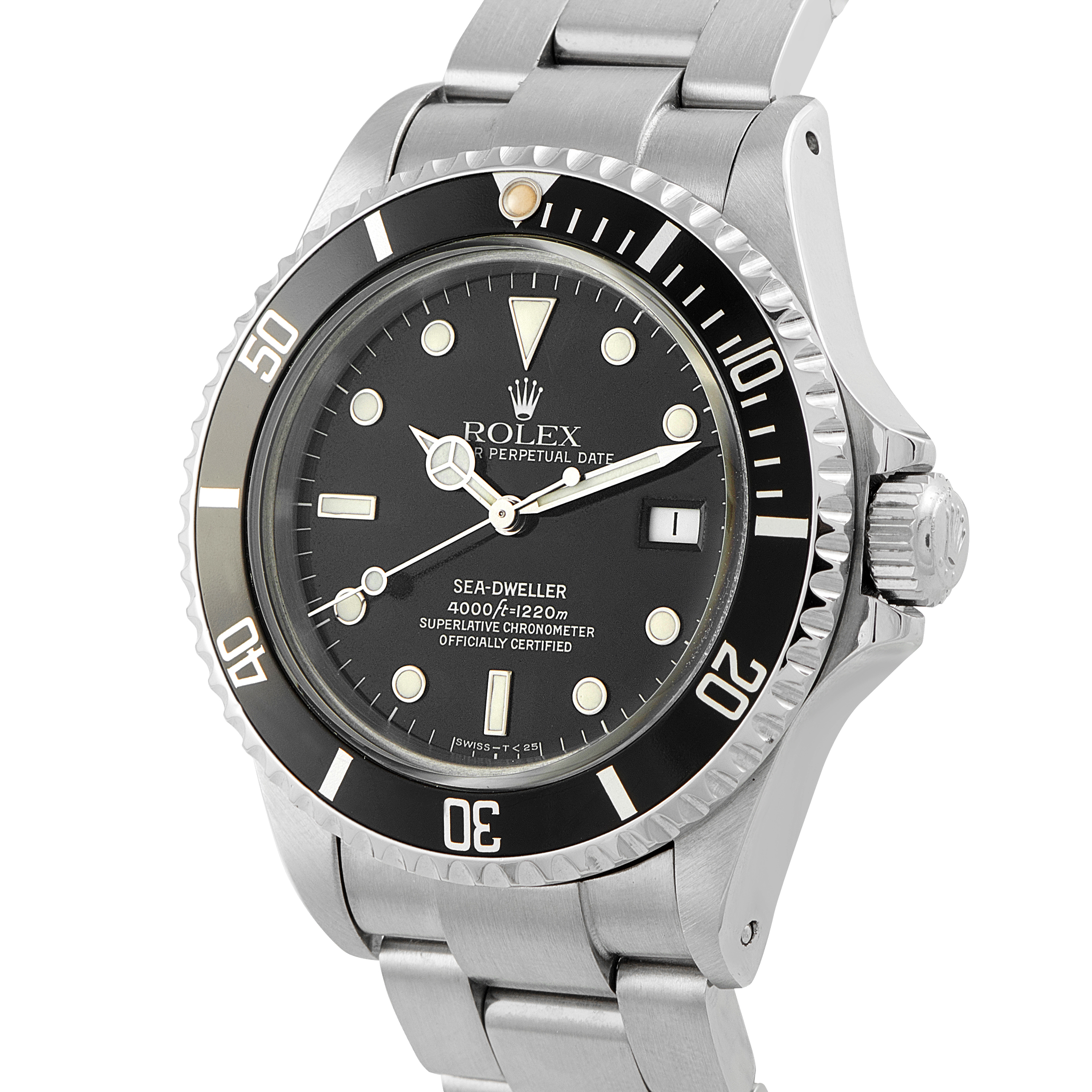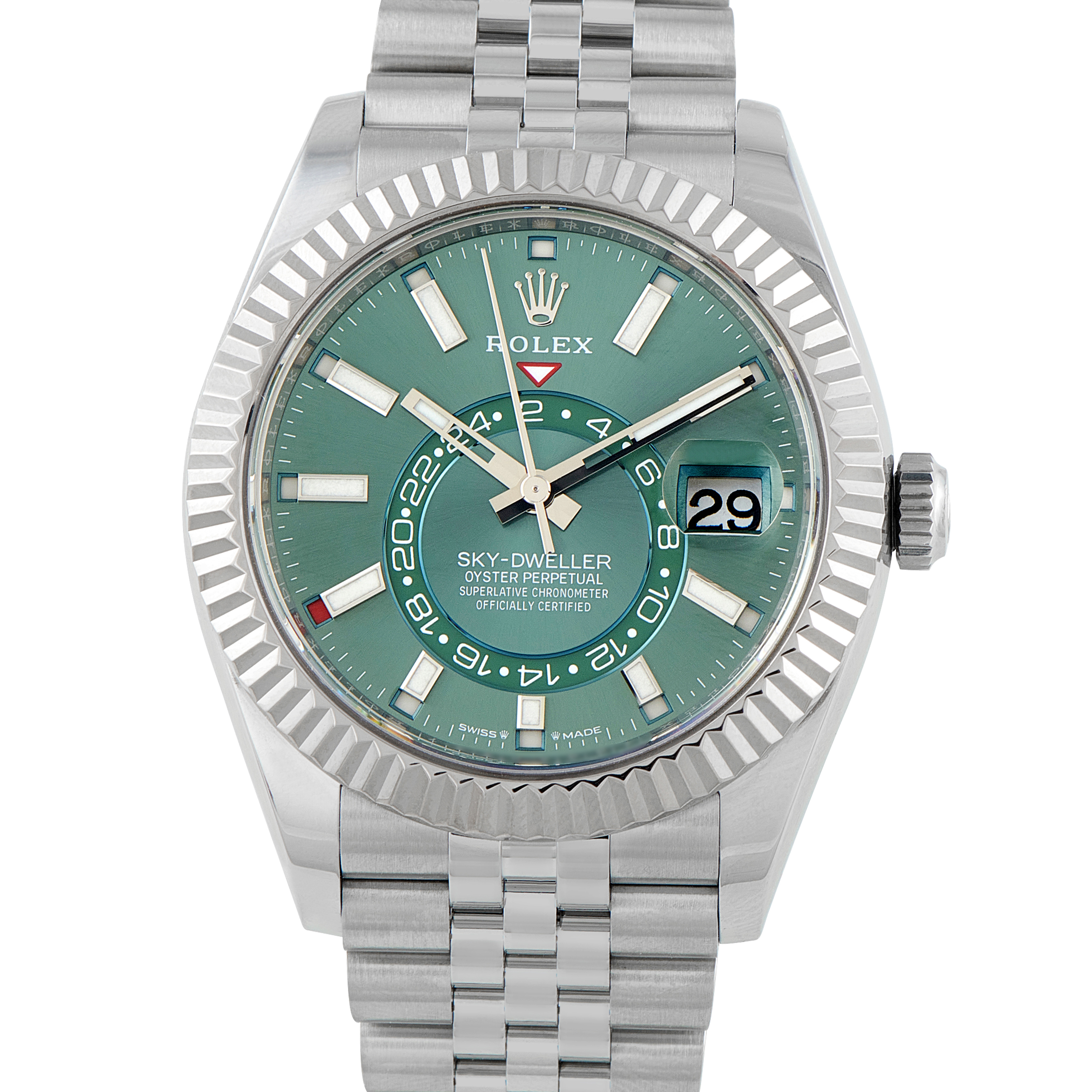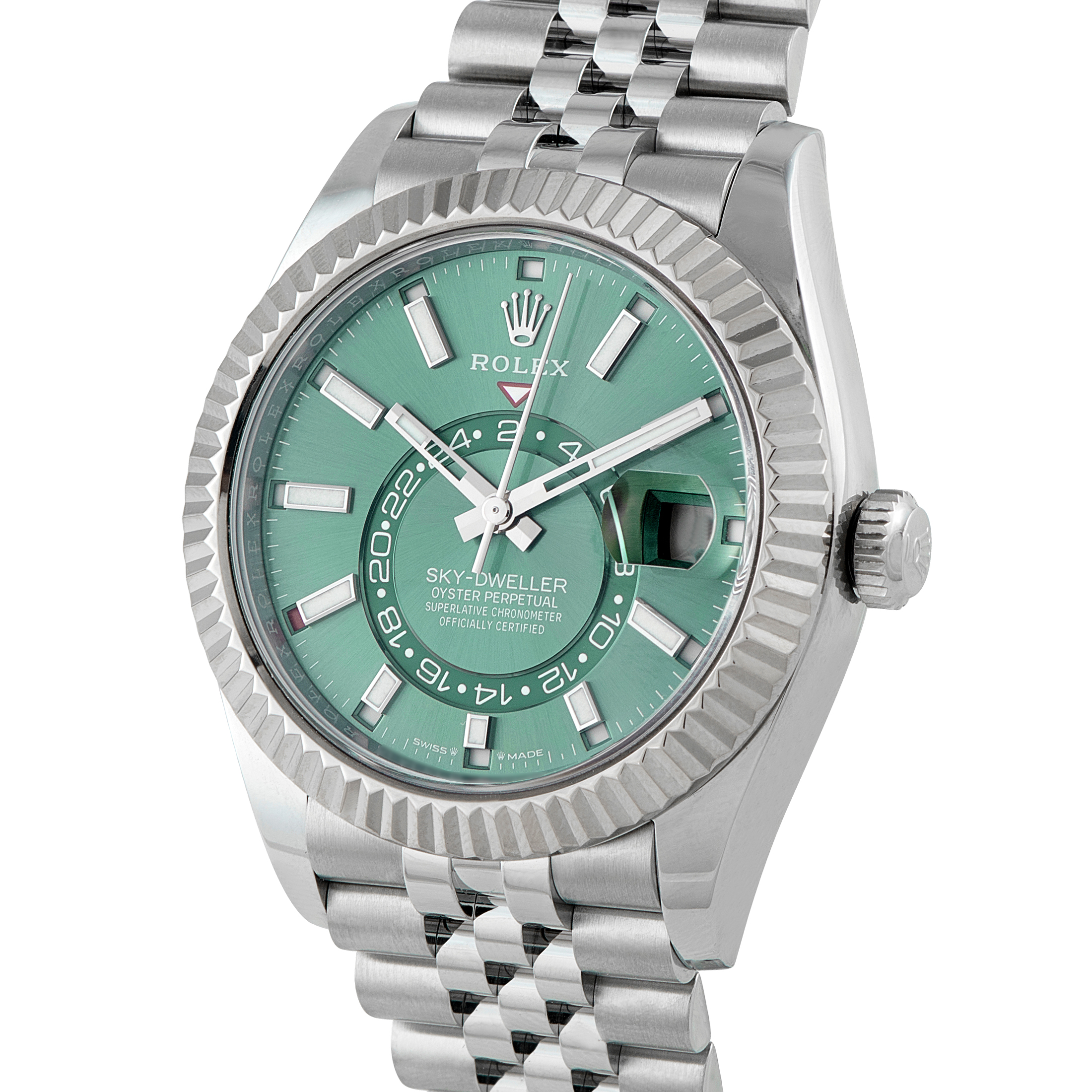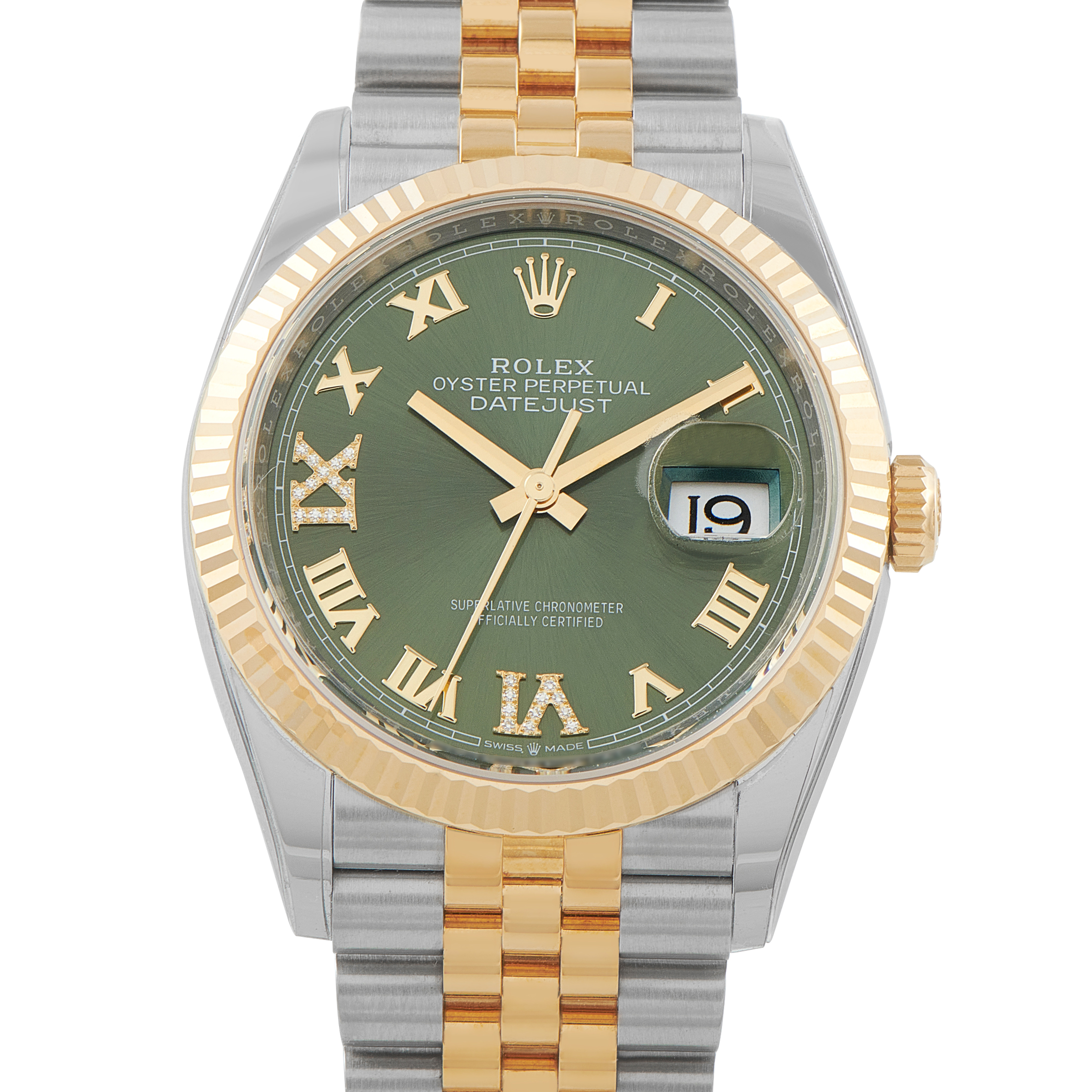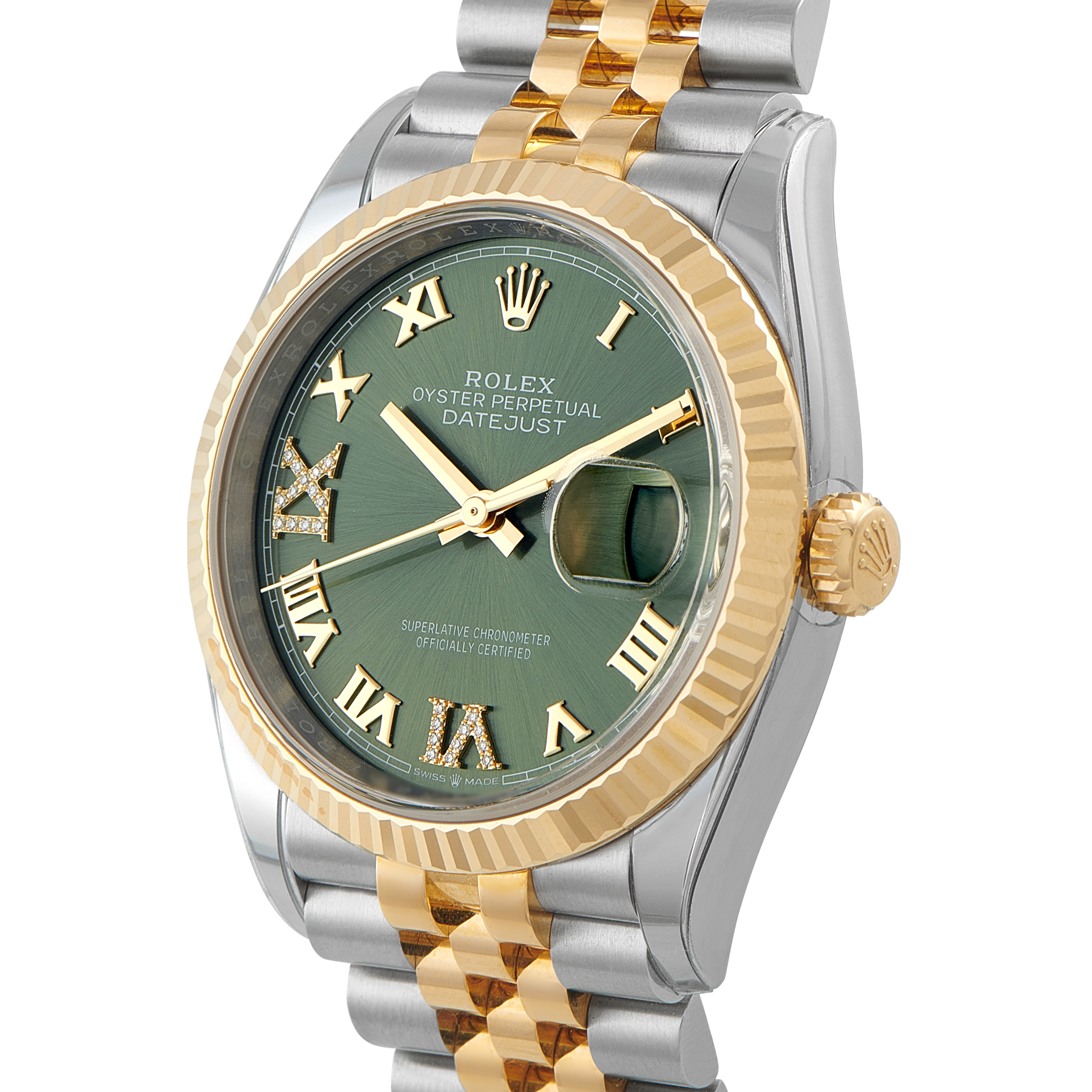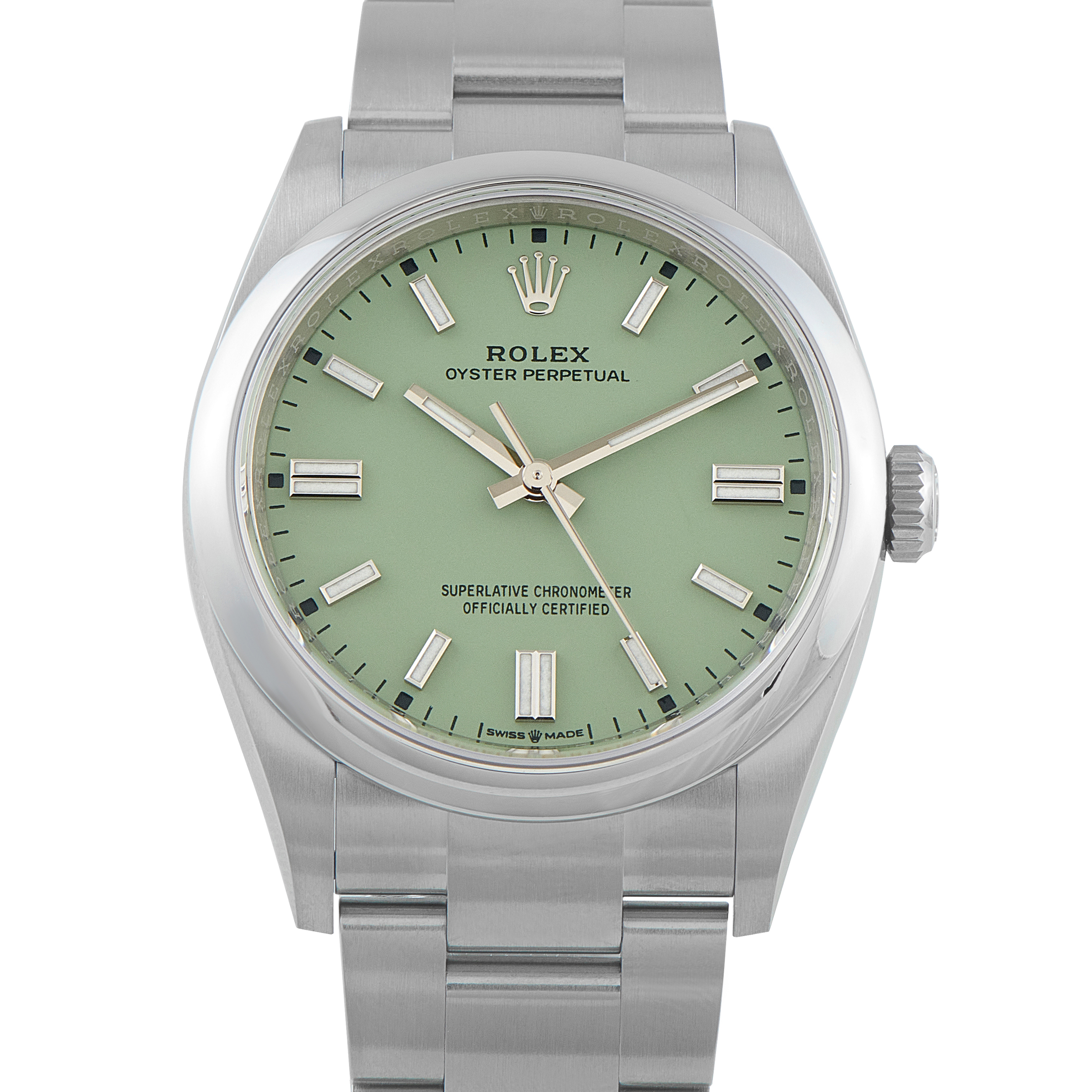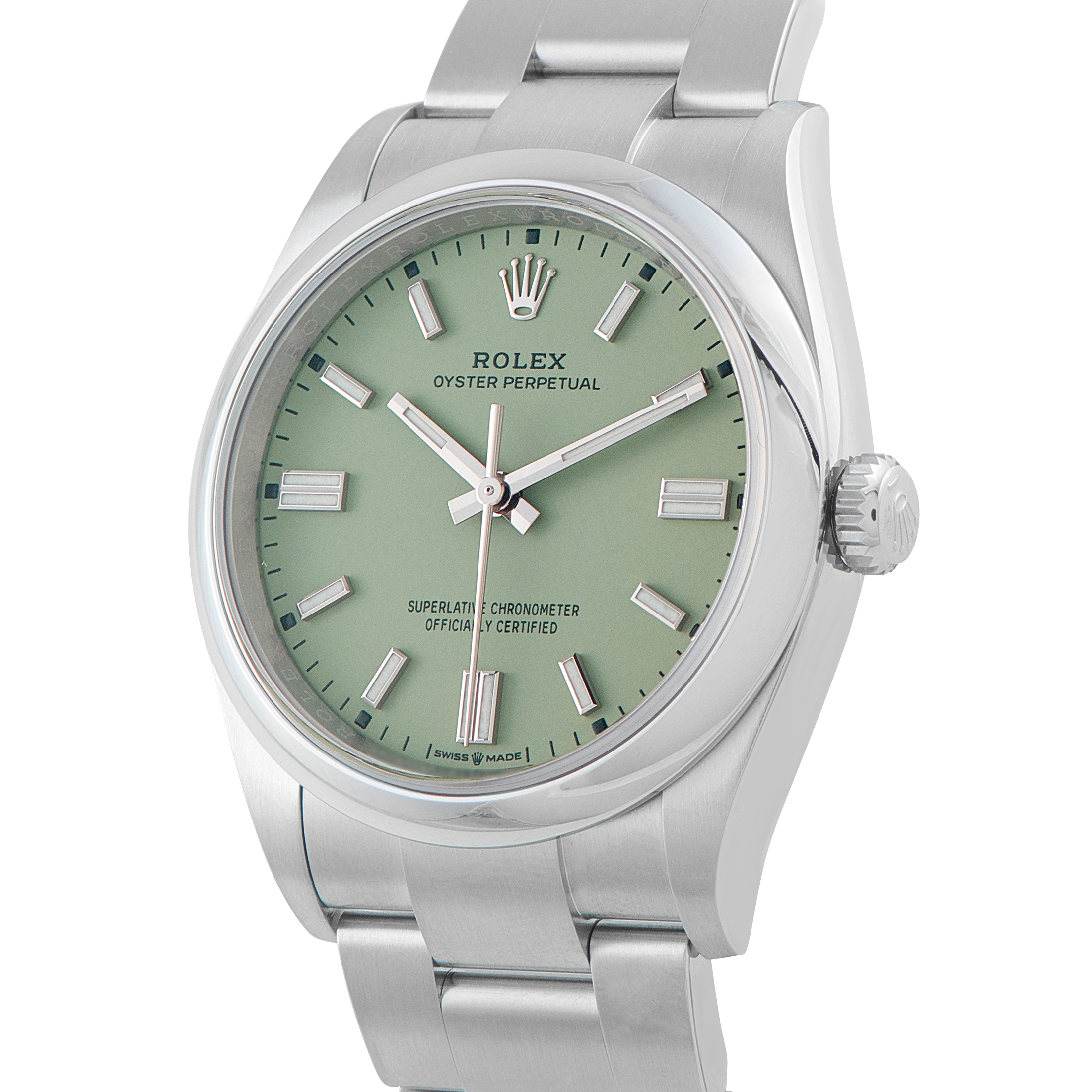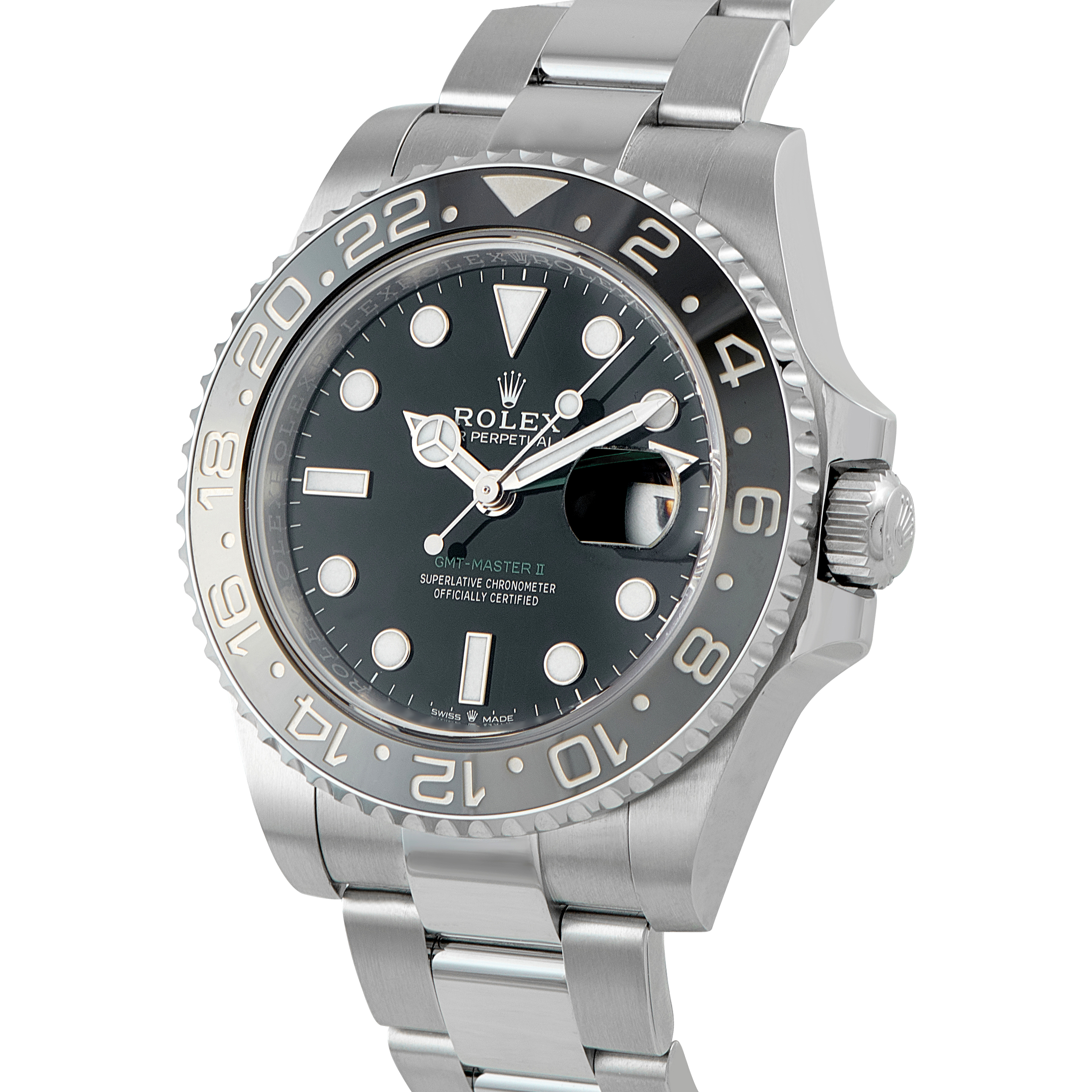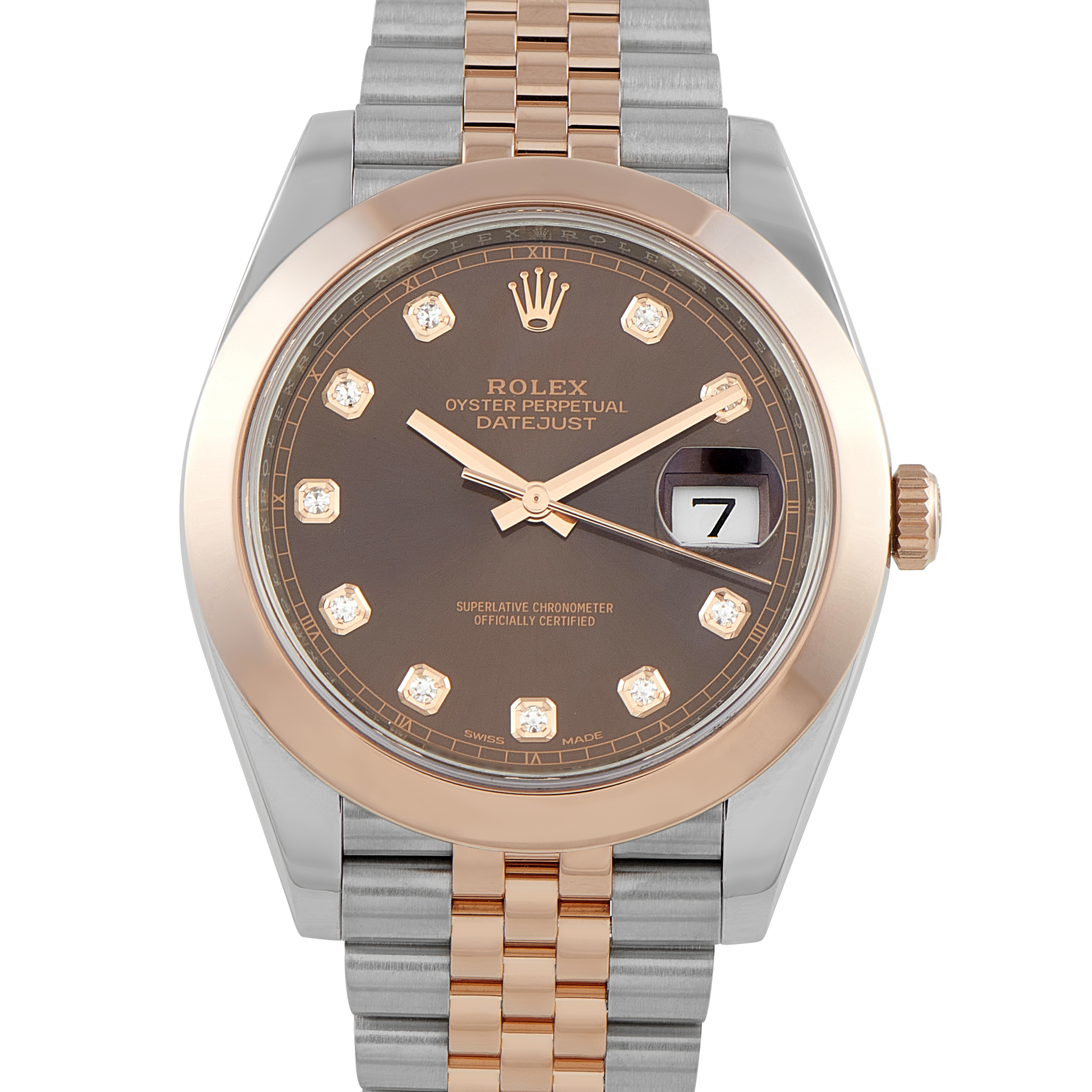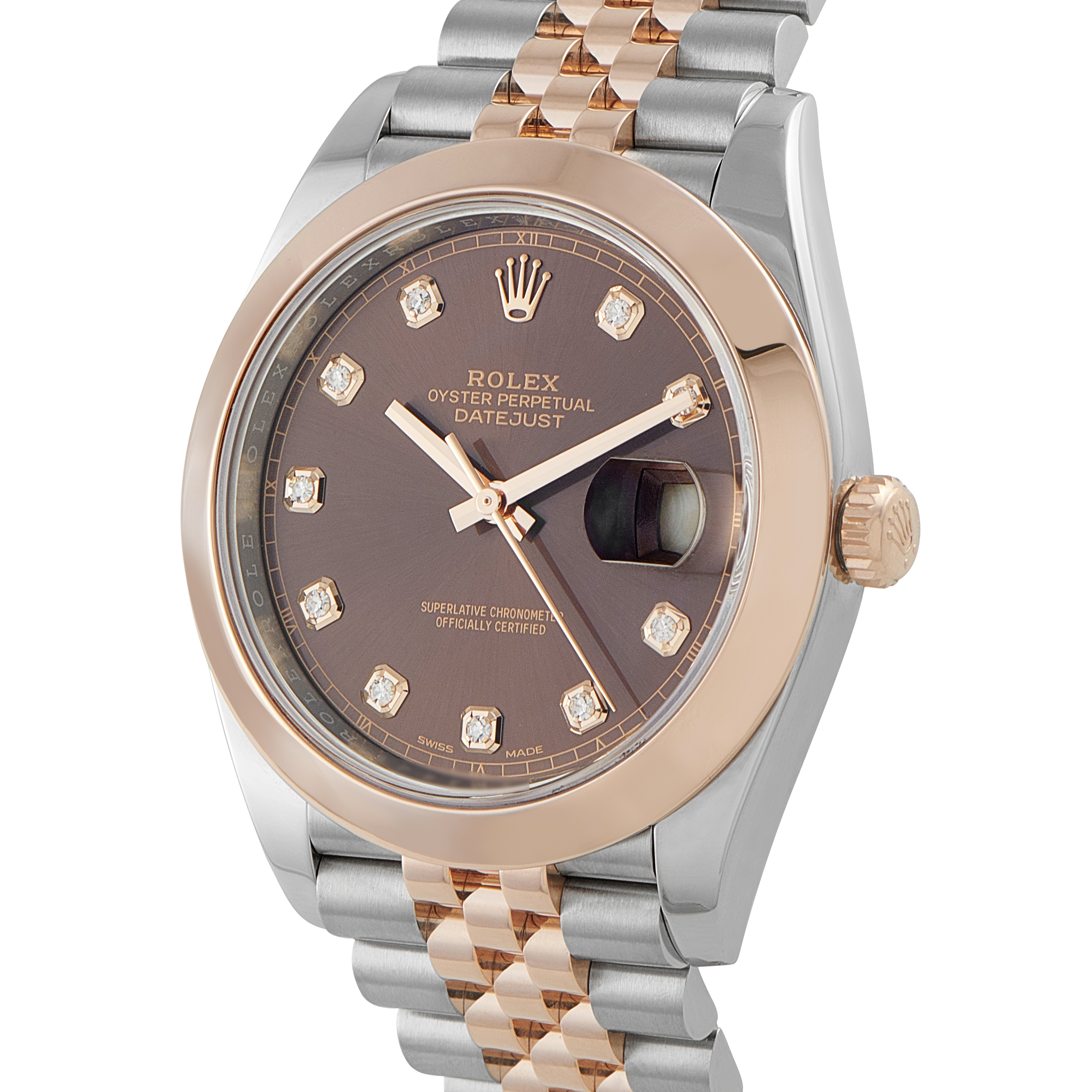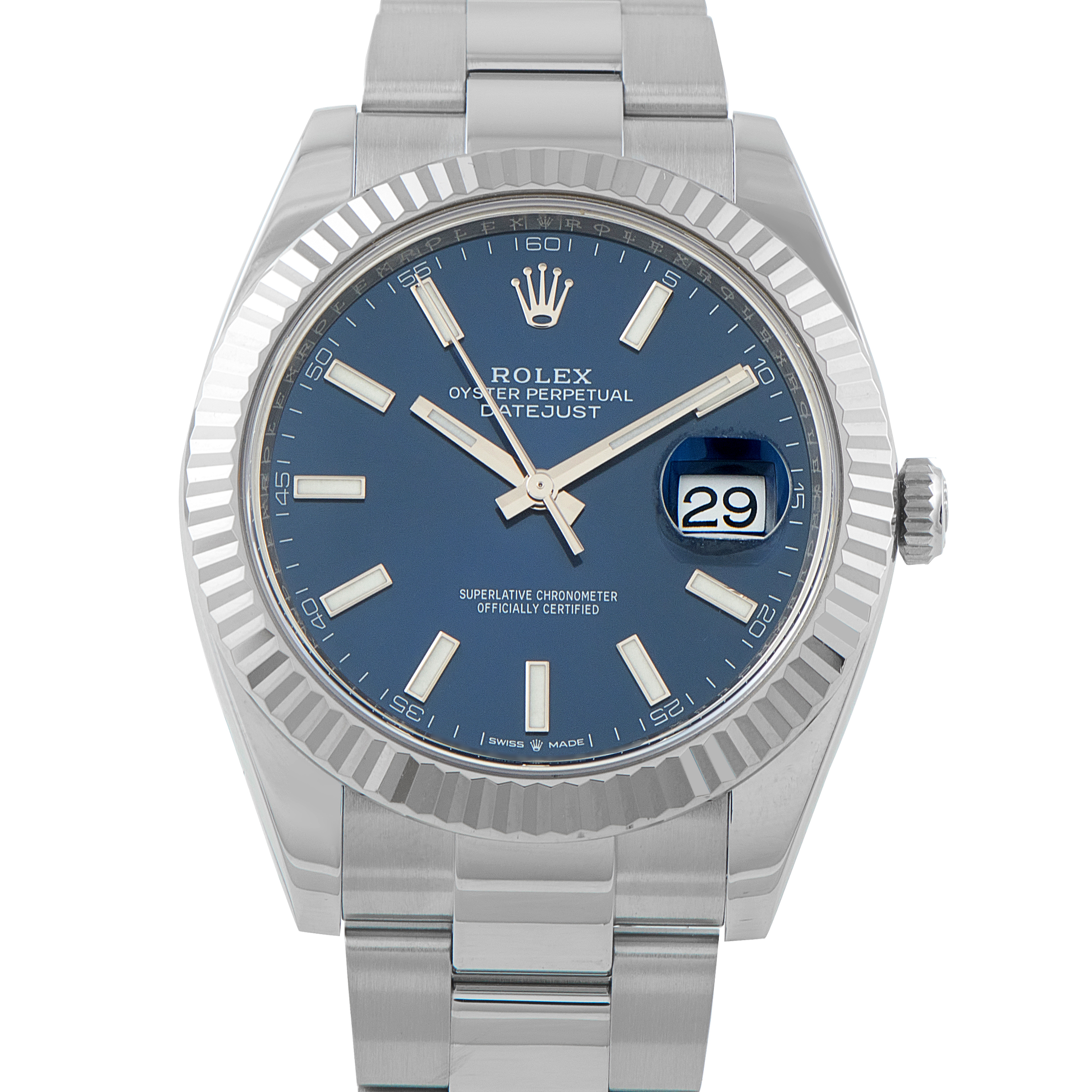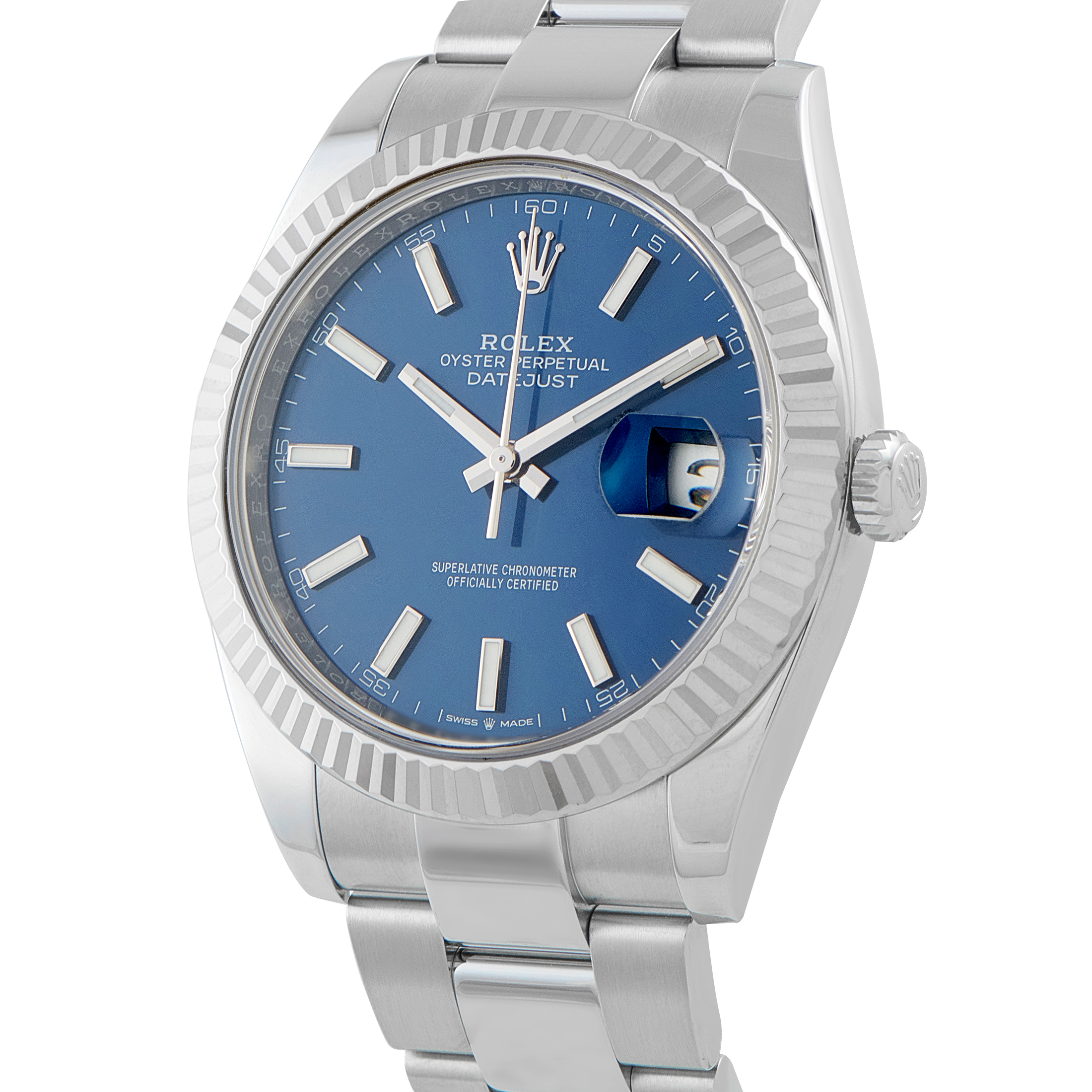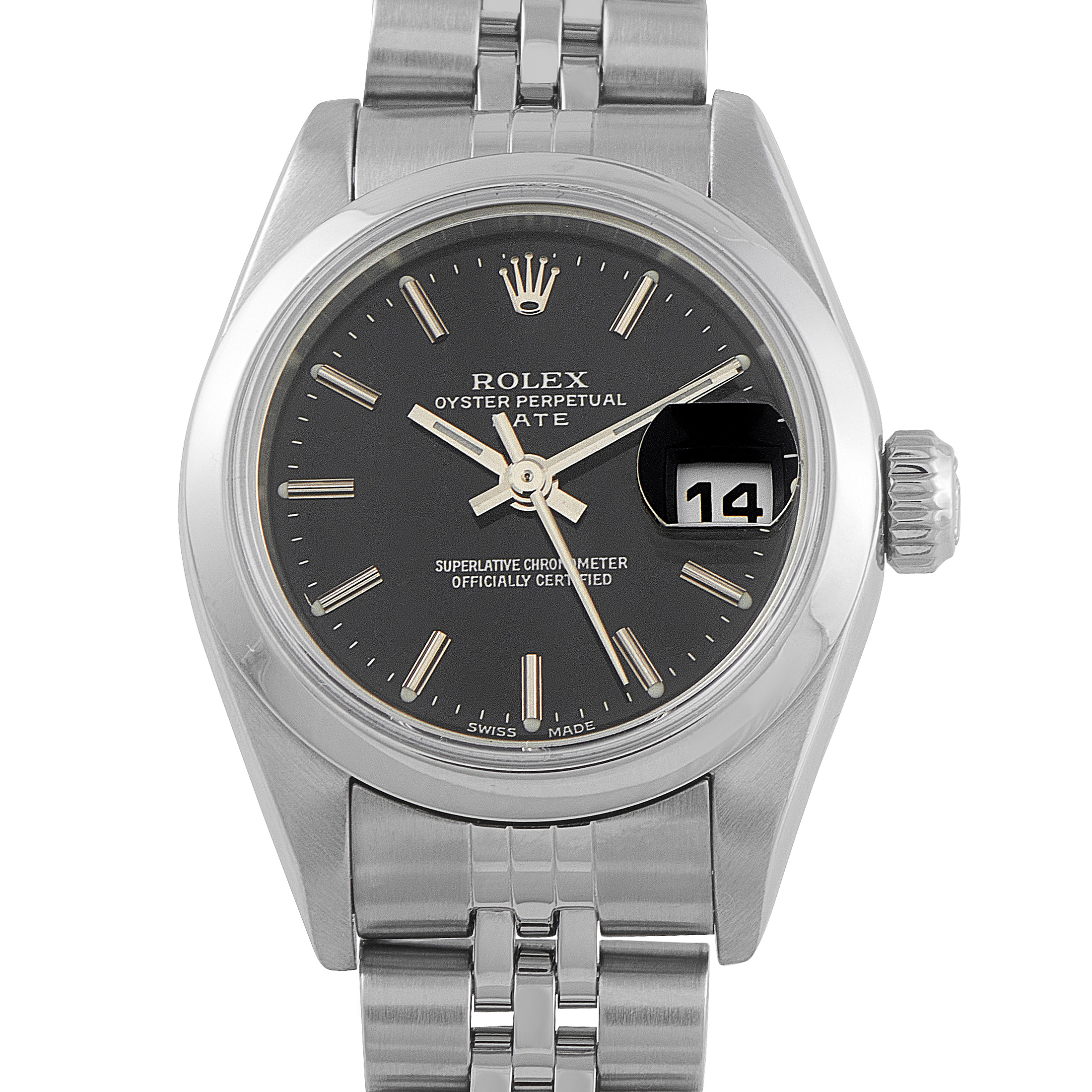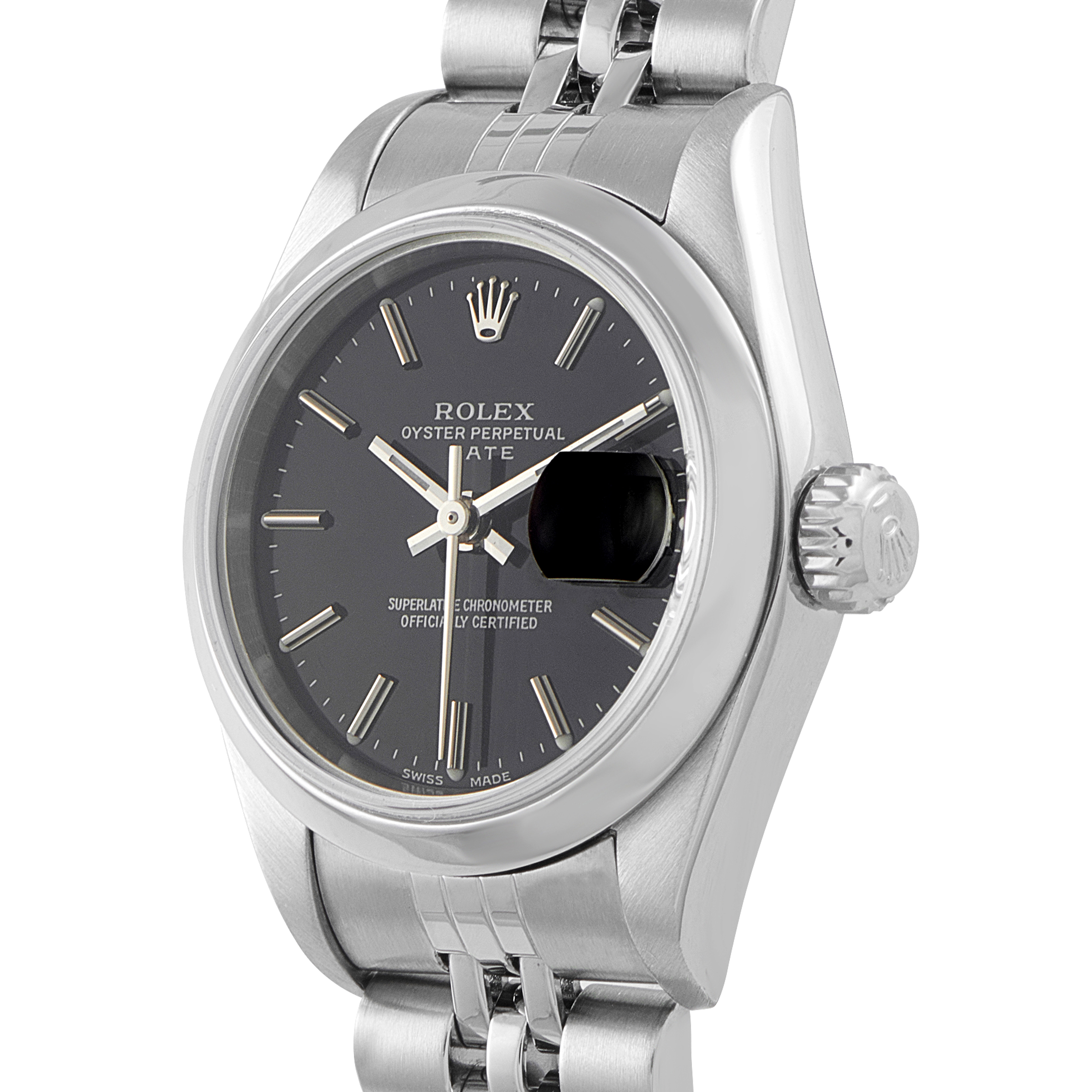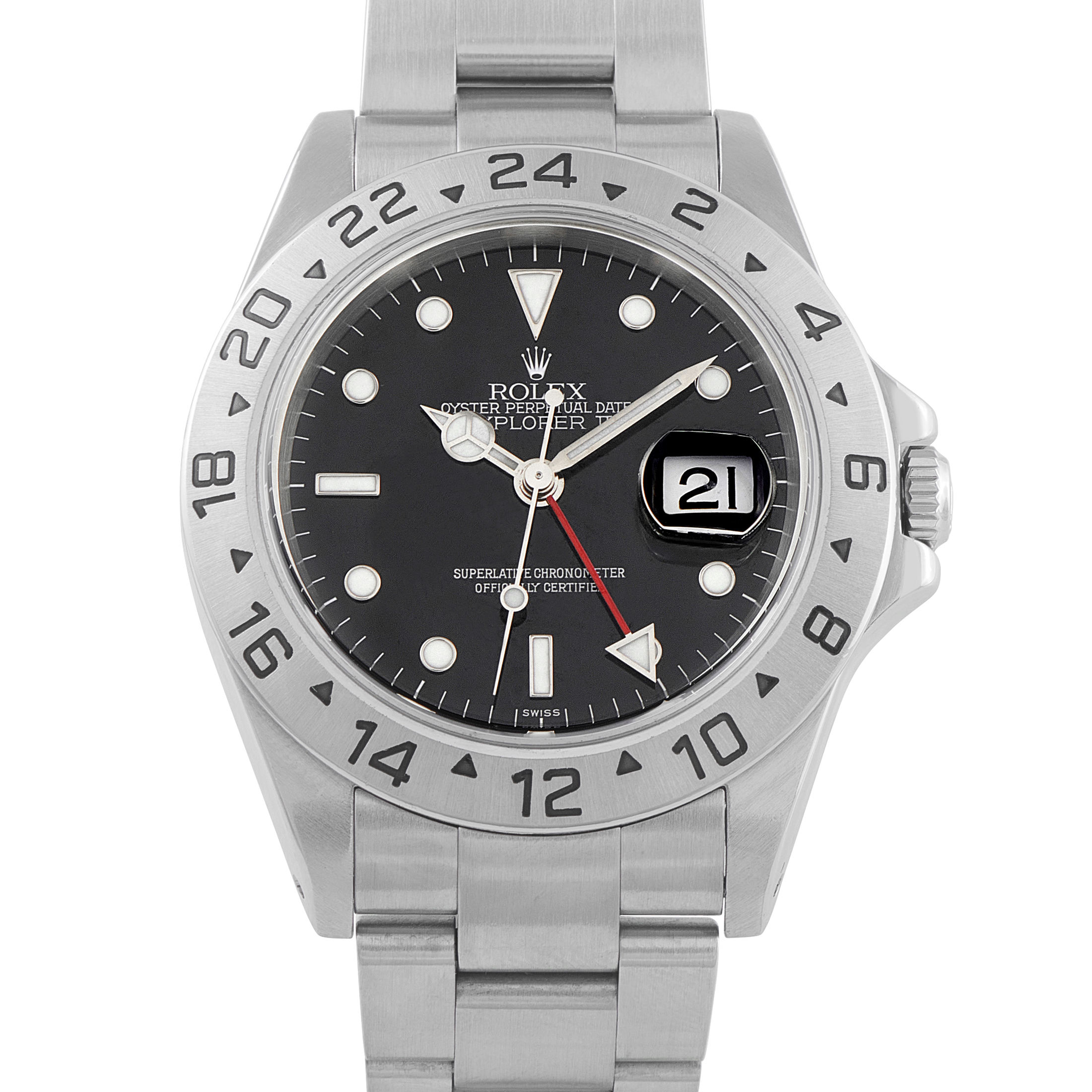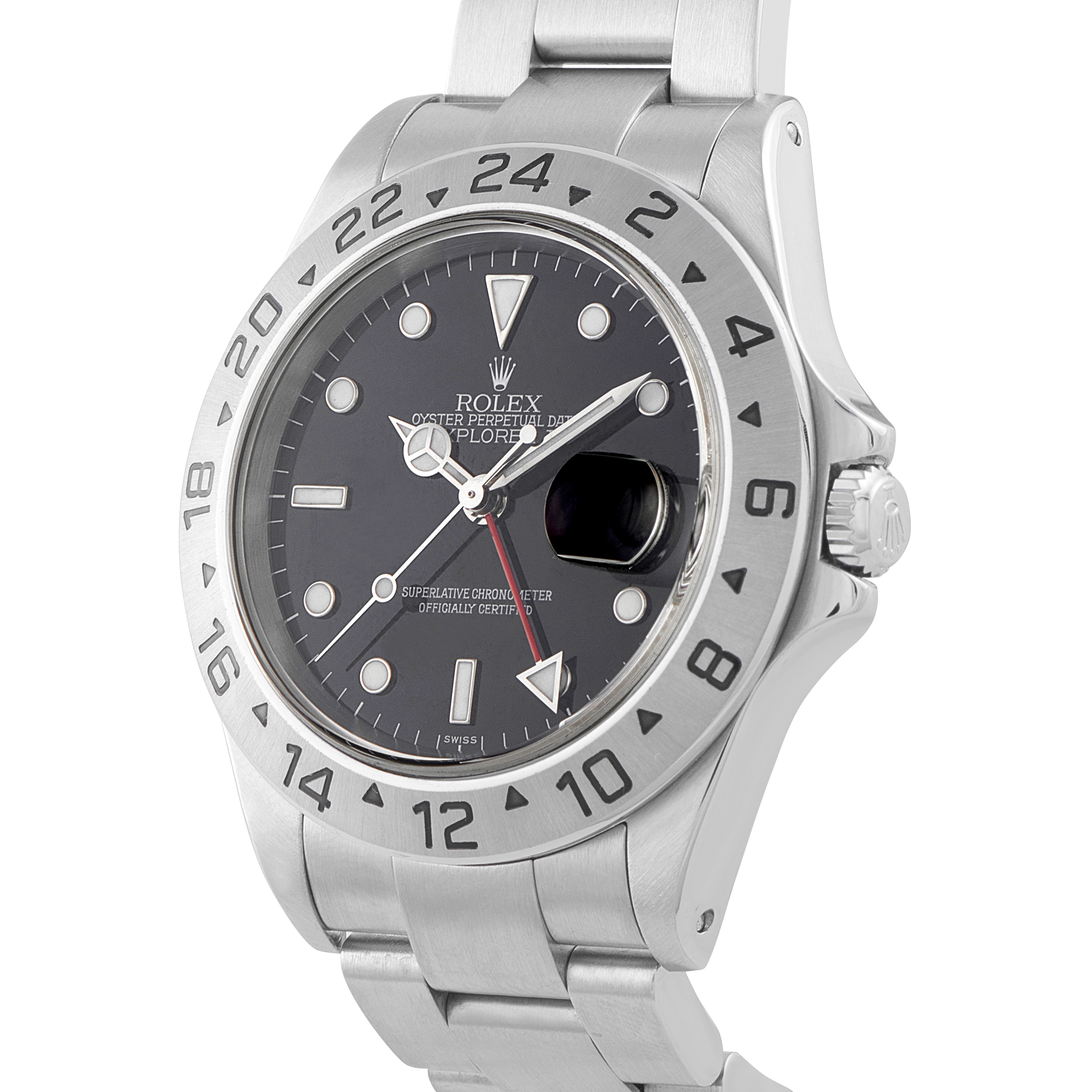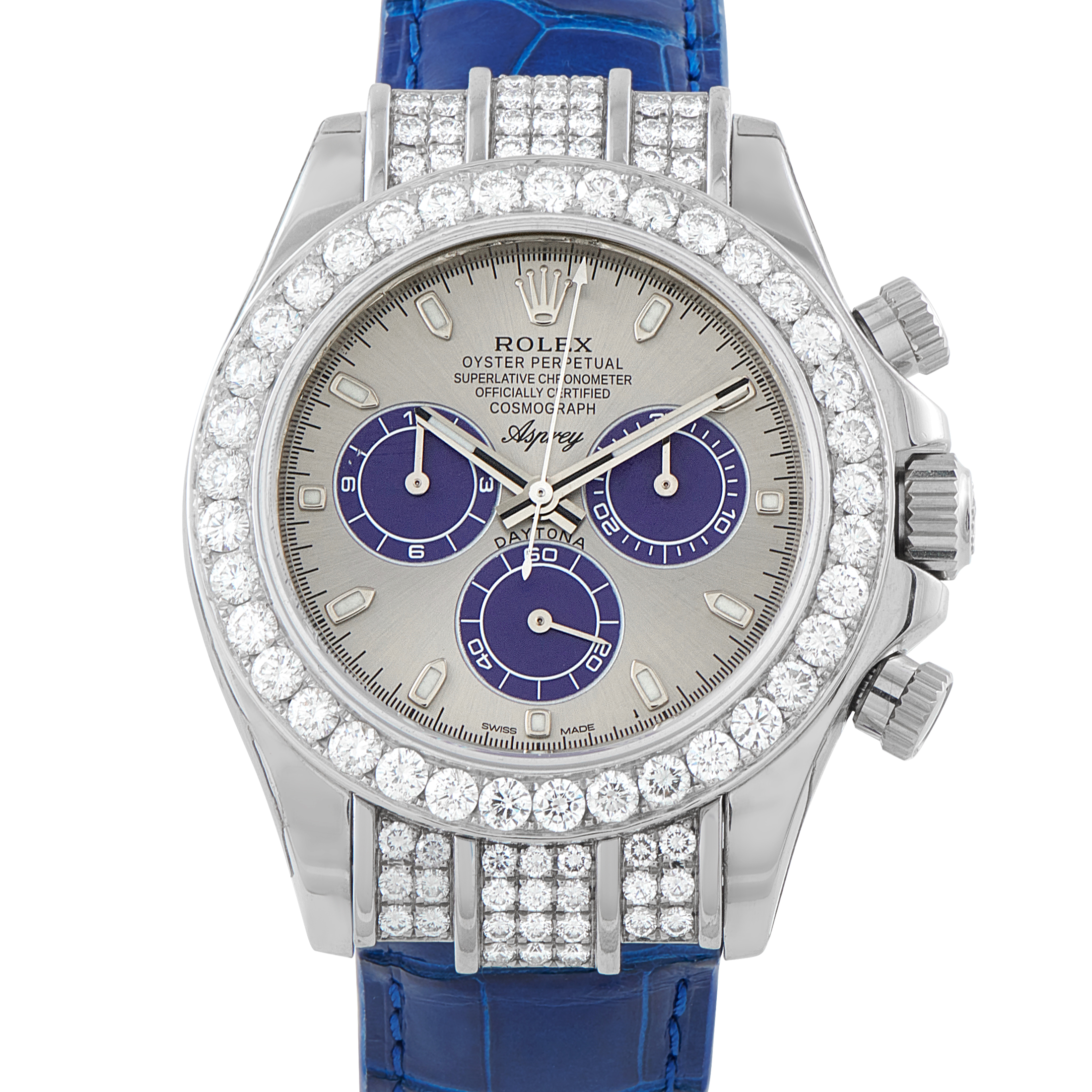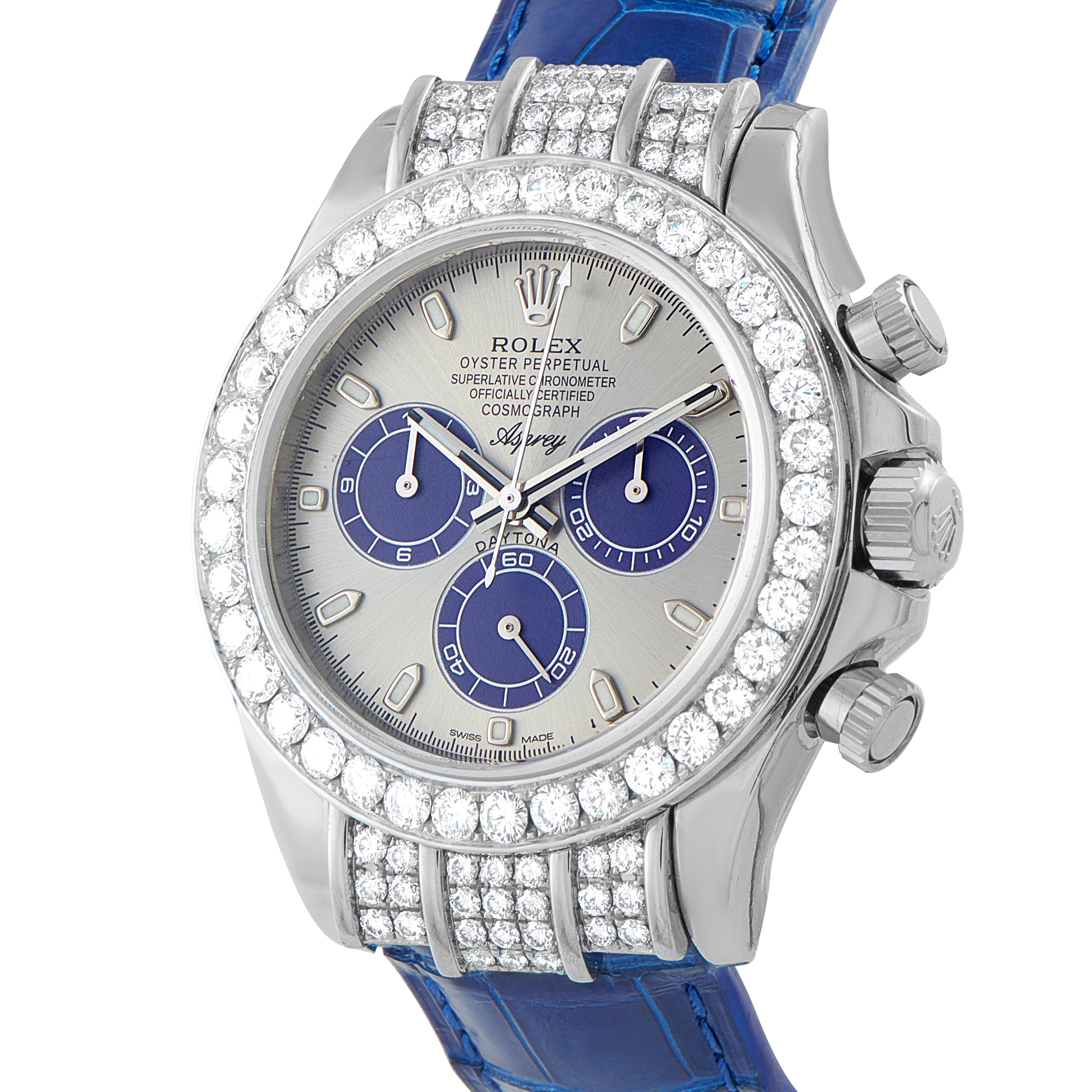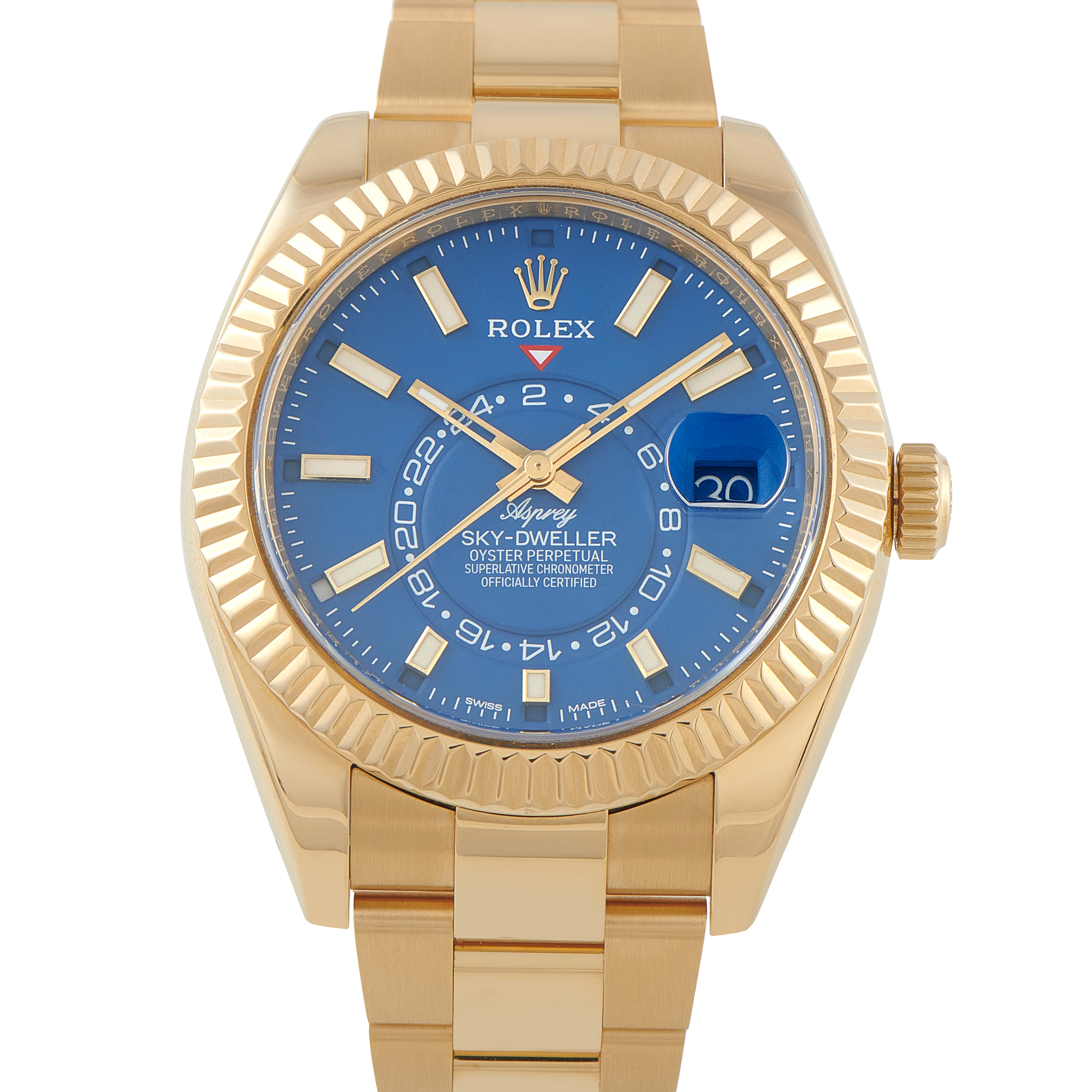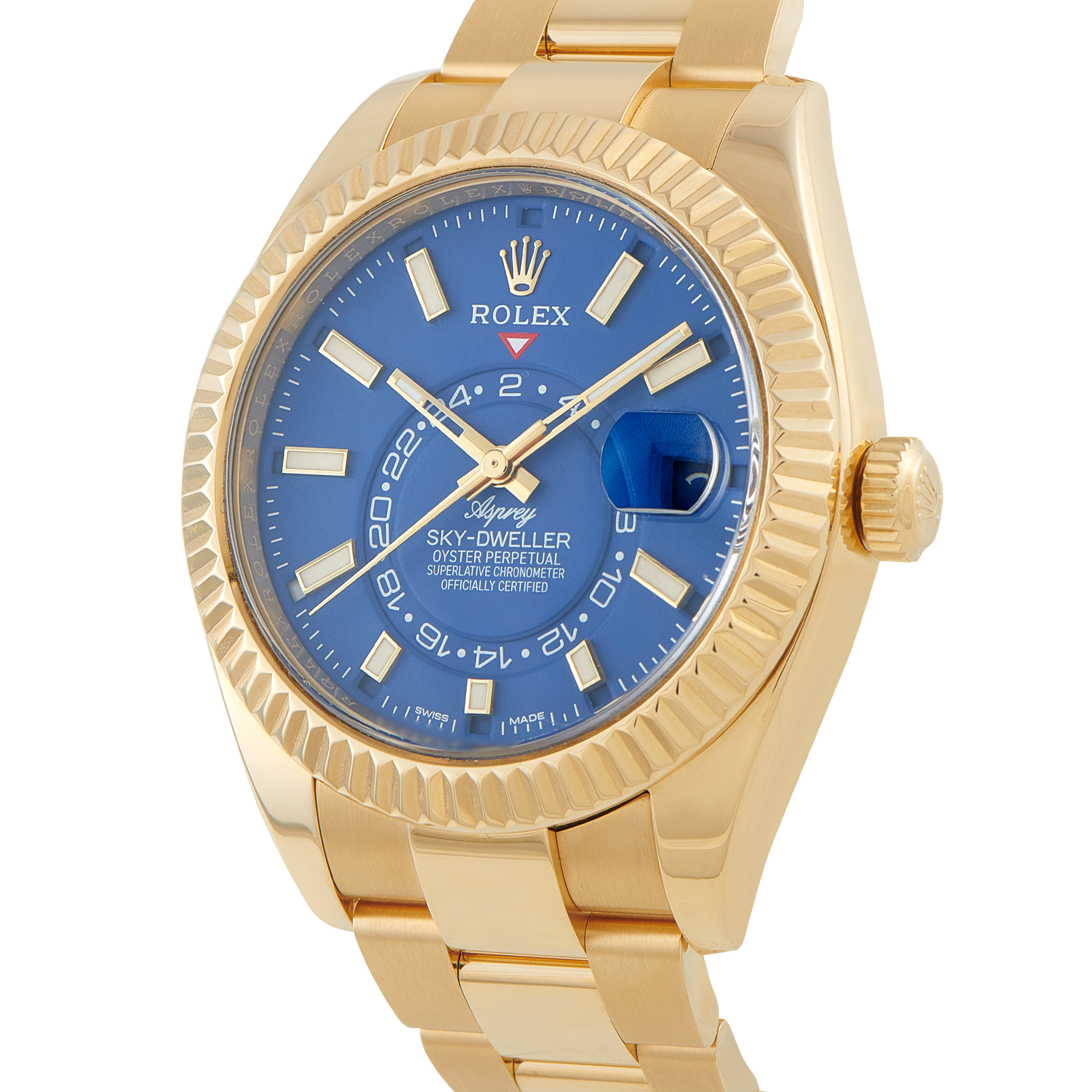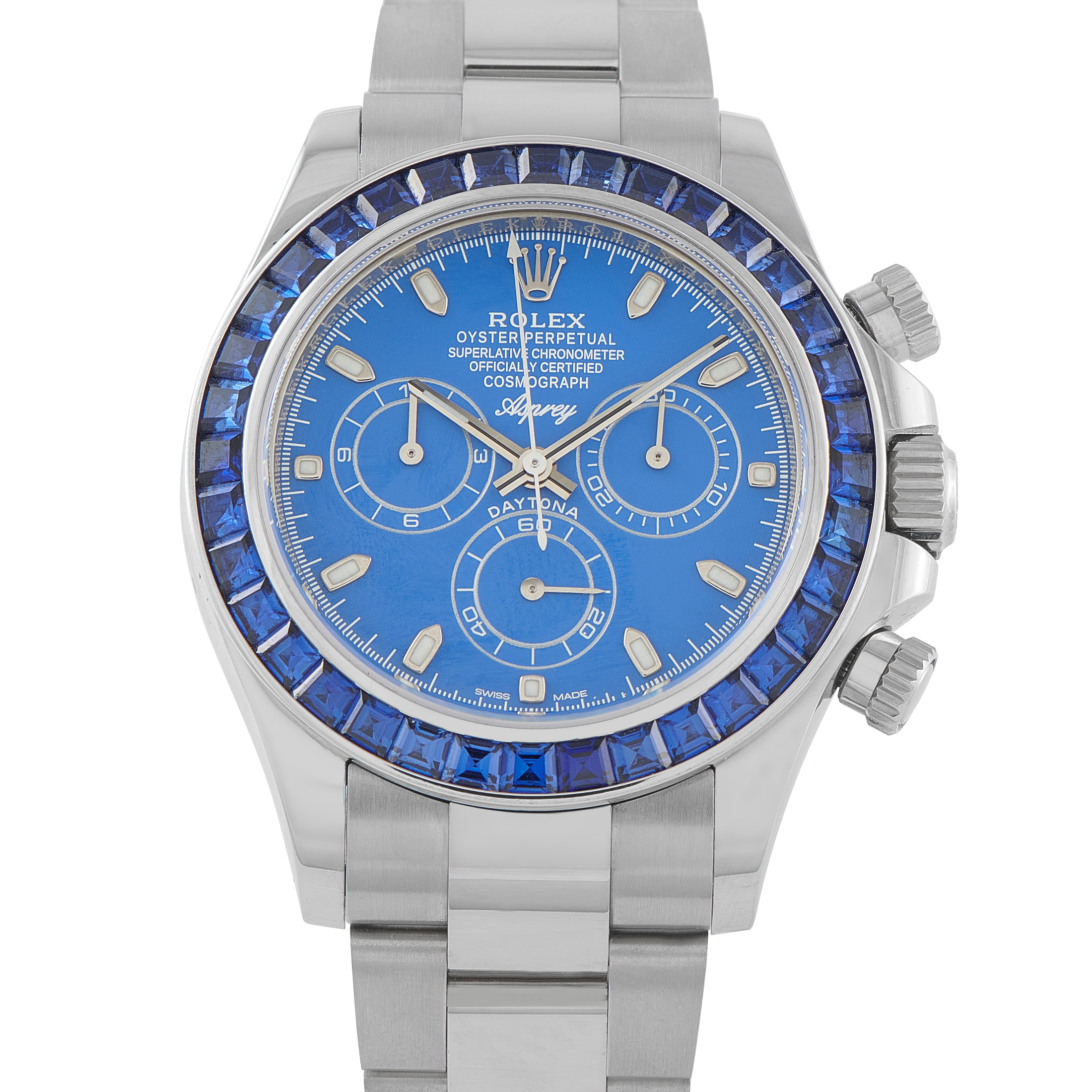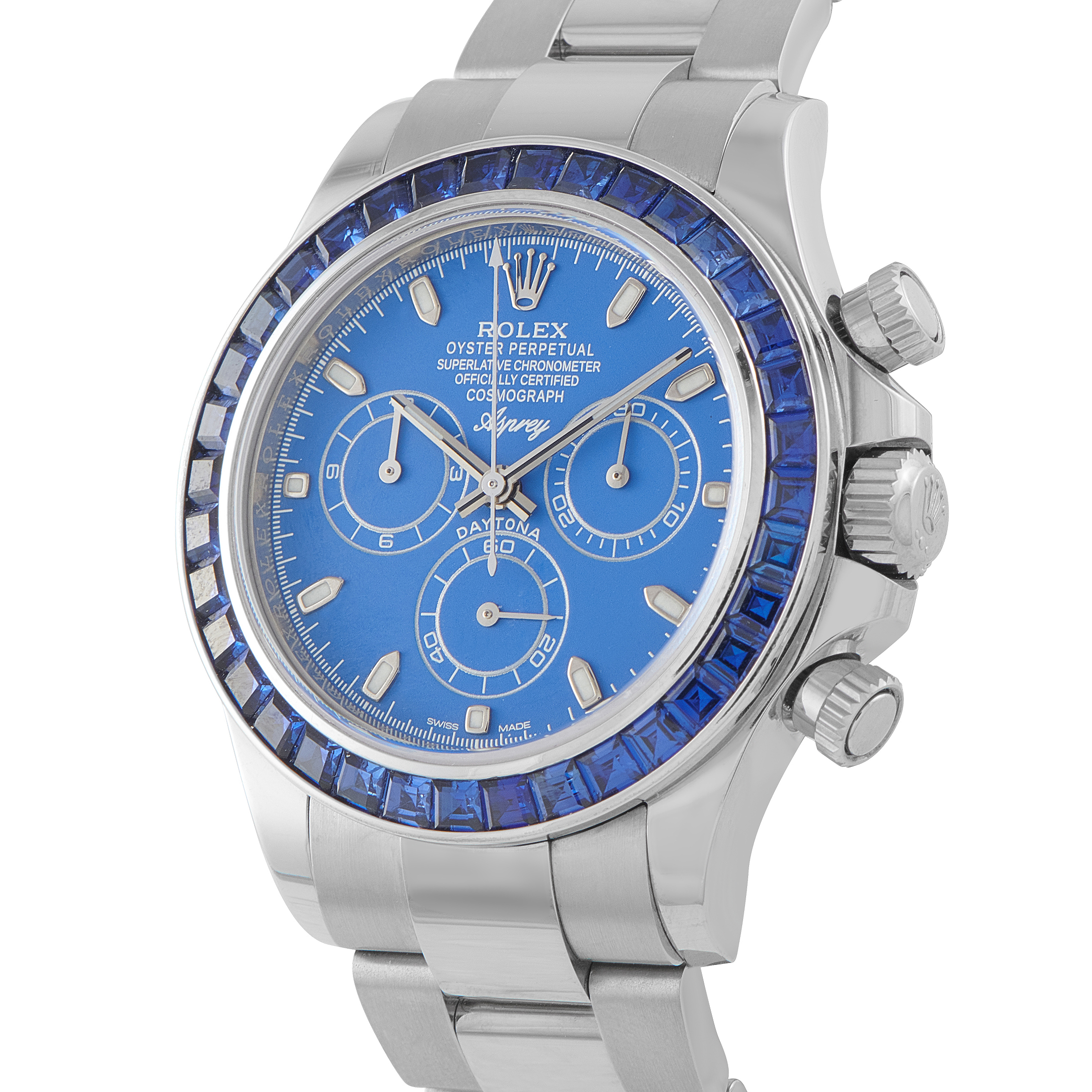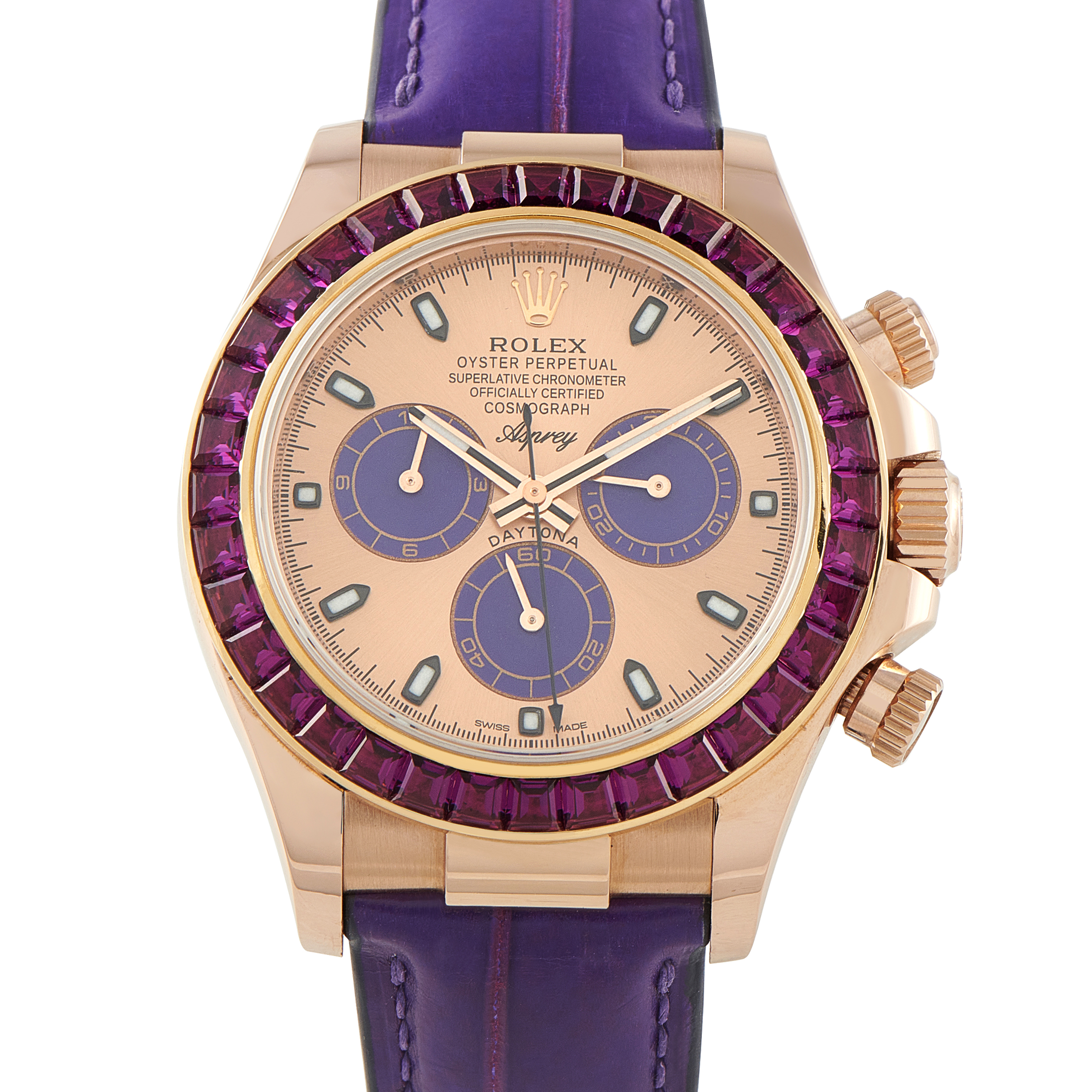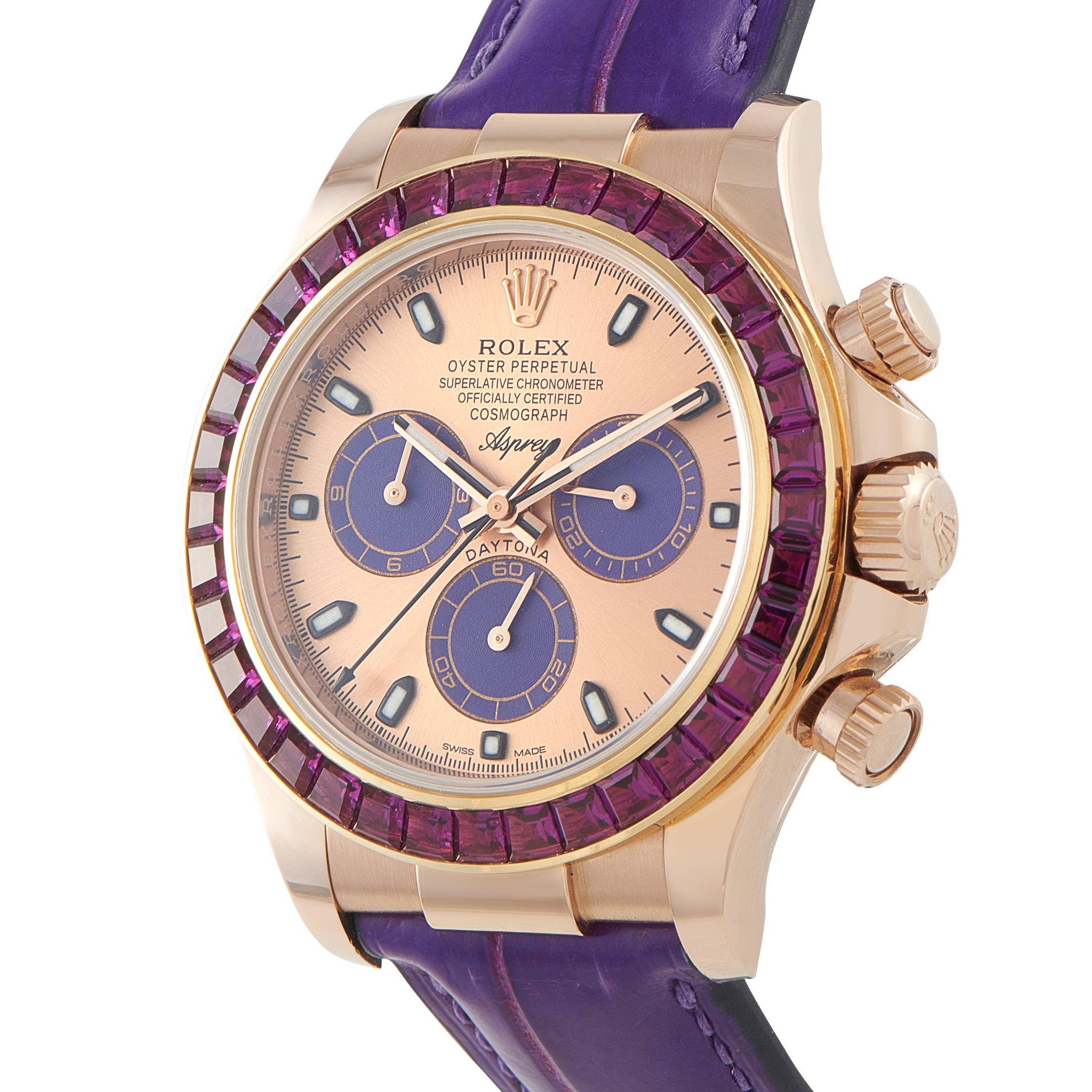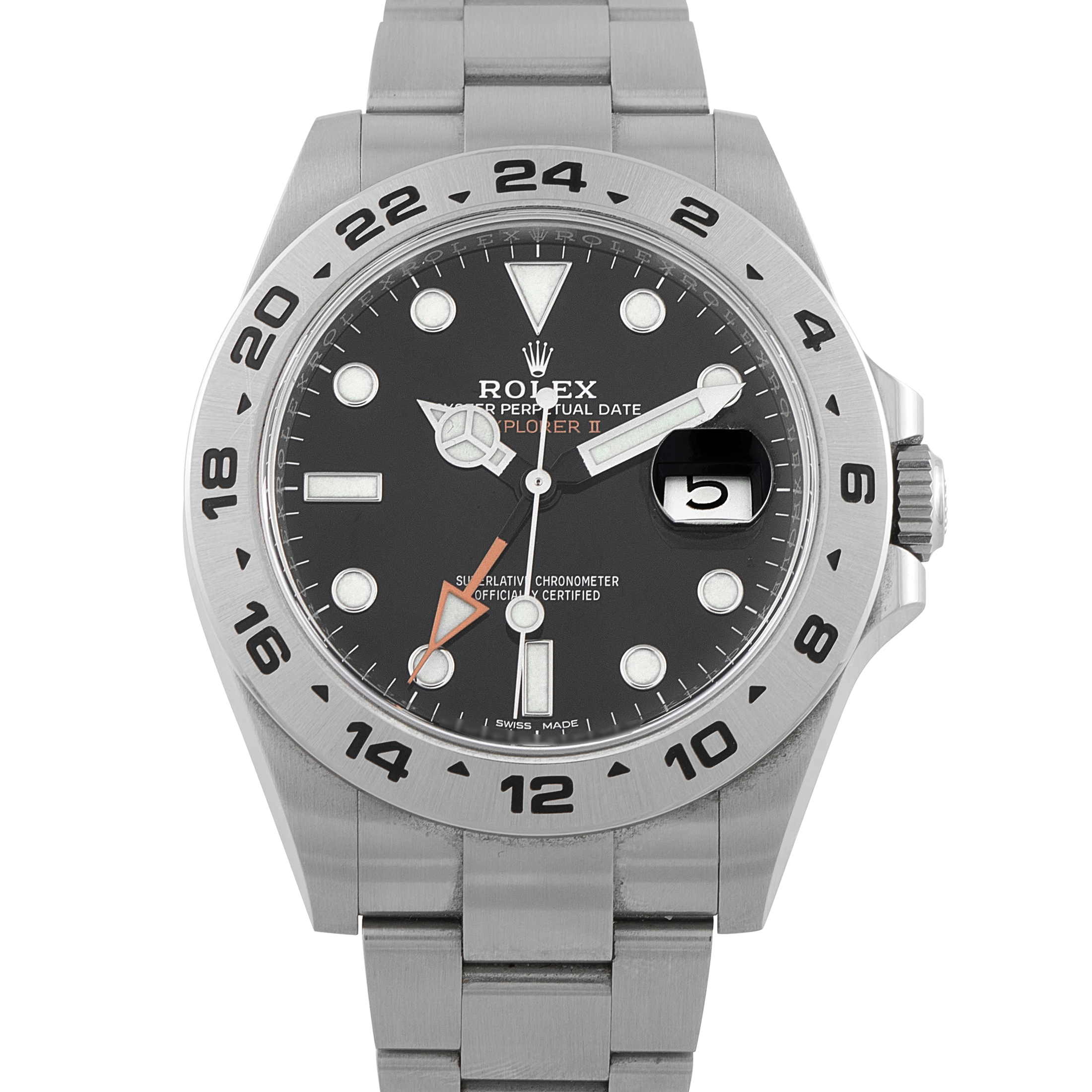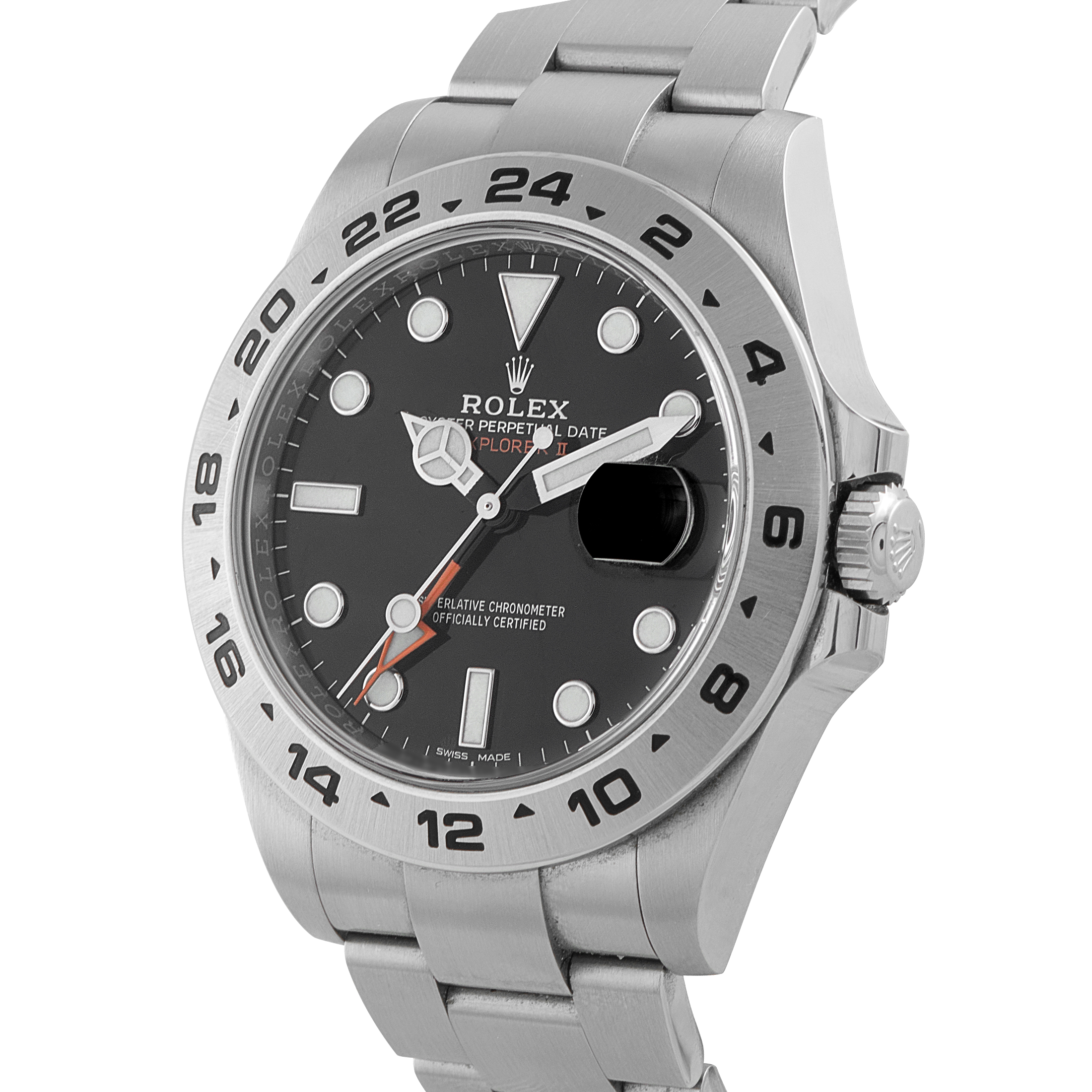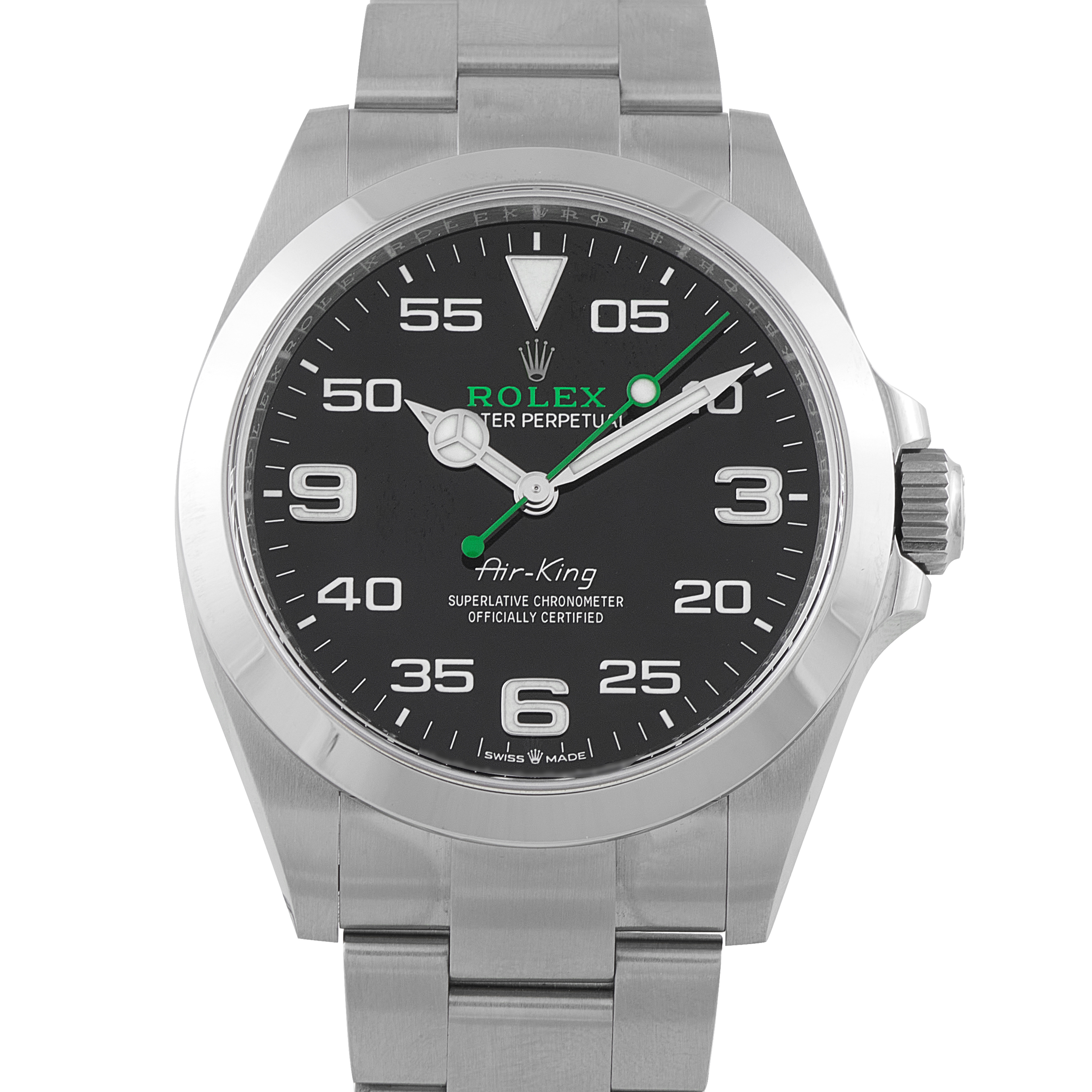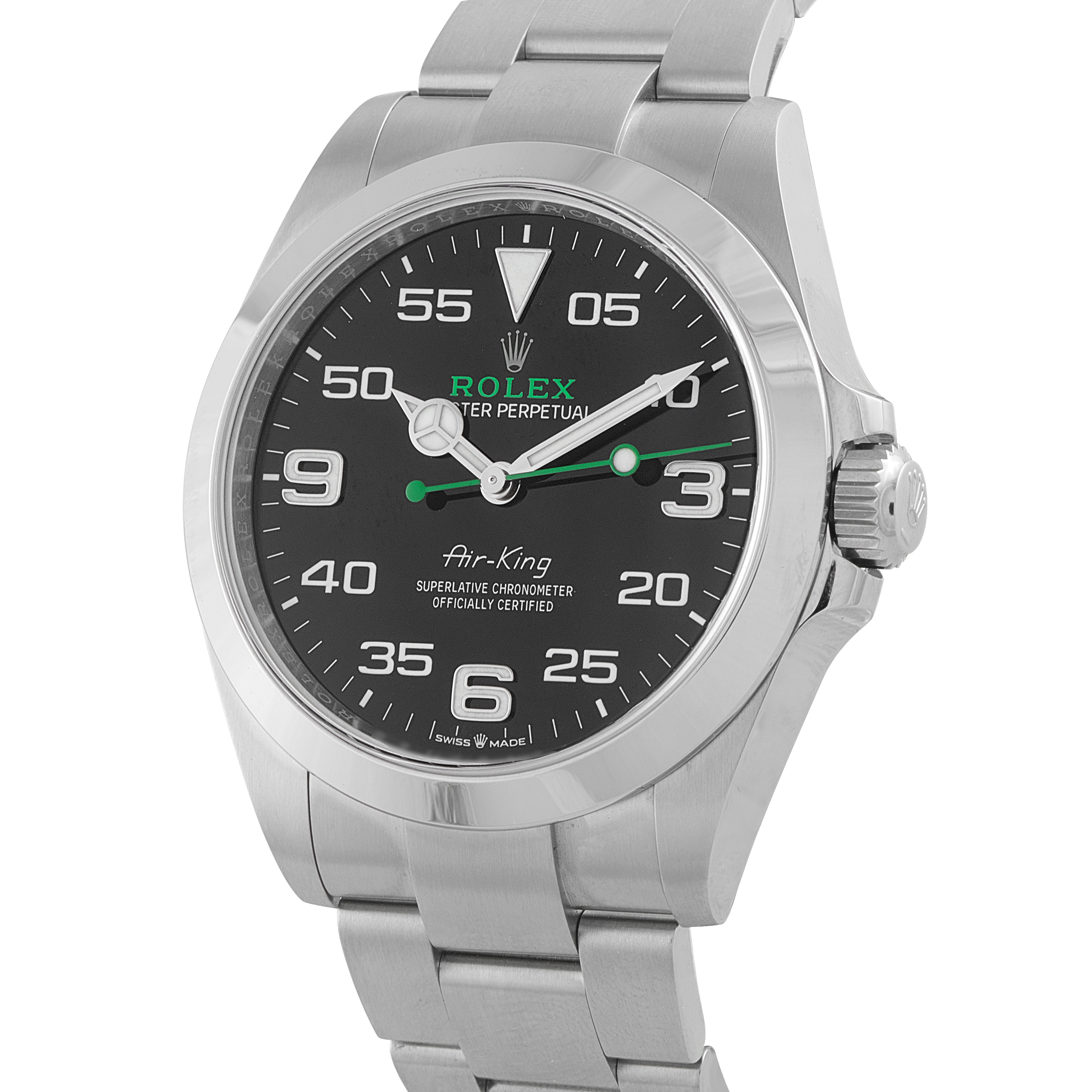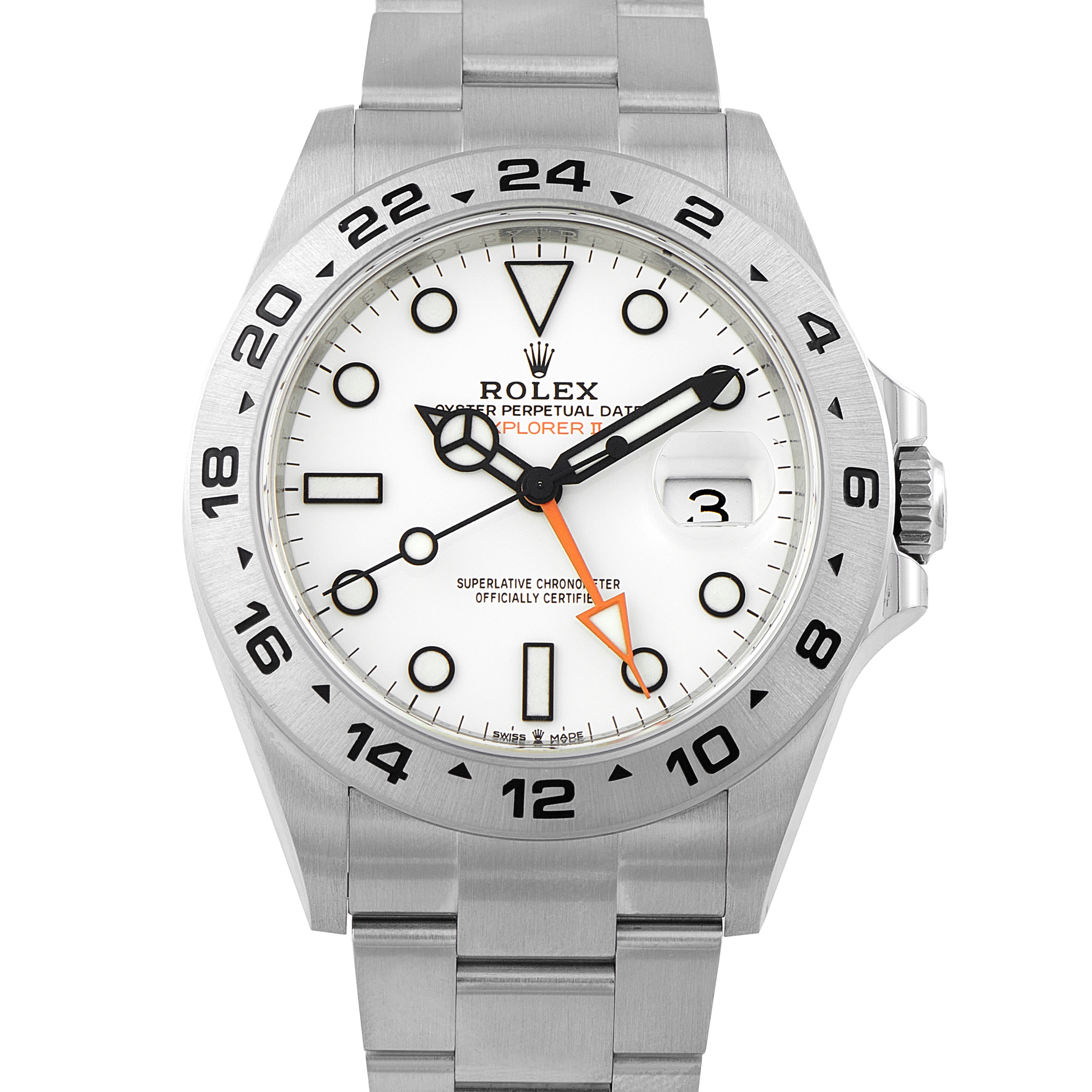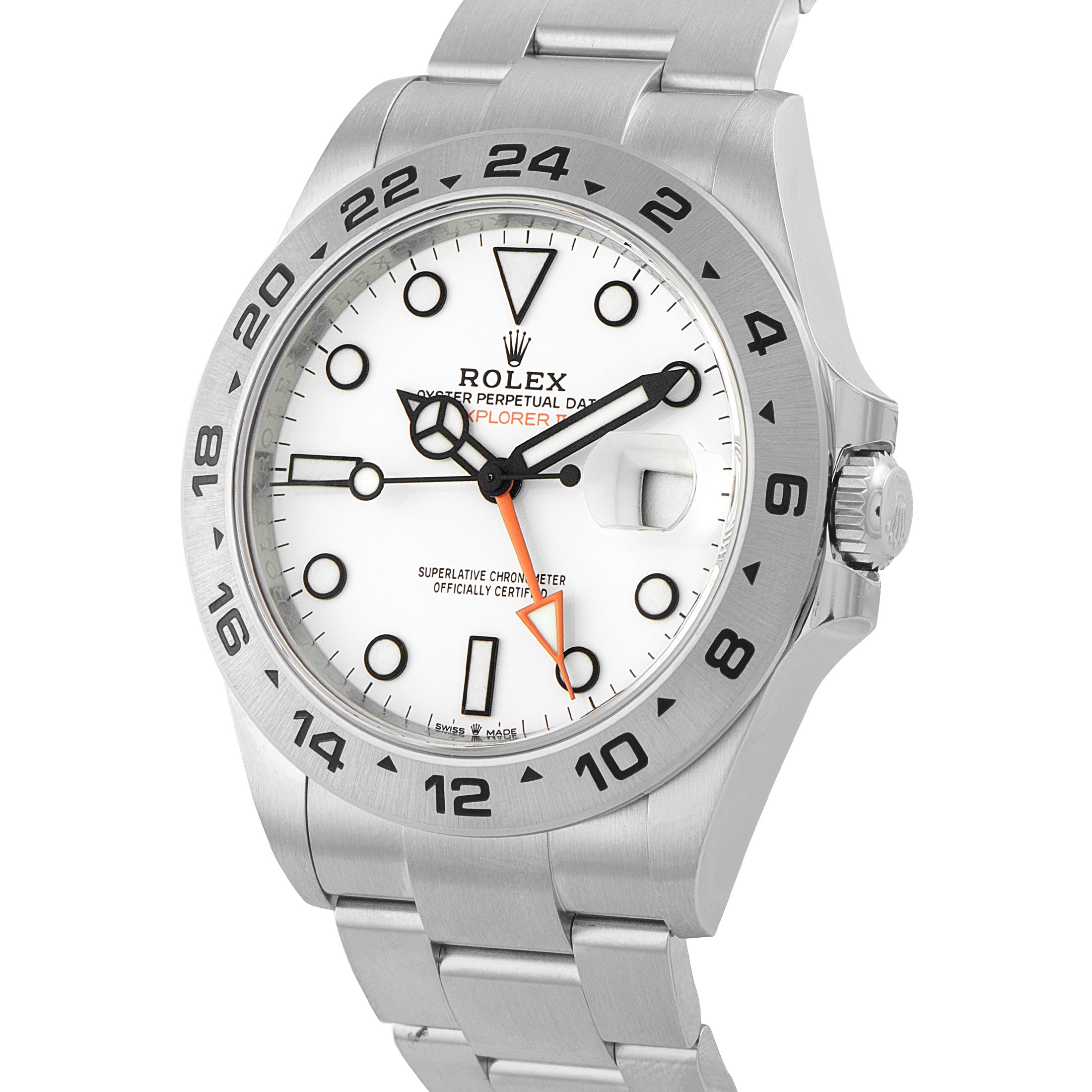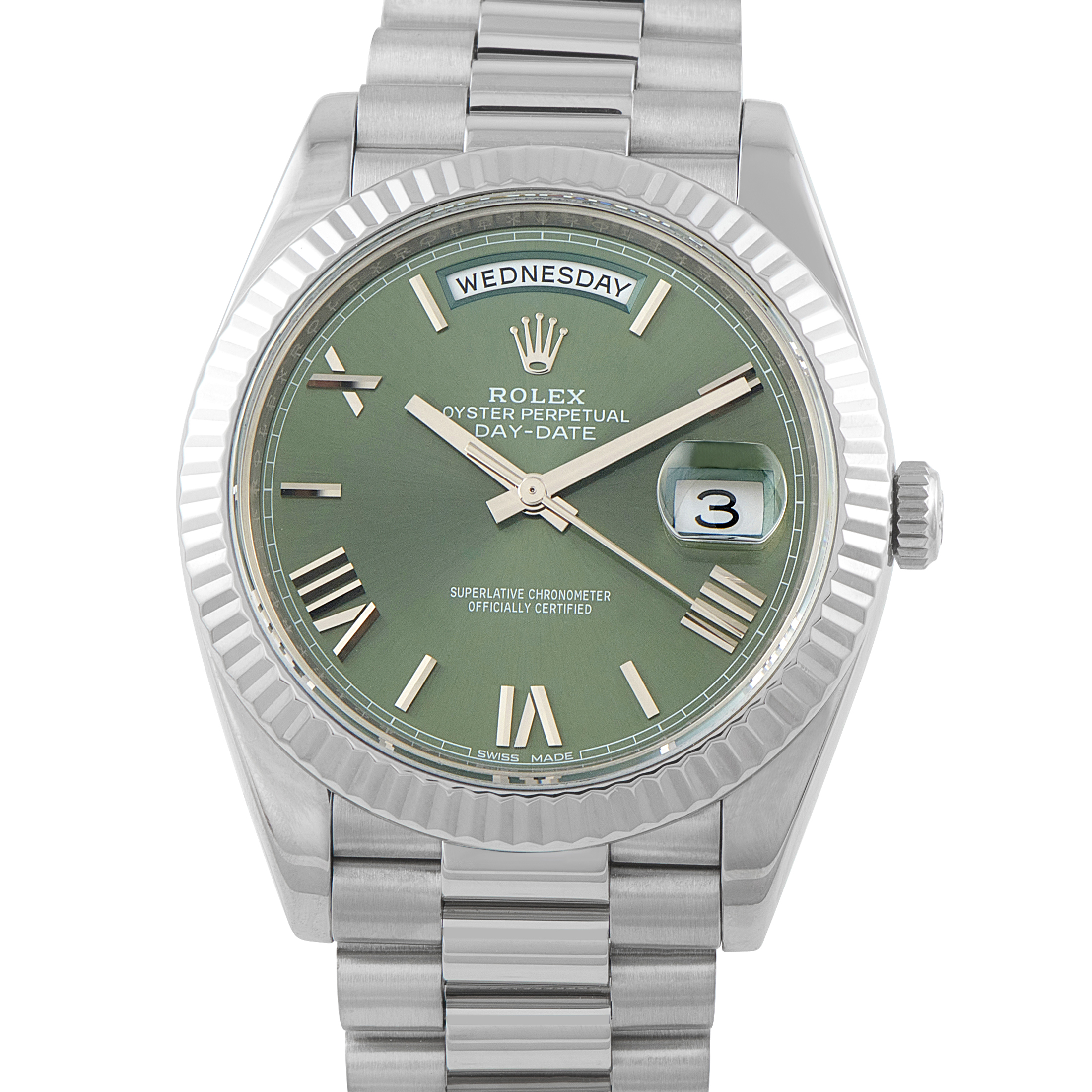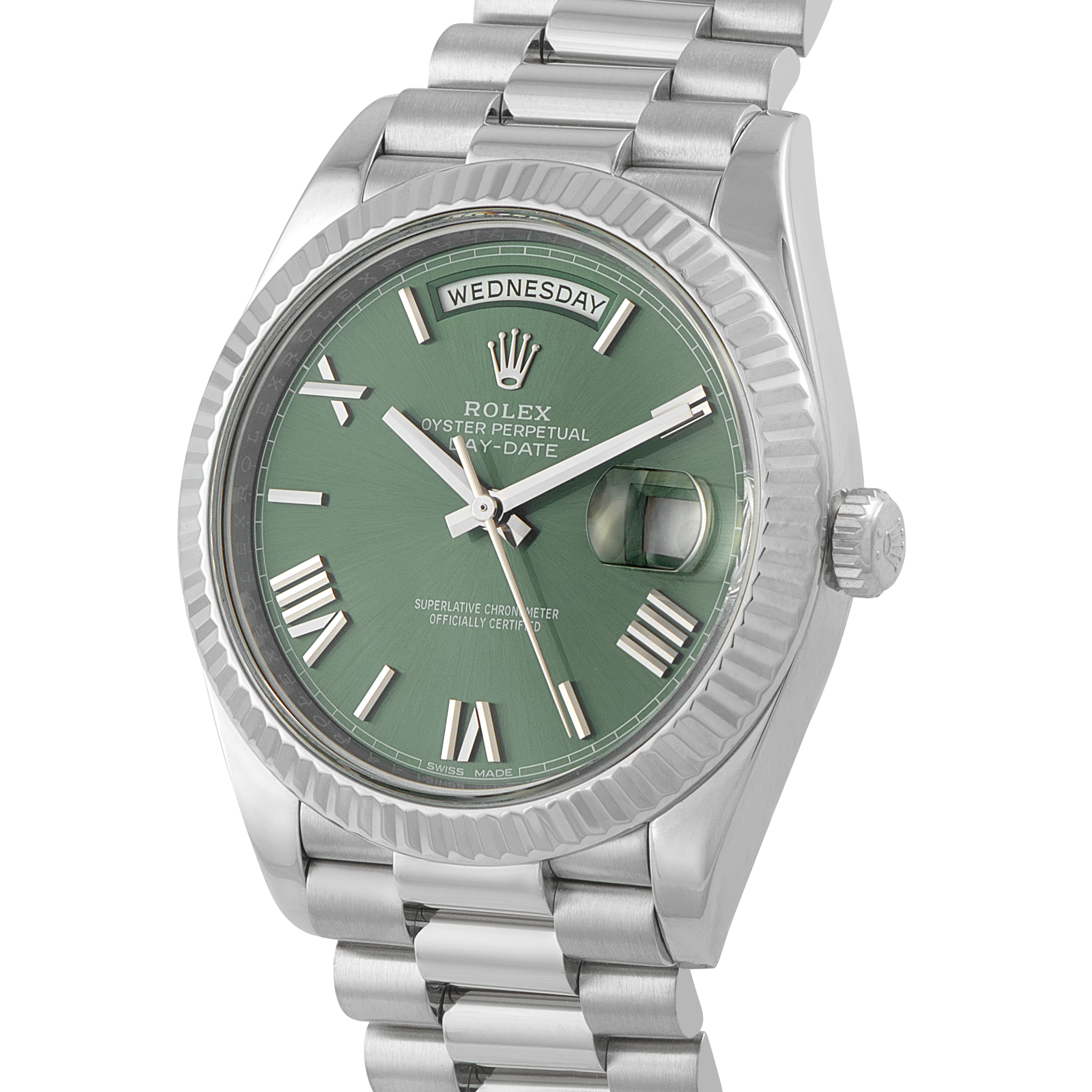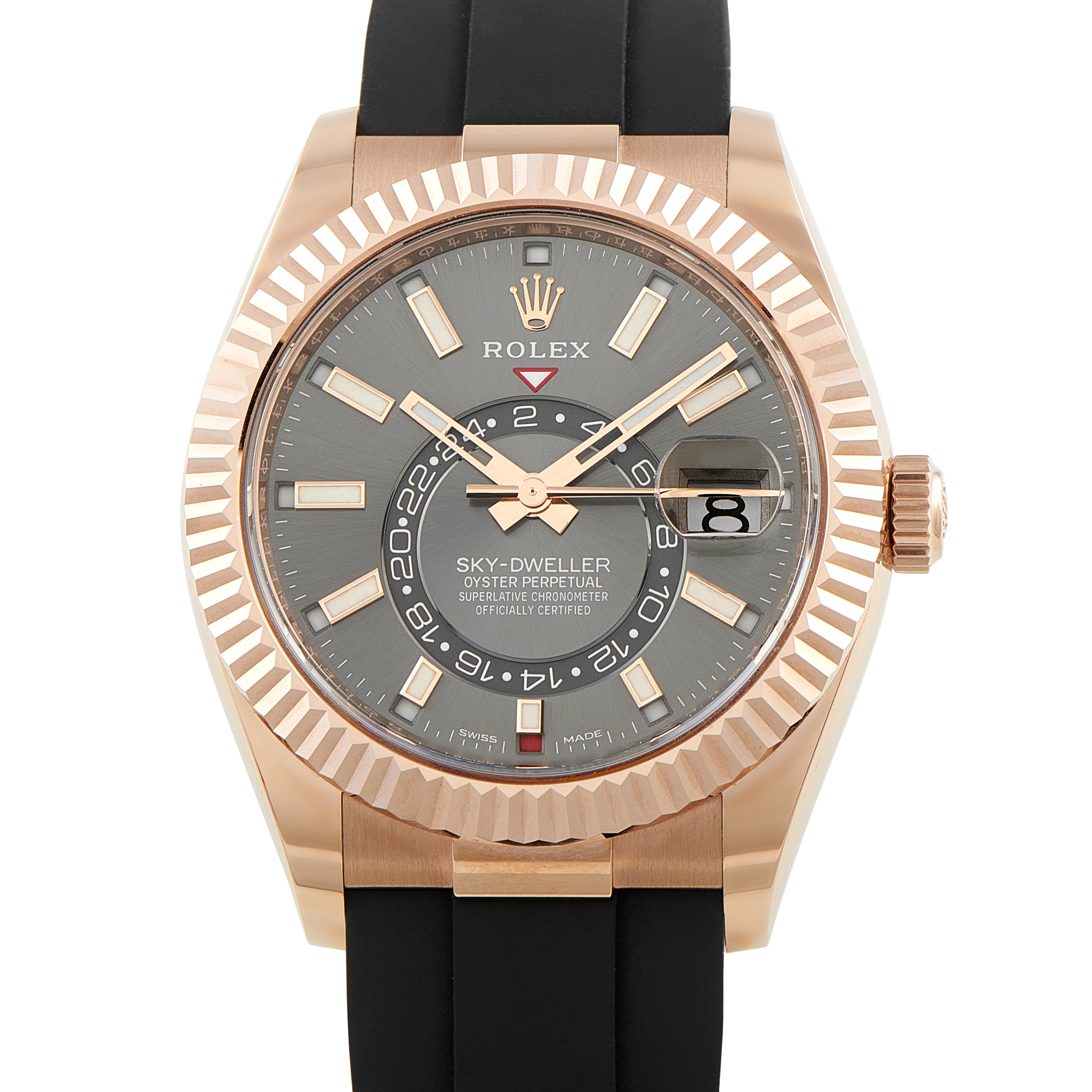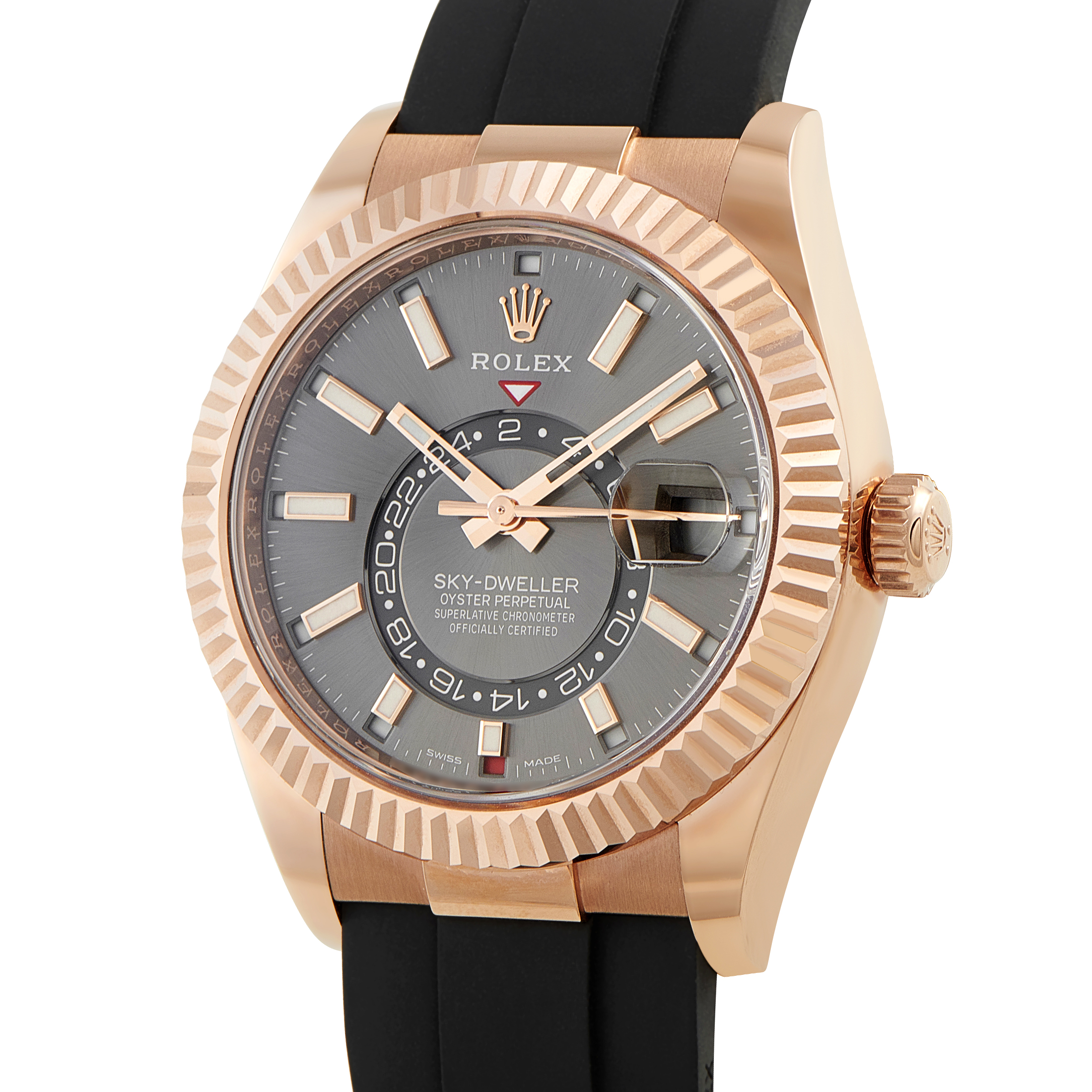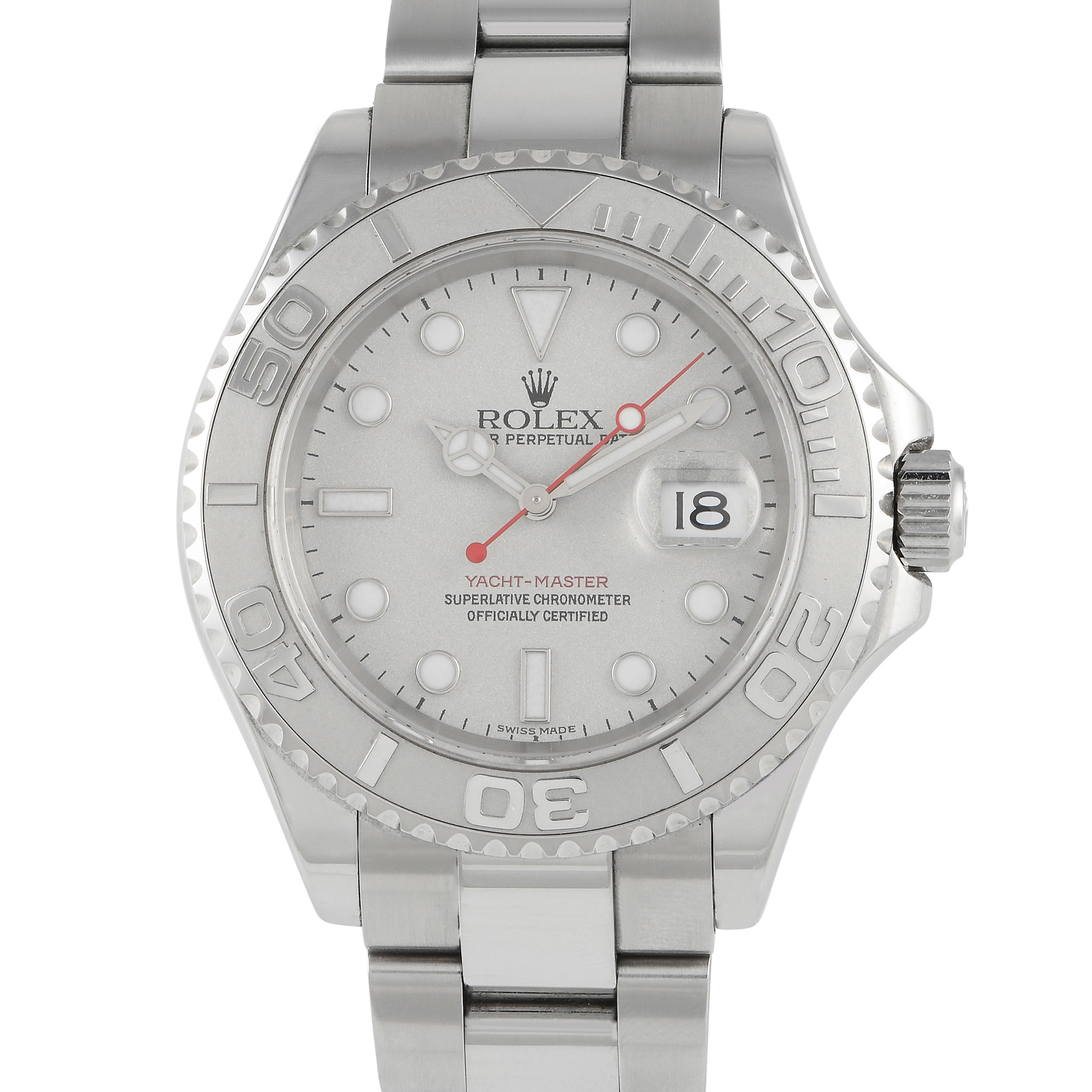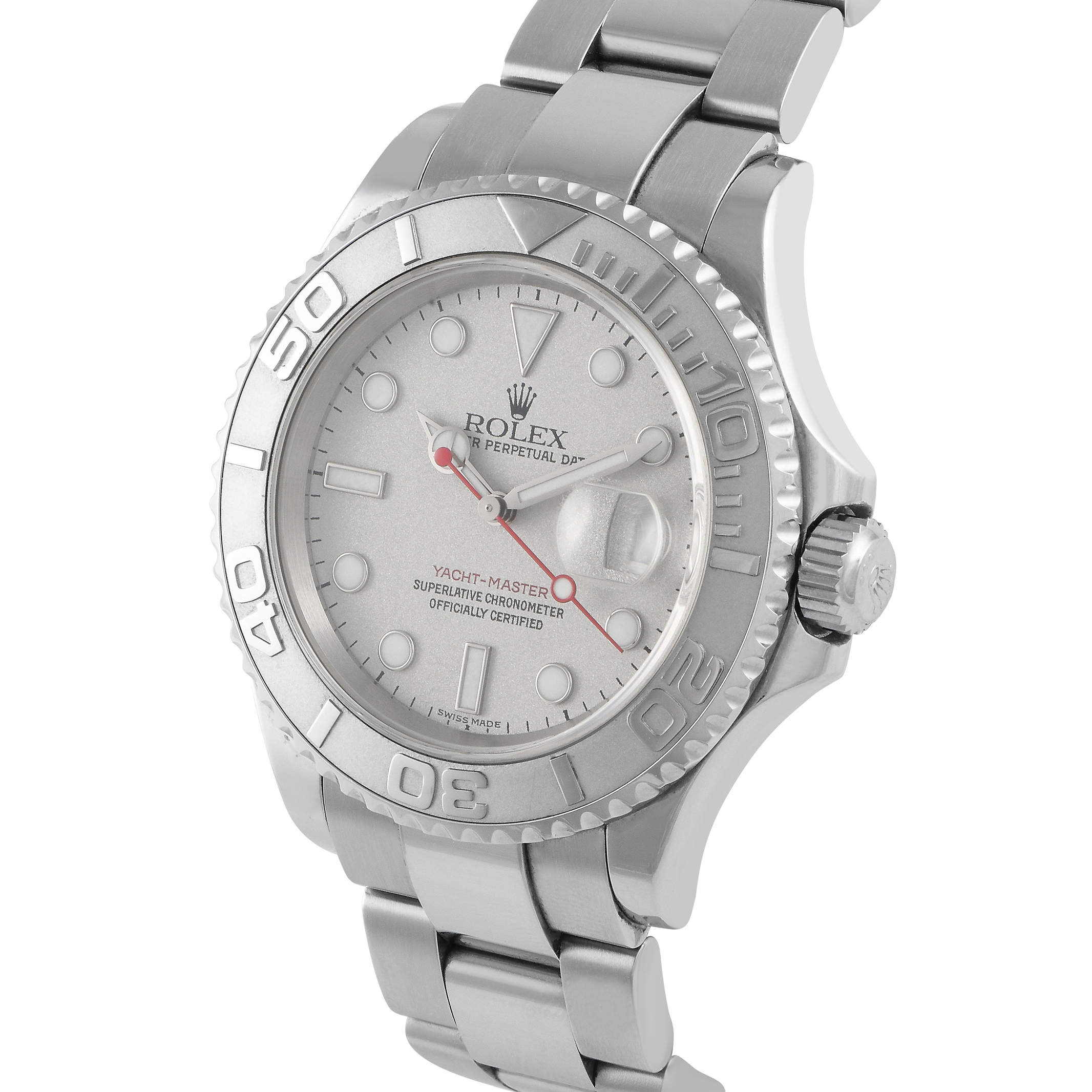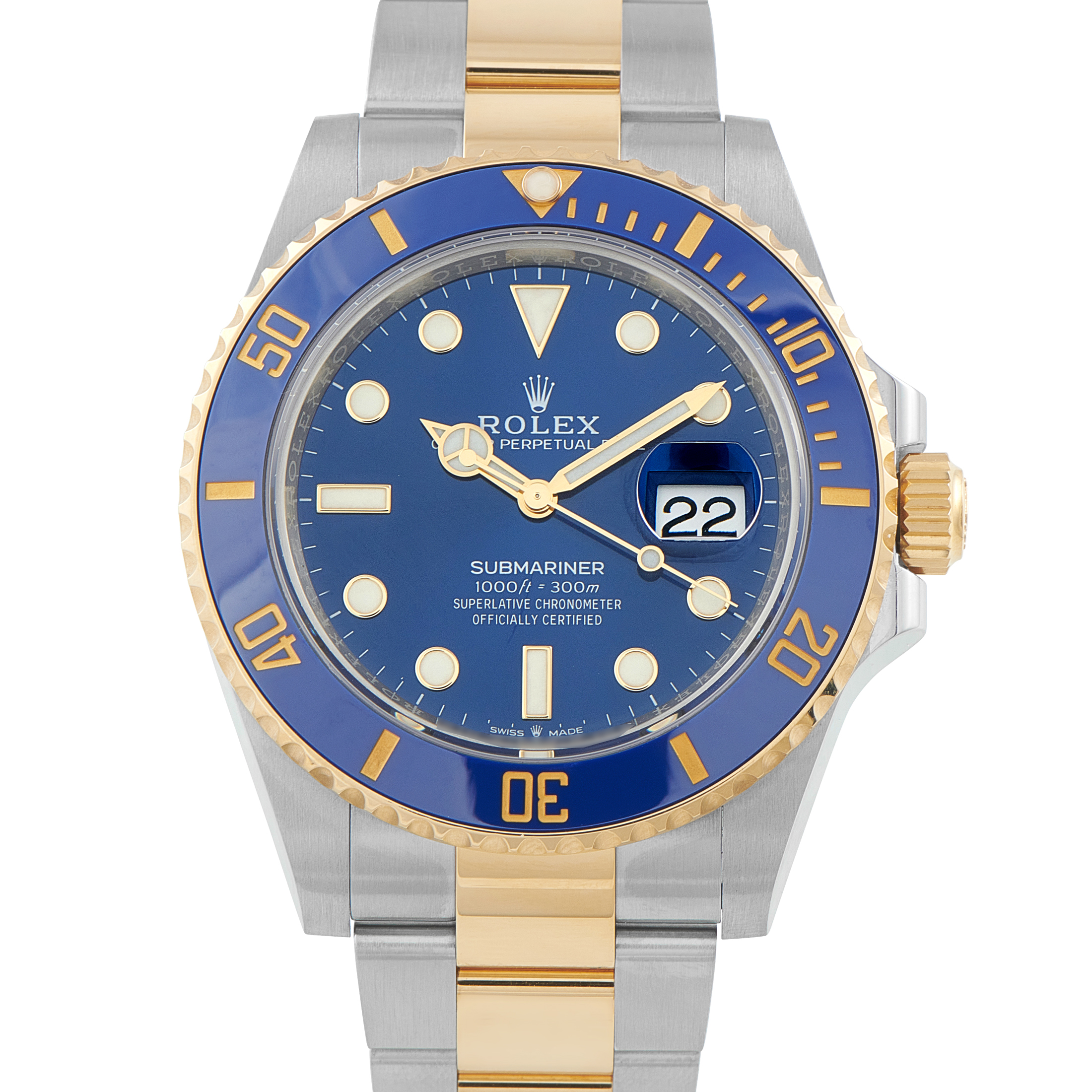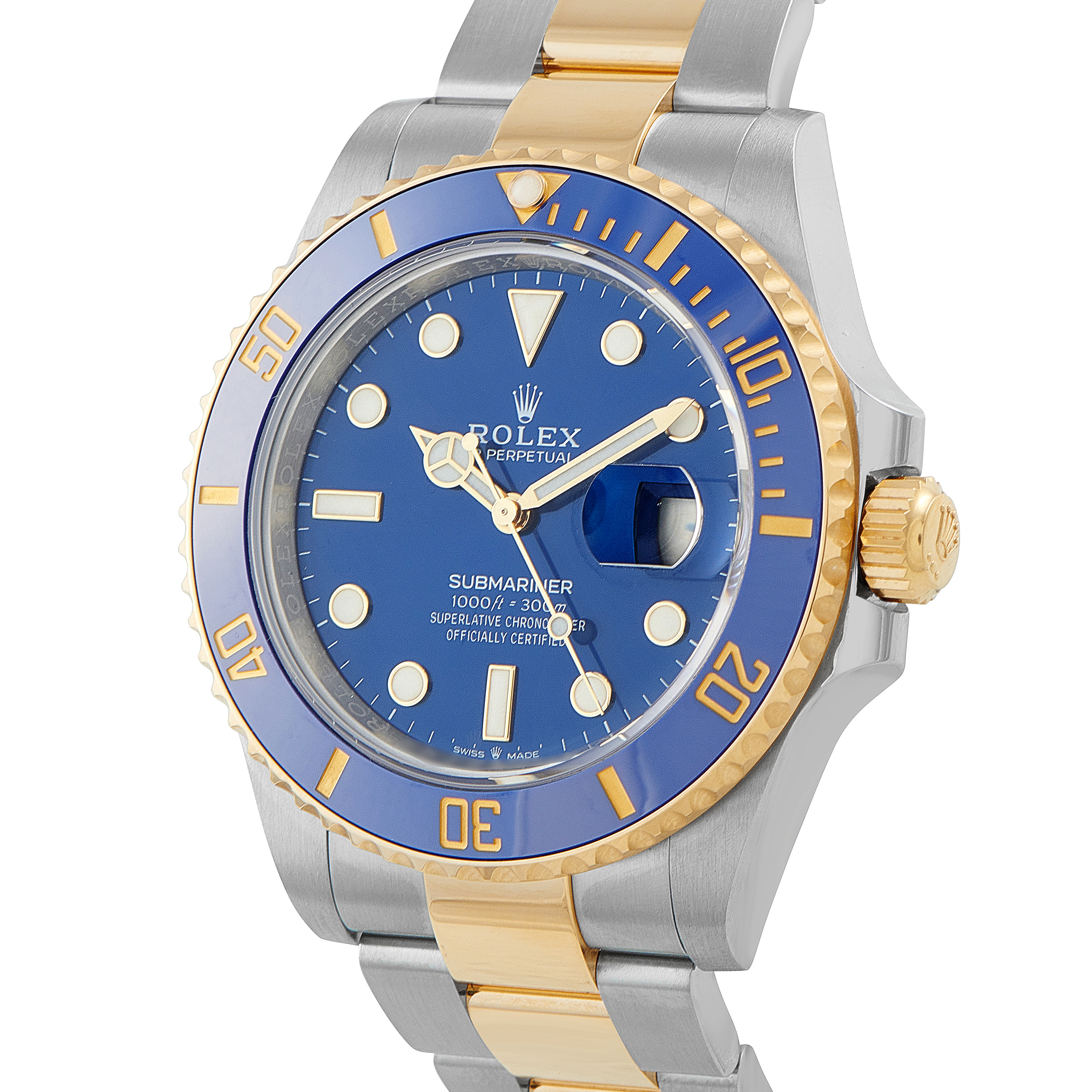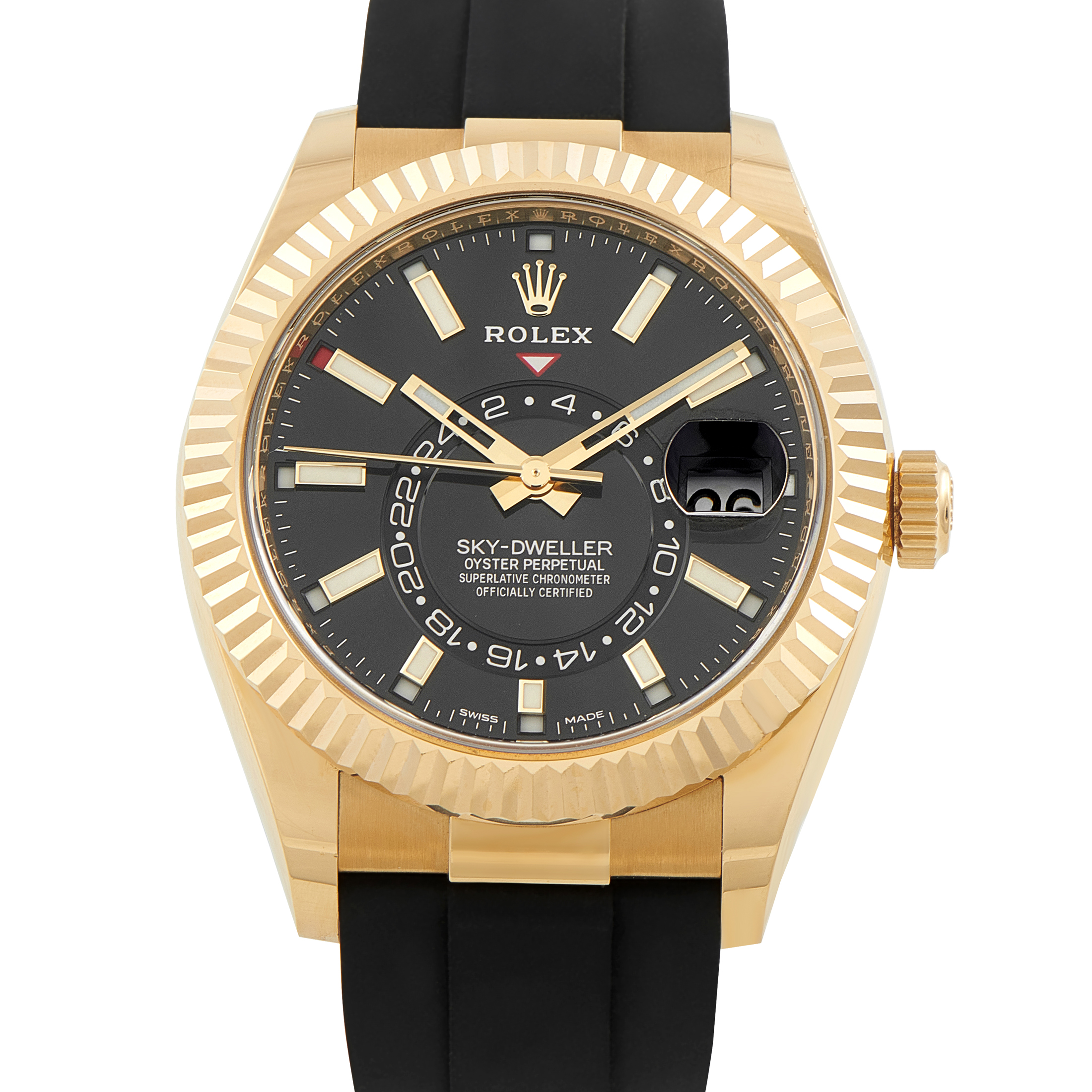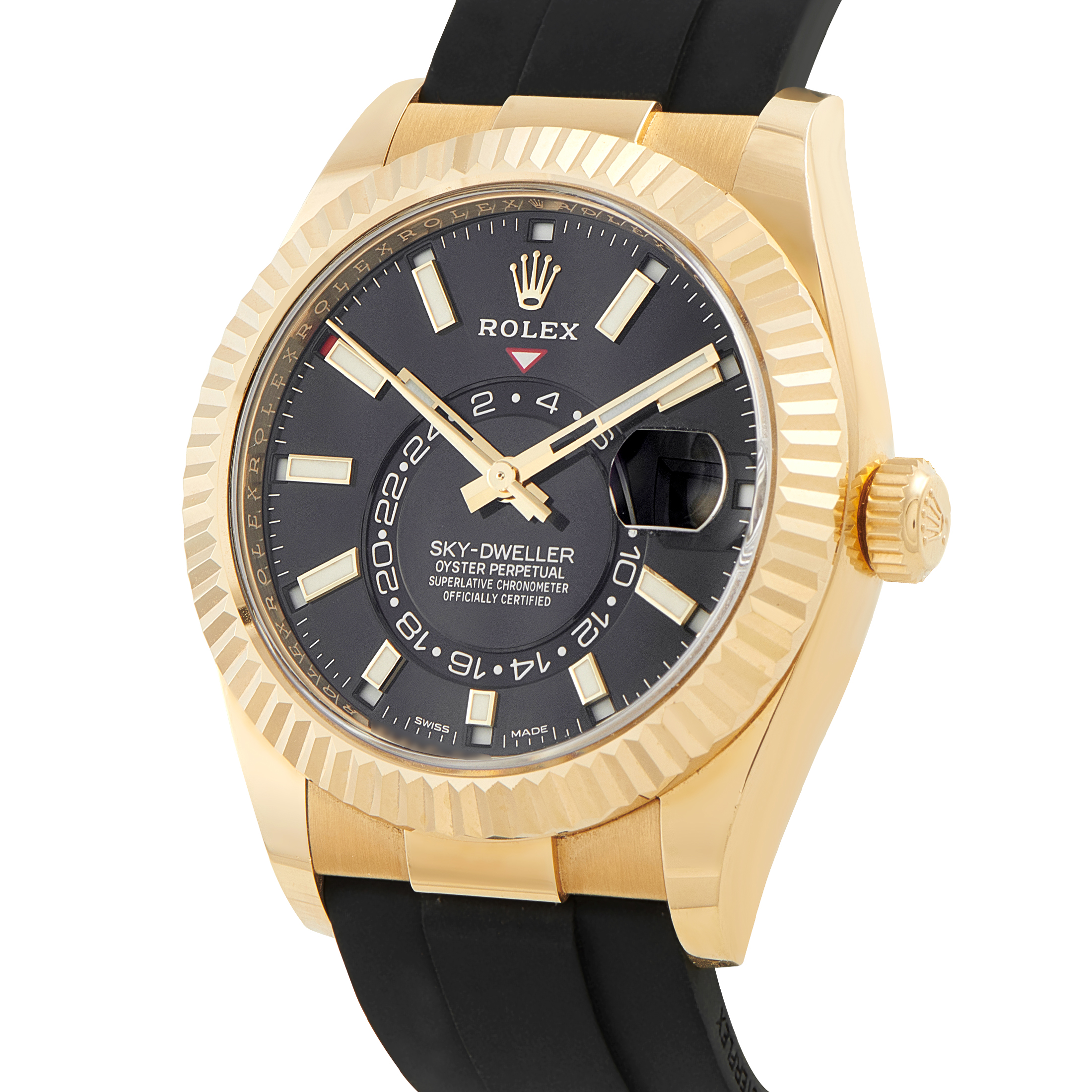Rolex. The House of the Crown, the best-known horology company in the world.
Rolex invented and popularized many of the most notable and common elements that define modern watches – both in terms of design and functionality. As a result of being the first in many categories, Rolex watches of any particular style usually set the standard against which other watches in the same class are compared. It’s no surprise that the King of watches makes the rules.
Rolex has arguably done more than any other watch company to popularize wrist watches. Love it or love to hate it, Rolex wears the Crown.
Read more about how Rolex keeps its seat on the throne of the luxury watch industry:
- History of Rolex Watches
- Rolex Watch Manufacturing
- Authorized Retailers and Grey Market
- Notable Models
- Notable Patrons and Owners
- Sponsorships and Collaborations
Rolex Resources
Introduction to Rolex:
Rolex Buying Guides:
History of Rolex
Rolex was founded in 1905 in London under the name Wilsdorf & Davis, Ltd (W&D), by Hans Wilsdorf and his brother-in-law, Alfred Davis. Davis left the company early on and it is Wilsdorf who is recognized as the force that guided the Rolex brand to become what it is today. However, it’s important to note that it wasn’t until 1908 that Wilsdorf registered the name Rolex.
Early History of Rolex Watches
Initially, Wilsdorf and Davis just assembled and exported watches: they imported highly-precise movements made by Hermann Aegler in Bienne, Switzerland, and placed them inside cases made in the United Kingdom. Their first watches were often sold to jewelers, who branded the watches as their own, while the W&D brand was stamped inside the case back. W&D specialized in exporting pocket watches and wristwatches throughout the British Empire.

In the early 20th Century, wristwatches were uncommon, small in size, not very accurate, and almost exclusively worn by women. Men generally carried pocket watches and didn’t wear wristwatches, which were known at the time as “wristlets” and seen as a fad. However, soldiers were already modifying their pocket watches and strapping them on their wrists, which allowed them to read the time quickly without the need for digging into their pockets first. Wilsdorf was a visionary and knew that the wristwatch would eventually replace the pocket watch as the men’s go-to timepiece.
Timeline: The Birth of Rolex
- 1905: Hans Wilsdorf and Alfred Davis establish Wilsdorf & Davis
- 1908: W&D registers the trademark “Rolex”
- 1910: A Rolex becomes the world’s first wristwatch to gain the Swiss Certificate of Chronometric Precision
- 1914: A Rolex wristwatch is awarded a class “A” precision rating by the British Kew Observatory
- 1914: World War I breaks out
- 1915: The British government imposes 33% customs duty on watches, and Rolex moves its export division to Bienne, Switzerland
- 1919: Rolex moves headquarters to Geneva, Switzerland
- 1920: Montres Rolex S.A. is registered in Geneva
In 1908, Wilsdorf registered the name “Rolex” as a trademark for W&D because the two partners wanted to have a brand name to stamp on the dials of the watches they exported. Although it was customary for importers to stamp their names on the dials, Wilsdorf had something different in mind.
The company claims that the name came to Wilsdorf while he was riding in a horse-drawn double-decker in London. As the founder put it, “a genie whispered ‘Rolex’ in my ear.” What we do know for certain is that the name “Rolex” was ideal for the dial as it was short, simple to remember, and straightforward to pronounce in almost all languages.
Over the following years, W&D would stamp more and more of their watches with the Rolex name; within two decades, all of their watches would be branded Rolex.
In 1910, a Rolex watch was the world’s first wristwatch to earn the Swiss Certificate of Chronometric Precision. In 1914, the British Kew Observatory awarded a Rolex wristwatch with a class “A” precision rating, which was originally only intended for marine chronometers. That same year, World War I broke out.
The British government imposed a 33% customs duty on watches in 1915 due to the War so Wilsdorf had no choice but to move his export operations to Switzerland, where he had already had an office for his business dealings with Aegler. By 1919, Rolex moved its headquarters to Geneva, Switzerland, and Montres Rolex S.A. was registered in Geneva the following year.
Once Rolex was established in Geneva, the company rapidly progressed into a leading watchmaker. With a focus on making high-quality, precise, reliable, and practical waterproof wristwatches, Rolex was behind a slew of innovations that not only benefited the company but also the watchmaking industry at large.
- 1926: Rolex introduces the Oyster, the world’s first waterproof watch
- 1931: Rolex introduces the world’s first self-winding movement with a “Perpetual” rotor
- 1945: Rolex introduces the Datejust, the world’s first self‑winding wrist chronometer to display the date in a window. The Jubilee bracelet debuted on the Datejust watch
- 1945: Wilsdorf establishes the Hans Wilsdorf Foundation, which was given 100% ownership of Rolex
- 1953: Rolex introduces the Explorer to celebrate mankind’s first successful ascent of Mount Everest
- 1953: Rolex introduces the Submariner, the world’s first divers’ watch waterproof to 100 meters (330 feet) deep
- 1955: Rolex introduces, the GMT-Master for Pan Am pilots to keep track of two time zones simultaneously
- 1956: Rolex introduces the Day-Date, the world’s first wristwatch to include two calendar windows to display the date and the day of the week written out in full. The President bracelet debuted on the Day-Date watch
- 1956: Rolex introduces the antimagnetic Milgauss watch, resistant to up to 1,000 gauss of magnetism
- 1957: Rolex introduces the Lady-Datejust, a smaller Datejust model made specifically for women
Wilsdorf passed away in 1960 without any heirs. However, the founder had already established the Hans Wilsdorf Foundation in 1945, which owns 100% of Rolex. Despite the death of Wilsdorf, Rolex continued to thrive by releasing a bevy of watch models and always focusing on innovations and inventions that would result in improved precision, reliability, and durability.
Recent Developments
Following the passing of Wilsdorf in 1960, Rolex continued on its path of making tool watches for specific audiences (such as the previous Submariner, Explorer, GMT-Master, and Milgauss), as well as luxury watches (such as the previous Datejust and Day-Date) for discerning clients.
- 1963: Rolex introduces the Cosmograph Daytona for motorsports
- 1967: Rolex introduces the Sea-Dweller for saturation divers
- 1968: Rolex introduced the Cellini collection, home to non-Oyster dress watches
- 1971: Rolex introduces the Explorer II for spelunkers
- 1985: Rolex introduces the GMT-Master II as an updated version of the original GMT-Master
- 1988: Rolex introduces the redesigned automatic Daytona collection
- 1992: Rolex introduces the Pearlmaster, a range of ultra-luxurious dress watches for women
- 1992: Rolex introduces the Yacht-Master, an ultra-luxurious nautical watch
1963 saw the birth of the Cosmograph Daytona chronograph, which was billed as the ultimate motorsports watch. Then came the Sea-Dweller in 1967, built specifically for saturation divers and featuring a helium escape valve.
The following year, Rolex launched an entirely new range of watches called Cellini, named after the Renaissance man Benvenuto Cellini. These were non-Oyster (not waterproof) dress watches that came in all sorts of shapes and sizes but were always crafted in precious metals.
In 1971, Rolex introduced the Explorer II, which, with its handy AM/PM indicator, was designed with spelunkers (cave explorers) in mind. In 1985, Rolex launched the GMT-Master II, which featured an updated movement that de-coupled the 24-hour and 12-hour hands for improved practicality. Similarly, Rolex introduced the entirely redesigned Daytona collection in 1988, which was now home to automatic chronographs with larger cases.
The Pearlmaster debuted in 1992 as an ultra-luxurious version of the Datejust, exclusively fashioned from precious metals and almost always set with diamonds.
In 1992, Rolex introduced the Yacht-Master, which borrowed several design cues from the Submariner but it was positioned as a luxurious nautical watch rather than a rugged diving watch.
- 2000: Rolex introduces the revamped Daytona collection with in-house made movements
- 2005: Rolex introduces the Cerachrom bezel using a proprietary ceramic alloy
- 2007: Rolex introduces the Yacht-Master II for competitive sailors
- 2008: Rolex introduces the Deepsea extreme dive watch, water-resistant to 3,900 meters (12,800 feet)
- 2012: Rolex introduces the Sky-Dweller annual calendar watch with two time zones
- 2012: James Cameron makes the first solo dive into the deepest point on earth, accompanied by an experimental Rolex dive watch
- 2013: Rolex introduces the first bi-color Cerachrom bezel in blue and black
- 2014: Rolex introduces the D-Blue dial for the Deepsea watch, in honor of James Cameron’s historic dive
- 2014: Rolex redesigns the entire Cellini watch collection and debuts three new models
- 2015: Rolex introduces new generation movements with improved precision, reliability, accuracy, and power reserve
- 2015: Rolex introduces the Oysterflex bracelet
- 2015: Rolex introduces an updated Superlative Chronometer certification, which promises an improved accuracy rating of +2/-2 seconds per day and a five-year guarantee
By 2000, Rolex was well on its way to becoming one of the most vertically integrated watchmakers in the industry, meaning that the company produces almost everything in-house. For instance, in 2000, Rolex unveiled the in-house made Caliber 4130 for the Daytona watch; prior to that, the Daytona had always run on modified outsourced movements.
While Rolex introduced a few new collections in the new millennium, such as the Deepsea, Yacht-Master II, Sky-Dweller, and redesigned Cellini line, the company largely focused on launching new materials, parts, and movements.
For instance, in 2005, Rolex launched a new Cerachrom bezel, using a proprietary ceramic alloy, to replace the previous aluminum bezels. Furthermore, the new rubber-like Oysterflex bracelet came out in 2015. That same year, Rolex announced the new generation Calibers 3255 and 3235, which boasted among other things, an improved power reserve rating of 72 hours. Other new generation movements have since followed.
Rolex Manufacturing
Rolex has a number of watchmaking inventions and innovations to its name. One of the most notable is the first waterproof wristwatch, released in 1926. The other significant one is the Perpetual rotor self-winding mechanism, unveiled in 1931. Throughout the years. Rolex has registered over 500 patents.
The company’s first cornerstone was the pursuit of precision. For instance, the world’s first wristwatch to gain a Swiss Certificate of Chronometric Precision was a Rolex in 1910. Furthermore, a Rolex was the first wristwatch to earn a Class “A” precision rating (a classification normally reserved for marine chronometers) from the British Kew observatory in 1914
Notable Inventions and Patents
In addition to precision, Wilsdorf was the first to believe in the importance of water-resistant watches to protect internal movements from dust and moisture. A great deal of the company’s innovations came as a result of developing waterproof watches. In 1926, Rolex unveiled the world’s first waterproof watch dubbed the Oyster, complete with a screw-down caseback, screw-down crown, and screw-down bezel to maintain a hermetic seal.
To test this accomplishment, Rolex partnered with swimmer Mercedes Gleitze in 1927. Gleitze swam across the English Channel accompanied by a Rolex Oyster watch; after 10 grueling hours in the frigid waters, the watch remained in perfect working condition. Wilsdorf booked a full-page ad on the front of a London newspaper to announce the “greatest triumph in watch-making.” Thus, the Rolex sponsorship concept was born and many other Rolex brand ambassadors have since followed in the footsteps of Mercedes Gleitze.
Another Rolex innovation was the development of the world’s first self-winding mechanism with a Perpetual rotor. While automatic movements had already existed in cruder forms, it’s the Perpetual rotor, which is a centrally-mounted winding weight that can rotate a full 360 degrees to wind the movement, that was the game-changer.
Rolex continued to achieve a slew of watchmaking “firsts” over the next decades. There was the Datejust watch, the first automatic wrist chronometer to include the date in a window on the dial. Then there was the Day-Date watch, the first watch to have two calendar windows to show the date and weekday entirely written out. The Submariner soon followed as the first diving watch water-resistant to 100 meters (330 feet) deep.
In 1960, a Rolex experimental watch called the Deep Sea Special was strapped to the outside of the Trieste submersible as it plunged to a record-breaking 10,916 meters to reach the bottom of the Challenger Deep. The watch re-emerged unscathed.
The spirit of inventiveness continues to be at the heart of Rolex with the brand continuously improving the types of mechanics, materials, and processes it uses to create watches. Below are a few of Rolex’s most notable innovations and inventions.
Timeline: Innovations in Rolex watches
- 1910 – Rolex wristwatch earns Swiss Certificate of Chronometric Precision
- 1914 – Rolex wristwatch earns Class A Precision Rating from Kew Observatory
- 1926 – Rolex debuts the Oyster case, and creates the first waterproof wristwatch
- 1927 – Mercedes Gleitze swims across the English Channel with a Rolex Oyster, creating the concept of the brand ambassador
- 1931 – Rolex develops the automatic winding system with a Perpetual rotor
- 1945 – Rolex develops the Datejust as the first wristwatch to show the date in a window
- 1953: Rolex invents the Cyclops lens to magnify the date window
- 1956 – Rolex develops the Day-Date as the first wristwatch to have two windows: one to display the date and the other the day spelled out entirely
- 1960 – The Rolex Deep Sea Special is secured to the outside of the Trieste submersible and dives to 10,916 deep into the ocean
- 1967 – Rolex co-creates the Helium Escape Valve mechanism to automatic expel built-up gasses in saturation diving watches to prevent pressure damage
- 1985 – Rolex becomes the first watch brand to use 904L steel to make watch cases
- 2000 – Rolex develops the Caliber 4130 automatic chronograph movement
- 2005 – Rolex develops and patents Cerachrom bezels using a scratch- and fade- resistant ceramic alloy
- 2005: Rolex introduces the Blue Parachrom Hairspring
- 2007: Rolex invents the Yacht-Master II, the world’s first watch with a programmable countdown with a mechanical memory
- 2013: Rolex produces the world’s first single-piece ceramic bezel with two colors
Current Production of Rolex watches
It’s estimated that the Rolex group produces just over one million watches per year, of which Rolex models account for about 90 percent and Tudor models for the remaining 10 percent. However, as a private foundation, the exact details aren’t made public.
Related Content: Rolex and Tudor Watches Only Meant for North America
Furthermore, Rolex’s manufacturing cycle is highly integrated – the company manufactures virtually all the components it assembles in its watches in-house. This gives the company almost complete control over the production chain, the quality of the details, and the economies of scale. Rolex even casts its gold alloys on-site. Plus, the company has an in-house team of expert gem buyers and master jewelers for gem-set Rolex watches.
Rolex currently runs four facilities across Switzerland:
- Geneva Headquarters: Management, sales, administration, final watch assembly
- Plan-les-Ouates site: Cases and bracelets production
- Chêne-Bourg site: Dials and bezels production, as well as gemology and gem-setting
- Bienne site: Movement development and production
Materials Used in Rolex Watches
Rolex watches are made from several proprietary materials that are meticulously sourced or produced in-house in the Rolex foundry, including metal alloys, precious stones, and other rare materials like meteorite, mother of pearl, and jade.
The masters of marketing, Rolex has often branded its materials. For instance, Oystersteel is what Rolex calls the 904L stainless steel alloy it uses, Cerachrom is what Rolex calls its proprietary ceramic alloy, and Everose gold is what Rolex calls its proprietary rose gold alloy. Furthermore, even material combinations have specific names. For example, Rolesor is a combination of steel and gold and Rolesium is a combination of steel and platinum.
Learn more: Rolex Rose Gold: Every Everose Watch Produced by Rolex
Modern Rolex reference numbers (those with five or six digits) include a code to denote what type of material the watch is made from. To figure out the material, simply look at the last digit. Here are the most common materials Rolex uses to make watches and their corresponding material codes:
| Rolex Material Name | Material Description | Rolex Material Code | Rolex Reference Number Examples |
| Oystersteel | 904L stainless steel alloy. Rolex began using the name Oystersteel in 2018. | 0 | Daytona ref. 116500 Explorer ref. 124270 Air-King ref. 126900 |
| Everose Rolesor | A two-tone combination of stainless steel and 18k rose gold. | 1 | Datejust ref. 126201 Yacht-Master ref. 126621 GMT-Master ref. 126711 |
| Rolesium | A combination of a stainless steel case and a platinum bezel. Rolesium is exclusive to the Yacht-Master collection. | 2 | Yacht-Master ref. 268622 Yacht-Master ref. 126622 |
| Yellow Rolesor | A two-tone combination of stainless steel and 18k yellow gold. | 3 | Datejust ref. 126333 Daytona ref. 116503 Submariner ref. 126613 |
| White Rolesor | A combination of a stainless steel case and an 18k white gold bezel. | 4 | Sky-Dweller ref. 326934 Datejust ref. 126334 Lady-Datejust ref. 279174 |
| Everose Gold | Rolex’s proprietary 18k rose gold alloy. | 5 | Day-Date ref. 228235 Daytona ref. 116505 Yacht-Master ref. 126655 |
| Platinum | 950 platinum, which is 95% pure platinum. | 6 | Day-Date ref. 228236 Day-Date ref. 128236 Daytona ref. 116506 |
| Yellow Gold | 18k yellow gold | 8 | Submariner ref. 126618 Sky-Dweller ref. 326938 Day-Date ref. 228238 |
| White Gold | 18k white gold | 9 | GMT-Master ref. 126719 Lady-Datejust ref. 279139 Yacht-Master ref. 226659 |
Aside from the case materials, Rolex also uses a variety of materials to make dials. While brass is the most common material, some Rolex dials are made from more exotic materials such as:
- Meteorite
- Turquoise
- Lapis lazuli
- Malachite
- Onyx
- Tiger’s Eye
- Diamond pavé
Learn more: A Complete Guide to Every Special Rolex Dial Ever Produced
Finally, the type of material used to make the bezel is another consideration. Today, Rolex bezels are either produced in metal (such as steel, gold, or platinum) or Cerachrom. Debuted in 2005, Cerachrom is Rolex’s proprietary ceramic alloy that is both scratch and fade resistant.
Rolex Bracelets
As we’ve established, Rolex is very good at branding not only its watches but also the specific components of the watch – including bracelets. Rolex bracelets are some of the most famous ever made. A lot of that popularity stems from Rolex naming and marketing those bracelets. Rolex currently makes four bracelets of the Oyster Perpetual range: Oyster, Jubilee, President, and Oysterflex. There used to be a Pearlmaster bracelet too, but Rolex discontinued it in 2022.
Rolex Oyster Bracelet
The Oyster bracelet is the most ubiquitous Rolex bracelet, available across almost all Rolex collections. It is also the oldest style Rolex bracelet with its origins dating back to the 1930s. Sporty in style, the Rolex Oyster bracelet features a three-piece configuration with flat links. It is available in all the metals Rolex uses: Oystersteel, three shades of gold, Yellow Rolesor, Everose Rolesor, and platinum.
Rolex Jubilee Bracelet
The Jubilee bracelet is a dressy band that is offered with some Rolex dress and sports watches. It was made especially for the Datejust in 1945, which was the watch released to celebrate the company’s 40th anniversary. The Rolex Jubilee bracelet features a five-piece configuration with semi-circular links and is available in steel, three shades of gold, Yellow Rolesor, and Everose Rolesor.
Rolex President Bracelet
The President bracelet is Rolex’s most prestigious and exclusive bracelet. It was made especially for the release of the Day-Date watch in 1956, which is one of the reasons the Day-Date is better known as the Rolex President watch (the other reason being that several American Presidents have worn the Day-Date).
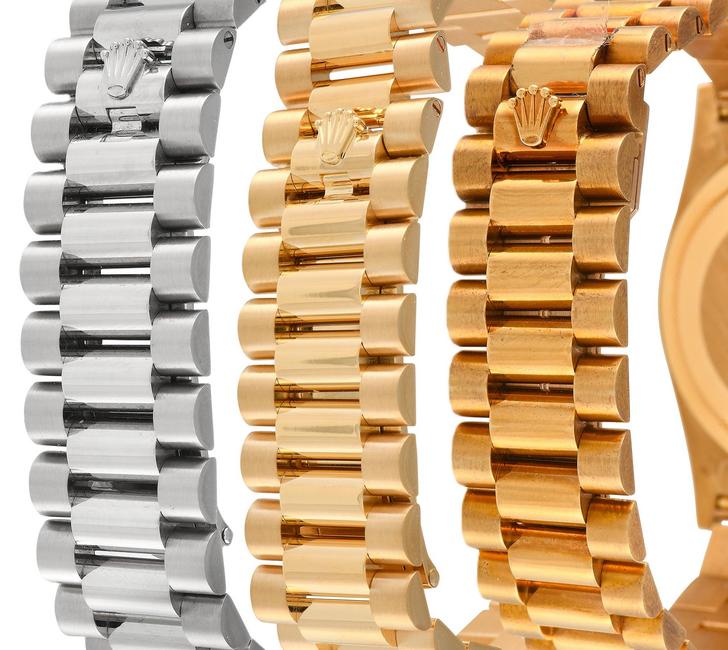
The Rolex President bracelet features a three-piece configuration with semi-circular links, it’s exclusively made in gold or platinum, and is only paired with Day-Date watches and some select Datejust watches for ladies.
Rolex Oysterflex Bracelet
The Oysterflex bracelet is Rolex’s newest bracelet design, released in 2015. At first glance it looks like a rubber strap, however, it has a metal blade inside that is then coated with black elastomer. This means it wears like a bracelet but looks like a sporty rubber strap. Rolex originally made the Oysterflex bracelet only for the Yacht-Master collection, but the company has since rolled it out to other models including the Daytona and the Sky-Dweller. Rolex Oysterflex bracelets are only available with gold Rolex watches.
Rolex Pearlmaster Bracelet (discontinued)
The Pearlmaster bracelet was Rolex’s jewelry watch bracelet style, made specifically for the release of the Pearlmaster watch in 1992. It features a five-piece configuration with curvy links and is exclusively available in gold or platinum. While the vast majority of Pearlmaster bracelets were paired with Pearlmaster watches, Rolex did make some special edition Day-Date watches with Pearlmaster bracelets in the 2000s called Rolex Masterpiece watches.
Learn More: How Many Links Does a Rolex Come With?
It’s also worth mentioning that Rolex Cellini (non-Oyster line) watches are paired with leather straps.
Rolex Reference Numbers
Every Rolex watch has a reference number, which is also known as the model number. The reference number tells you the watch model type, the material it’s made from, the approximate age of the watch, and in some cases, even the bezel style.
Reference Number Digits and Age
Early Rolex watches have four-digit reference numbers. For example, vintage Daytona ref. 6263, vintage Submariner ref. 5512, and vintage GMT-Master II ref. 1675. Around the late-1970s and 1980s, Rolex began transitioning to five-digit reference numbers. For example, Day-Date ref. 18038, Explorer II ref. 16550, and Daytona ref. 16520. Finally, in 2000, Rolex began issuing six-digit reference numbers. For example, Datejust 116234, Deepsea 116660, and GMT-Master II ref. 116710.
Therefore, although there are some exceptions, how many digits a Rolex reference number has can tell you the approximate age of the watch:
- Four-digit Rolex reference number: vintage model, produced until 1970s/1980s
- Five-digit Rolex reference number: neo-vintage/discontinued models, produced anywhere between late-1970s to early 2000s
- Six-digit Rolex reference number: modern model, produced after 2000
Reference Number and Model Type
The first few numbers of a Rolex reference will tell you what type of model it is. Below is a table outlining models and the corresponding reference numbers. We’ve chosen to only include five- and six-digit Rolex reference numbers.
| Rolex Model | Rolex Reference | Rolex Model | Rolex Reference |
| Air-King | 140xx, 1142xx, 1169xx, 1269xx | Date | 150xx, 152xx, 1152xx |
| Datejust 31 | 682xx, 782xx, 1782xx, 2782xx | Datejust 36 | 160xx, 162xx, 1162xx, 1262xx |
| Datejust II | 1163xx, | Datejust 41 | 1263xx |
| Day-Date 36 | 180xx, 182xx, 183xx, 1182xx, 1183xx, 1282xx, 1283xx | Day-Date II | 2182xx |
| Day-Date 40 | 2282xx, 2283xx | Daytona | 165xx, 1165xx |
| Explorer | 142xx, 1142xx, 2142xx, 1242xx | Explorer II | 165xx, 2165xx, 2265xx |
| GMT-Master I/ II | 167xx, 1167xx, 1267xx | Lady-Datejust | |
| Milgauss | 1164xx | Oyster Perpetual 28 | 2762xx |
| Oyster Perpetual 31 | 1772xx, 2772xx | Oyster Perpetual 34 | 142xx, 1142xx, 1242xx |
| Oyster Perpetual 36 | 1160xx, 1260xx | Oyster Perpetual 39 | 1143xx |
| Oyster Perpetual 41 | 1243xx | Oysterquartz | 170xx, 190xx, 191xx |
| Pearlmaster | 69xxx, 80xxx, 81xxx, 86xxx | Sea-Dweller | 166xx, 116xxx, 126xxx |
| Sea-Dweller Deepsea | 1166xx, 1266xx, 1366xx | Sky-Dweller | 326xxx |
| Submariner | 140xx, 1140xx, 1240xx | Submariner Date | 168xx, 166xx, 1166xx, 1266xx |
| Yacht-Master 37 | 2686xx | Yacht-Master 40 | 166xx, 1166xx, 1266xx |
| Yacht-Master 42 | 2266xx | Yacht-Master II | 1166xx |
Reference Number and Bezel Type
The second to last digit in a modern six-digit Rolex reference number denotes the bezel type. However, it’s important to note that this only applies to Rolex dress and classic watches and not to Rolex sports watches.
The two most important bezel code numbers you’ll want to know are 0 and 3.
- 0 = smooth bezel
- For example: Datejust 126303, Day-Date 228206
- 3 = fluted bezel
- For example: Datejust 126333, Day-Date 228236
Some Rolex references also have letters at the end of them. These letters are codes for the bezel colors or bezel gems, which are generally in French. However, there is one letter code that is in reference to the special green-tinted sapphire crystal of the Milgauss.
Rolex Reference Number Letter Codes:
| Rolex Reference Number Letters | Description | Rolex Watch Example |
| LN | Lunette Noir Black Bezel | Submariner 126610LN |
| LB | Lunette Bleu Blue Bezel | Submariner 126618LB |
| LV | Lunette Verte Green Bezel | Submariner 126610LV |
| BLRO | Bleu RougeBlue Red | GMT-Master II 126710BLRO |
| BLNR | Bleu Noir Blue Black | GMT-Master II 126710BLNR |
| CHNR | Chocolat Noir Brown Black | GMT-Master II 126715CHNR |
| VTNR | Vert NoirGreen Black | GMT-Master II 126720VTNR |
| RBOW | Rainbow | Daytona 116595RBOW |
| TBR | Tessellate Brillants (Non-Round) Diamonds | Day-Date 228398TBR |
| RBR | Ronde Brillants Round Diamonds | Datejust 278289RBR |
| SARU | Saphirs Rubis Sapphires Rubies | GMT-Master II 126755SARU |
| SANR | Sapphirs Noir Black Sapphires | GMT-Master II 116759SANR |
| SABR | Sapphirs Brilliants Sapphires Diamonds | Submariner 116659SABR |
| SABLV | Saphirs Bleu Vert Blue Green Sapphires | Pearlmaster 86348SABLV |
| SACO | Saphirs Cognac Cognac Sapphires | Daytona 116598SACO |
| SAFUBL | Saphirs Fuchsia BleuFuchsia Blue Sapphires | Pearlmaster 86349SAFUBL |
| SAJOR | Saphirs Jaune Orange Yellow Orange Sapphires | Pearlmaster 86348SAJOR |
| TEM | Tessellate Emeraude(Non-Round) Emeralds | Day-Date 228396TEM |
| GV | Glace Verte Green Crystal | Milgauss 116400GV |
Learn More: Rolex Serial Numbers: The Ultimate Guide
AUTHORIZED DEALERS & GREY MARKET
Over the past 15 years or so, we have witnessed a growth in demand, resulting in the infamous Rolex waiting list. Thus, prices for Rolex watches on the international secondary market have achieved unimaginable levels (peaking during the winter of 2021-2022) with a big gap between Rolex retail vs market prices. This led to the Maison’s commercial policy of imposing a maximum fixed list price on its dealers, the secondary market shows prices for second-wrist watches that are superior to list prices by a percentage that can vary up to several times the original price, in the case of the rarest and most valuable watches.
Learn more:
What Is A Grey Market Dealer & Why Should You Buy From One?
Rolex Watch Prices: Historical and Current From Actual Sales Numbers
How to Sell My Rolex Watch
Although this situation persists, average prices fell slightly during 2022, though the net annual change from the same period in the previous year remains positive. Thus, we find a very lively and active secondary market, composed of companies and individuals, where many are betting on the possibility that prices, after this normalization phase, will return to growth.
As for the official Rolex network, the company maintains iron control over the production cycle, taking great care of the quality and professionalism of its partners (all independent facilities). There are two types of licenses: ADs, which sell Rolex and other brands, and Rolex boutiques, which are mono-brand. Given the extreme confidentiality of the company and the strict secrecy under which it operates, it is tough to find news about the differences in commercial and operational terms of the two solutions, on which there are strict confidentiality agreements. Be that as it may, the levels of service and investment required to boast this brand are such that only the most qualified candidates can afford it. Still, they open up scenarios, especially after-sales, that are extremely interesting in the medium and long term.
Notable Rolex Models
The current Rolex catalog is divided into two main lines: Professional watches and Classic watches. In addition to these, there’s also the Cellini line of non-Oyster watches. While Rolex Professional watches, such as the Submariner, Daytona, and GMT-Master II, are exceedingly popular in today’s market, Rolex Classic watches, such as the Datejust and Day-Date, have been strong selling mainstays of the brand’s lineup for decades.
Read more:
The Most Popular Rolex Watches
What is the Best Entry-Level Rolex?
The Rolex Waiting List Explained
Rolex Professional Watches
As its name suggests, Rolex Professional watches were developed to meet the needs of specific groups, whether divers, pilots, scientists, or explorers. While Professional models are now regarded more as high-end sports watches rather than essential tool watches, Rolex still builds these highly capable and functional watches to exacting standards.
Submariner
Launched in 1953, the Rolex Submariner was the world’s first purpose-built dive watch waterproof to 100 meters (330 feet) deep. Fast-forward seven decades, and the Rolex Submariner has remained remarkably true to its original design. The Submariner, also known as the no-date Submariner, has always been exclusively available in stainless steel with black bezels and dials. Not only have the cases grown, going from 38mm to 40mm to now 41mm, but water-resistance ratings have also tripled. Materials have also improved; for instance, Rolex now uses Oystersteel (a corrosion-resistant 904L steel alloy) and has replaced aluminum bezels with ceramic ones.
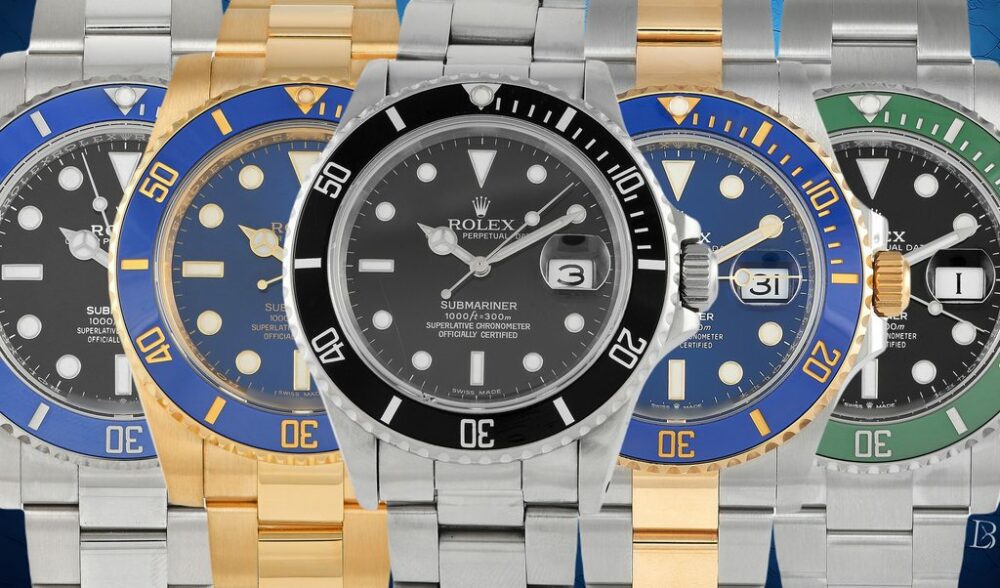
The most current Submariner watches have 41mm cases water-resistant to 300 meters (1,000 feet), unidirectional Cerachrom ceramic bezels, blue-glowing Chromalight lume on the dial, and new-generation automatic movements.
More on the Submariner:
How much can I get for my used Rolex Submariner?
Submariner Date
While the original Submariner was a time-only model, Rolex expanded the series in 1969 with the introduction of the Submariner Date, characterized by a date window at 3 o’clock and a Cyclops magnification lens above it. In comparison to the steel and black no-date Submariner, the Submariner Date lineup has always been more varied. Along with material choices such as steel, gold, and two-tone, Rolex also offers several dial and bezel colors like black, green, and blue. Rolex has also made diamond dial models, often referred to as Submariners with Serti dials.
The most current Submariner Date watches feature 41mm cases, which are 1mm larger than all the previous Submariner Date models. Steel versions are available with either black or green Cerachrom bezels while yellow gold and Yellow Rolesor models come with a choice of black or blue Cerachrom bezels. The white gold Submariner Date is exclusively fitted with a blue Cerachrom bezel.
Rolex Milgauss
Launched in 1956 to serve the scientific community, the Milgauss’ unique selling point was its anti-magnetic case. The name Milgauss is derived from the words “Mille” (one thousand) and “Gauss” (a unit of measurement for magnetism) because the watch was resistant to magnetic fields up to 1,000 Gauss. This capability was handy for scientists, engineers, and medical professionals with jobs that required time spent in high magnetic fields since too much magnetism can destroy a mechanical watch movement.
Although Rolex shelved the collection in the 1980s, the brand revived the antimagnetic Milgauss in 2007, complete with a larger case and the return of the iconic lightning bolt seconds hand. Another notable feature of the modern Milgauss was the option of a green-tinted sapphire crystal above the dial, which had never been seen before. The most current Milgauss watches feature 40mm steel cases, steel Oyster bracelets, green sapphire crystals (a.k.a. GV), and the choice of a black or electric blue dial, better known as the Z-Blue dial.
Sea-Dweller
Rolex released the Sea-Dweller in 1967, built with saturation divers in mind – particularly those who worked for the marine engineering company, COMEX. Saturation divers spend longer periods working and living underwater, alternating between dives and a dry pressurized habitat while breathing a special helium–oxygen mixture. Helium particles can seep into the watch, and when the divers ascend back to the surface, that gas build-up in the watch can cause enough pressure to pop the crystal off. Therefore, the helium escape valve (co-created by Rolex and Doxa) serves to automatically expel helium.
The Sea-Dweller also grew larger over the years and gained better water resistance. Available in steel or two-tone yellow gold and steel, the most modern Sea-Dweller models have 43mm cases (notably larger than its long-time 40mm dimensions) that are water-resistant to 1,220 meters (4,000 feet). They’re topped with black Cerachrom ceramic bezels, house black dials with date windows, and run on new-generation automatic movements.
Deepsea
In 2008, Rolex introduced the Deepsea as a special Sea-Dweller variant. Measuring a mammoth 44mm in size and boasting an incredible water resistance of 3,900 meters (12,800 feet), the Deepsea is Rolex’s most extreme dive watch. The original version came equipped with a black dial to match the black Cerachrom ceramic bezel. However, in 2014, Rolex unveiled a D-Blue dial version (featuring a blue-to-black gradient) in honor of James Cameron’s recording-breaking solo dive into the Mariana Trench.
Today, the Rolex catalog is home to both versions of the Deepsea “James Cameron” and Deepsea in black, both powered by new generation automatic movements and featuring slightly larger date windows and slightly slimmer Cerachrom bezels.
More on the Deepsea: Rolex introduces the Deepsea Challenge – It’s first ever Titanium watch!
Yacht-Master
In 1992, Rolex launched an entirely new model called the Yacht-Master. The Yacht-Master was positioned as an ultra-luxurious nautical watch, complete with a rotating timing bezel on top of its 100-meter waterproof Oyster case, and crafted entirely in 18k yellow gold. It wasn’t long until Rolex expanded the Yacht-Master lineup with more material options, sizes, and dial colors. A notable feature of the Yacht-Master collection is that it’s the only Rolex with the choice of a Rolesium model, which is defined as a steel case with a platinum bezel. What’s more, the Yacht-Master was the first Rolex watch to debut the new Oysterflex bracelet in 2015, which is a bracelet with an internal metal blade coated in black rubber.
Today, the Yacht-Master collection is the most varied of all the Rolex Professional models. Size options include 37mm, 40mm, and 42mm. Depending on the size, case material choices include Rolesium, Everose gold, yellow gold, white gold, and Everose Rolesor (two-tone rose gold and steel). There are also Cerachrom bezels, metal bezels, and gem-set bezels, not to mention Oyster bracelets or Oysterflex bracelets.
Yacht-Master II
In 2007, Rolex introduced the Yacht-Master II developed for the competitive sailor. Not only is the Yacht-Master one of Rolex’s largest watches, sporting a 44mm case, but it’s also one of the company’s most complicated to date. It features a regatta chronograph, complete with a programmable countdown mechanism with a mechanical memory.
Rolex used to make a white gold Yacht-Master II with a platinum bezel, however, that model has been discontinued. What remains in the collection are three variants: one in stainless steel, one in yellow gold, and one in two-tone steel and Everose gold. All versions are topped with a bright blue Cerachrom bezel, which is called a Ring Command bezel because turning it is how the wearer sets and synchronizes race start times.
Explorer
Rolex launched the Explorer watch in 1953 to honor mankind’s first recorded ascent to the top of Mount Everest. The Explorer watch has always been one of Rolex’s most understated sports watch models thanks to its compact case, time-only dial, and no-nonsense Oyster bracelet. However, despite the lack of bells and whistles, the Explorer is highly recognizable because of its dial, characterized by oversized Arabic numerals at 3, 6, and 9 o’clock.
Throughout most of its history, the Explorer watch featured a 36mm case and was only available in stainless steel. Rolex did increase the size of the Explorer to 39mm in 2010, however, in 2021, the Explorer returned to its original 36mm dimensions. That same year, Rolex unveiled, for the very first time, a two-tone Explorer in steel and yellow gold.
Explorer II
While the Explorer I was designed as a simple, compact, and robust waterproof watch, the Explorer II was developed with a little more functionality. Designed for spelunkers, the Explorer II’s main purpose was to allow wearers to differentiate between day and night even whilst in a dark cave. As such, the original Explorer II featured a large arrow-tipped fourth hand on the dial that pointed to a 24-hour fixed bezel to indicate AM/PM.
After the first reference, Rolex upgraded the Explorer II to become a full GMT watch (along with the original date window) by decoupling the two hour hands on the dial. Today, the most modern versions of the Explorer II feature 42mm stainless steel cases topped with a 24-hour steel bezel, an orange 24-hour hand on the dial, and a choice between a black or white “Polar” dial.
GMT-Master
Rolex introduced the GMT-Master watch in 1955 for Pan Am pilots to keep track of two time zones at once – reference time (which was Greenwich Mean Time or GMT back then) and local time. The clever design had two (synced) hour hands on the dial and a rotating 24-hour bezel. One hour hand made one full revolution every 12 hours while the other every 24 hours. Therefore, to set the second time zone, the wearer simply had to turn the bezel to align the correct hour with the 24-hour hand.
One of the defining characteristics of the original GMT-Master was its bi-colored blue and red bezel, better known as the “Pepsi” bezel. This was yet another clever design touch whereby the wearer could easily identify if it was day (red section) or night (blue section) in that second time zone. The GMT-Master collection is a varied one with several materials to choose from, such as steel, yellow gold, and two-tone steel and gold, as well as different bezel colorways like the blue and red “Pepsi GMT,” and the brown and gold “Root Beer GMT,” as well as an all-black option. Rolex discontinued the GMT-Master collection in 1999 to focus exclusively on the GMT-Master II.
GMT-Master II
In the early-1980s, Rolex released the GMT-Master II to sit alongside the GMT-Master. The difference between these two is that the GMT-Master II has decoupled hour hands while the GMT-Master has synced hour hands. Therefore, on a GMT-Master II watch, the bezel can be left at the zero position and the 24-hour hand on the dial can be adjusted (independently of the 12-hour hand) to indicate that second time zone. The very first GMT-Master II model was exclusively available in stainless steel and fitted with a red and black “Coke” bezel, however, Rolex soon expanded the line to include other materials and bezel colors.
Today, the most modern GMT-Master II models have Cerachrom ceramic bezels on top of the 40mm cases and are available in stainless steel, Everose gold, two-tone Everose gold and steel, and white gold. Some newer bezel colors include the blue and black “Batman” and brown and black, which is the newer version of the old-school “Root Beer.” Most recently, Rolex released a left-handed version of the GMT-Master II, fitted with a never-before-seen green and black bezel.
Learn More: What is a GMT Watch?
Cosmograph Daytona
In 1963, Rolex launched the Cosmograph Daytona as its flagship chronograph collection for motorsports, complete with a tachymeter scale on the bezel. Vintage Daytona watches, which measure around 37.5mm, run on manual-winding movements and are some of the most collectible vintage Rolex watches in the market today – especially those fitted with “exotic dials,” which are better known as Paul Newman dials. Paul Newman dials are nicknamed so because the famous actor wore one; his own Daytona “Paul Newman” watch sold for a record-breaking $17.8 million in 2017.
Related Daytona Content:
Which is the Best Rolex Daytona to Buy?
How Much Can I Get for my Rolex Daytona?
Rolex Daytona Le Mans in White Gold
The Rolex Daytona La Montoya – Watch Modification at Its Finest
In 1988, Rolex revamped the entire Daytona collection by introducing larger 40mm automatic chronograph models powered by Zenith El-Primero-based movements. These neo-vintage models are also known as the “Zenith” Daytona watches.
Finally, in 2000, Rolex unveiled a brand new Daytona collection, this time featuring in-house-made movements. The most modern Daytona watches are available in steel, two-tone yellow gold and steel, yellow gold, white gold, Everose gold, and platinum. Some models have a metal bezel while others feature a Cerachrom ceramic bezel. While most Daytona watches are paired with Oyster bracelets, select gold models come fitted with the sporty black rubber Oysterflex bracelet.
Air-King
The Air-King is one of Rolex’s oldest collections, initially launched after World War II as a way for the founder of Rolex to honor British Royal Air Force fighter pilots. Older versions of the Air-King are simple and compact Rolex watches, featuring 34mm cases and minimalist time-only dials.
However, in 2016, Rolex introduced a redesigned Air-King model, which sports a much larger 40mm steel case that houses a dynamic black dial. The dials of the contemporary Air-King watch not only blend hour markers (at 3, 6, and 9) and minute markers, but also include a yellow Rolex crown and the Rolex name in green. There’s also a green seconds hand and the “Air-King” name in its signature vintage font. The most modern Air-King model came out in 2022 and the watch now includes crown guards around the winding crown as well as a new generation automatic movement.
Classic Watches
The Rolex Classic watches line is home to some of the longest-running and most recognizable models ever created by the brand. From entry-level models such as the Oyster Perpetual and the fan favorite Datejust to the ultra-prestigious Day-Date President and cutting-edge Sky-Dweller, the Rolex Classic collection has plenty to offer.
Oyster Perpetual
The Oyster Perpetual collection, which is Rolex’s entry-level line, merges two of the company’s most important innovations: the waterproof Oyster case and the self-winding Perpetual movement. These watches represent Rolex watches stripped down to the core. Side note: the Oyster Perpetual watches shouldn’t be confused with the broader Rolex Oyster Perpetual range, which again, denotes any Rolex watch (be it a Daytona, Submariner, GMT-Master, Explorer, Day-Date, and so on) that is both water-resistant and automatic.
The Rolex Oyster Perpetual watch has been around since 1931, therefore, it’s a highly varied collection available in various sizes and materials, and featuring plenty of dial and bracelet options. However, modern Oyster Perpetual watches are exclusively available in stainless steel with smooth bezels and Oyster bracelets. Current sizes include 28mm, 31mm, 34mm, 36mm, and 41mm. (Recently discontinued sizes include 26mm and 39mm). Dial colors range from subtle tones like silver and black to vibrant hues like turquoise and green.
Datejust
Rolex released the Datejust watch in 1945 to celebrate the brand’s 40th anniversary. While its defining design trait is the date window at 3 o’clock, the Datejust also debuted the Jubilee bracelet. Less than a decade after the Datejust release, Rolex invented the Cyclops lens to magnify the date, and today, all Datejust watches have this essential pairing. In 1957, Rolex expanded the Datejust collection with the introduction of the Lady-Datejust, which was similar in style but made smaller.
For most of the Datejust’s history, men’s models were sized at 36mm, midsize models were sized at 31mm, and women’s models were sized at 26mm. However, that changed in 2009 when Rolex introduced the (now-discontinued) Datejust II with a larger 41mm case. A few years later, Rolex also increased the Lady-Datejust to 28mm. And finally, Rolex replaced the Datejust II with the updated Datejust 41. The modern Datejust collection is home to the Lady-Datejust 28, Datejust 31, Datejust 36, and Datejust 41, available in a vast assortment of case metals, bezel styles, dial designs, bracelet types, and price points.
More on the Datejust: What is the Price of a Rolex Oyster Perpetual Datejust?
Day-Date
Rolex introduced the Day-Date watch in 1956, positioned as the company’s most prestigious timepiece. As its name implies, the watch displays both the date (at 3 o’clock) and the day (at 12 o’clock, which is actually written out in full. The release of the Day-Date also introduced a brand new Rolex bracelet called the President bracelet, characterized by a three-piece configuration of semi-circular links. The Day-Date is better known as the Rolex President watch – not only because of that distinctive bracelet but also because some of the most powerful and influential people of the 20th Century (yes, even Presidents) chose to wear this classic Rolex watch. Rolex Day-Date watches are exclusively made from gold or platinum, and often feature diamond embellishments.
For five decades, Rolex only ever made the Day-Date watch with a 36mm case size. In the 2000s, a special edition Day-Date called the Masterpiece came out, featuring 39mm cases and Pearlmaster bracelets. In 2008, the Day-Date II made its debut, featuring an even larger 41mm case. However, by 2015, Rolex replaced the Day-Date II with the Day-Date 40, complete with a new-generation automatic movement. The modern Rolex Day-Date President collection is now home to Day-Date 36 and Day-Date 41 models, both versions available in three shades of gold (yellow, white, Everose) and platinum, with or without diamonds.
More on the Day-Date:
How Much Does a Rolex Day-Date Cost?
The Best Rolex Day-Date Alternatives
Slate Ombré Dial for Rolex Day-Date 40
Rolex Sky-Dweller
The newest addition to the Rolex Classic watch range is the Sky-Dweller, which Rolex introduced in 2012. The Sky-Dweller is not only the newest but also one of the most complicated modern Rolex watches, featuring two time zones, a month indicator, a date window, and a Saros annual calendar. That annual calendar mechanism means that if the watch is continuously running, the wearer only needs to correct the watch once a year (on March 1st) because the watch will automatically accommodate for 30 or 31 days. Furthermore, the Sky-Dweller’s fluted bezel is a Rind Command bezel, meaning that turning it is how the wearer selects which of the various functions to set.
During the early days of the Sky-Dweller, Rolex only made the watch available in yellow gold, white gold (discontinued), and Everose gold, some with matching Oyster bracelets and some with leather straps. However, Rolex eventually expanded the collection with both a two-tone steel and yellow gold version, as well as a steel version with a white gold bezel. Today, the Rolesor Sky-Dwellers come with a choice of an Oyster or Jubilee bracelet while the gold Sky-Dwellers offer the option of an Oyster or Oysterflex bracelet.
More on the Sky-Dweller:
How Much Does a Rolex Sky-Dweller Cost?
Oysterquartz (Discontinued)
Although Rolex only makes automatic watches today, the company did make some quartz watches in the past. In fact, Rolex worked for five years to develop in-house-made quartz movements. The Oysterquartz was released in 1977 and Rolex made two main versions: the Oysterquartz Datejust and the Oysterquartz Day-Date.
In addition to being quartz versions of two of Rolex’s most famous classic watches, the Oysterquartz Datejust and the Oysterquartz Day-Date also had slightly different designs from their mechanical counterparts. Oysterquartz watches have angular cases and integrated bracelets, both of which were right on-trend for the 1970s.
Related Content: Rolex Quartz Watches: The Complete Guide
Rolex Cellini line
Introduced in the 1960s, the Cellini line is Rolex’s assortment of non-Oyster (not water-resistant) dress watches. It takes its name from Benvenuto Cellini, a sculptor and goldsmith from the Renaissance era. Early Cellini watches showcased Rolex’s creative style as the collection included a bevy of case shapes, dial treatments, intricate bracelets, and sometimes, special gem-setting techniques too. Cellini watches are always made from precious metals (gold or platinum, and there are manual-winding, automatic, and quartz versions. In the 1990s and 2000s, Rolex began offering sub-collections within the Cellini line including watches such as the Cellini Cestello, Cellini Cellinium, and Cellini Prince. In 2014, Rolex redesigned the entire Cellini line so that all variants featured similar designs – such as 39mm gold cases, double fluted and smooth bezels, and automatic movements – but different functions.
Cellini Moonphase
The newest and last remaining Cellini model in the current Rolex catalog, the Cellini Moonphase debuted in 2017. The moonphase complication is something Rolex hadn’t produced since the 1950s.
Cellini Dual Time (Discontinued)
The Cellini Dual Time was part of the collection revival of 2014 and it features a second time zone subdial at 6 o’clock, complete with a day/night indicator.
Date (Discontinued)
The Cellini Date was part of the collection revival of 2014 and it features a pointer date subdial at 3 o’clock.
Time (Discontinued)
The Cellini Time was part of the collection revival of 2014 and it is the simplest of the collection with just a trio of hands at the center for the hours, minutes, and seconds.
Cestello (Discontinued)
An older Cellini model, the Cestello is an ultra-thin Rolex watch with flat bezels and hinged lugs. Available in 36mm and 26mm sizes, as well as with manual winding or quartz movements.
Cellinium (Discontinued)
An older Cellini model, the Cellinium is a slim, manual-wind Rolex watch in platinum. Available in 38mm or 35mm sizes, the Cellinium dials are home to hour and minute hands at the center and a running seconds subdial at 6 o’clock.
Related Content:
New and Discontinued Rolex Watches for 2023
Your Go-to Guide to Rolex Nicknames
Notable Patrons & Owners
Worn by the most famous and influential athletes, artists and politicians in the world, Rolex watches are an enduring feature of reaching the pinnacle of success.
Rolex watches have graced the wrist of the best-known people worldwide. Rolex is the company that invented both sports sponsorships, with its support for such feats as the crossing of the English Channel by swimmer Mercedes Gleitze, to the conquest of Mount Everest, where Sherpa Tenzing took an experimental version of the Explorer all the way to the highest peak of the world, Mount Everest.
Watches in Pop Culture
Rolex watches have had a significant influence on literature and film: just think of the James Bond saga, which in Fleming’s novels was described as wearing a Rolex watch (assumed to be an Explorer), which the films in the series, especially those starring the stainless Sean Connery, proceeded to launch among the movie-going public and beyond.
Needless to say, Rolex is also remembered for being the original watch of the world’s most famous secret agent, James Bond. But apart from him, many less glamorous people have worn watches with the Crown on occasions where Rolex watches have reached the limelight, making this brand the most famous horology company in the world.
One of Rolex’s most essential and famous watches, the Daytona, is closely associated with the name of Paul Newman, to whom it was given by his wife, actress Joanne Woodward, with an engraving on the case back that reads “Drive Carefully Me.” But speaking of automobile-themed sports watches, few know that Steve McQueen, who continued through his performance to launch the myth of the TAG Heuer Monaco, was actually a loyal Rolex customer who mainly wore a Submariner.
Other people that Rolex counts among its customers include several U.S. Presidents like Eisenhower and Lyndon Johnson (who wore the famous Rolex President), a statesman such as Winston Churchill, the renowned political rights activist Martin Luther King, athletes such as Roger Federer and Tiger Woods, and an investor known as Oracle of Omaha, Warren Buffett.
Sponsorships & Collaborations
Rolex was among the first watch companies, if not the first, to introduce the concept of sponsorship into its corporate image, supporting individual athletes or sponsoring sports competitions. Rolex’s collaborations with various institutions in the most diverse fields of art, sports, and culture are now a well-ingrained part of Rolex culture.
Arnold Palmer
As early as the late 1950s, Rolex forged several partnerships with athletes and teams in sports such as horseback riding, sailing, and golf, where the company sponsored one of the greatest, Arnold Palmer, going so far as to partner with some of the most prestigious tournaments in this discipline today.
Formula 1
In 1968, Rolex became a partner of one of the greatest ever Formula 1 champions, Jackie Stewart, and since 2013 has been a Global Partner and official watch of the entire Formula 1 circuit.
Wimbledon & the Grand Slam Tournaments
In tennis, after its 1978 debut as the sponsor of the world’s most iconic competition, namely Wimbledon, Rolex now sponsors all four Grand Slam tournaments, as well as several top tennis players who participate each year.
In the arts, Rolex is a partner in opera as the watch of significant institutions such as La Scala in Milan, the Royal Opera House in London and the MET in New York, legendary performers such as Kiri Te Kanawa and Placido Domingo, conductor Gustavo Dudamel, and the Vienna Philharmonic Orchestra, but also great performers of more popular music, such as crooner Michael Bublé.
Since 2017, Rolex, in collaboration with the Academy of Motion Picture Arts and Sciences, has become Proud Sponsor of the Oscars as well as of the new Academy Museum of Motion Pictures in Los Angeles.
Finally, following the original vocation of the Wilsdorf Foundation, Rolex has activated several social initiatives worldwide, one of the most important of which is represented Rolex Awards for Enterprise, a program active since 1976 that over the years has supported 150 projects that have contributed significantly to improving people’s lives and protecting our planet.
FREQUENTLY ASKED QUESTIONS ABOUT ROLEX WATCHES
- How much is a Rolex watch?
A Rolex watch costs anywhere from $5,300 to hundreds of thousands of dollars when purchased new at retail. However, the secondary market offers an even wider range of prices where Rolex watches can cost anywhere from $2,000 to over a million. Due to the exceedingly high demand for modern Rolex watches, prices on the secondary market are almost always higher than the manufacturer’s suggested retail prices (MSRP). Expect to pay anywhere from 50% to 140% over MSRP for the hottest Rolex watches like Daytonas, Submariners, and GMT-Masters.
- Where are Rolex Watches Made?
Rolex watches are made in Switzerland. Rolex is one of the most vertically integrated watch brands in the world with virtually all of its watch components made in-house. Rolex divides its entire operation across four main sites in Switzerland: Geneva, Plan-les-Ouates, Chêne-Bourg, and Bienne.
- Do Rolex watches hold their value?
Yes, Rolex watches are known to hold their value better than most any other watch brand. What’s more, some Rolex watches even become more valuable over time. While not every single Rolex watch appreciates, many Rolex models can be re-sold at prices close to their original prices.
- Why are Rolex watches so expensive?
Rolex watches are expensive because they are manufactured by one of the most famous luxury brands in existence. The Rolex name is recognized across the globe; even people who aren’t into watches understand that Rolex is synonymous with quality, prestige, and success. In some circles, a Rolex watch is as good as cash. The Swiss watchmaking giant uses premium materials, cutting-edge engineering, and highly specialized labor to craft its collection of coveted high-end timepieces.
- Are Rolex watches a good investment?
Yes, Rolex watches are good investments for several reasons. First of all, they are highly valuable luxury goods with strong resale prices. It’s not uncommon, especially in today’s robust market, for Rolex watches to sell at higher-than-retail prices on the secondary market. Secondly, even if you’re not interested in selling your timepiece, Rolex watches are also a good investment because they are built to last several lifetimes. This means you can pass down your watch for the next generation to enjoy, which is priceless. Finally, Rolex watches are known to be some of the most durable and finest quality luxury watches ever made – and investing in quality (over quantity), is always a good strategy.
